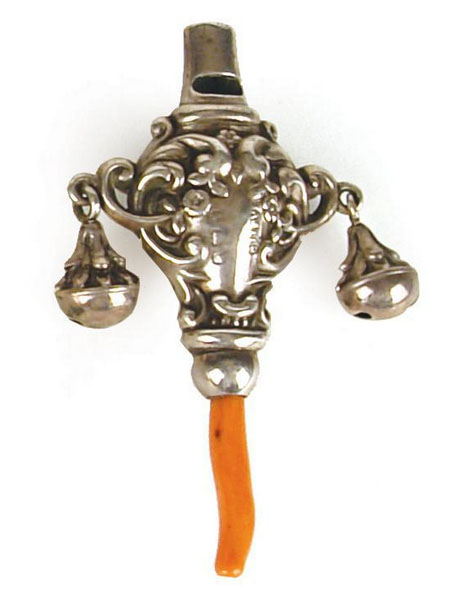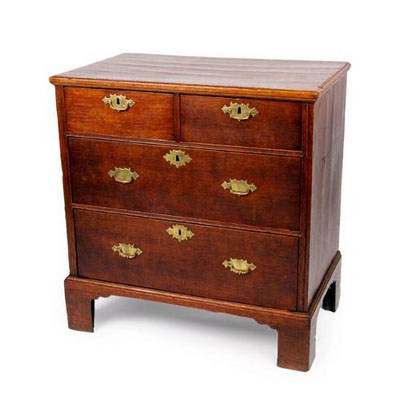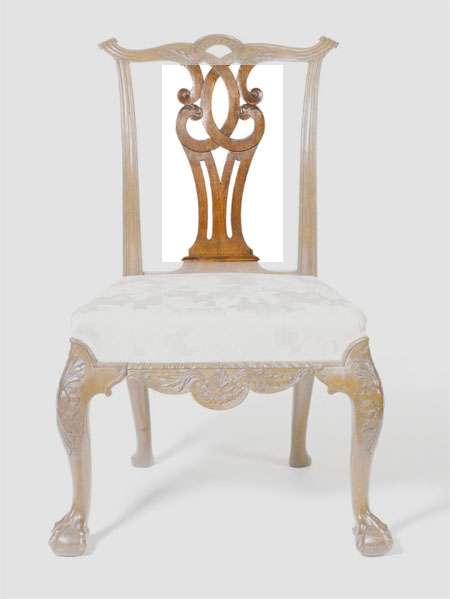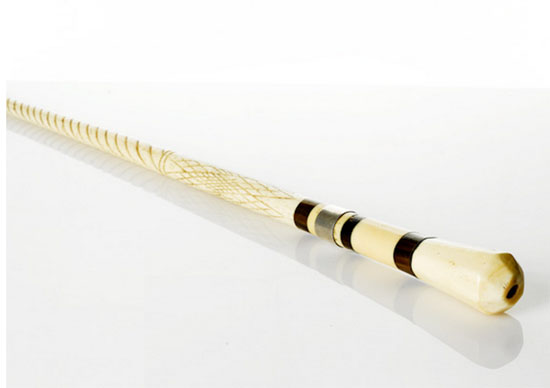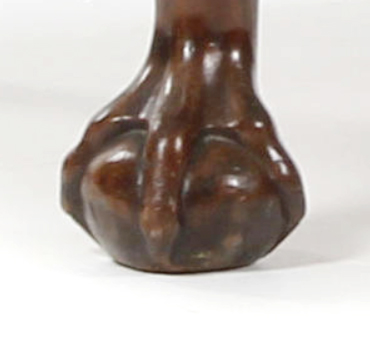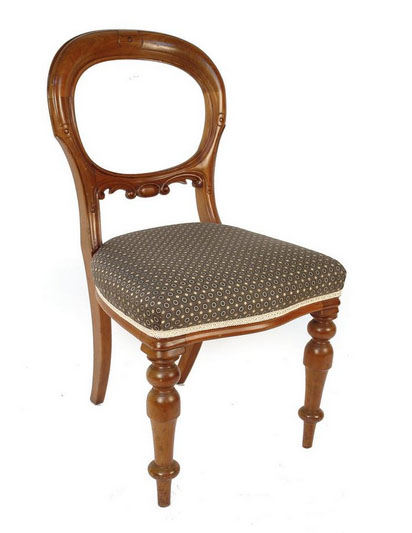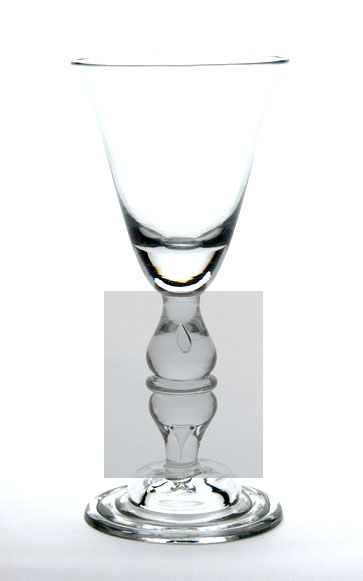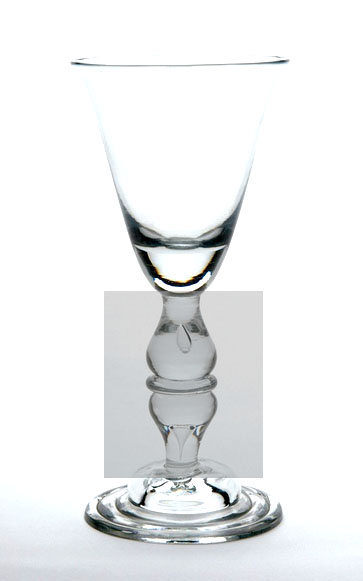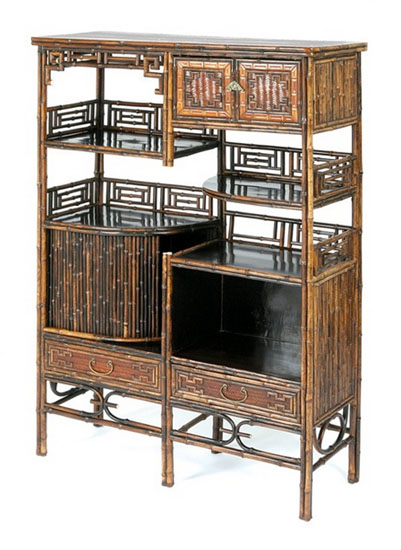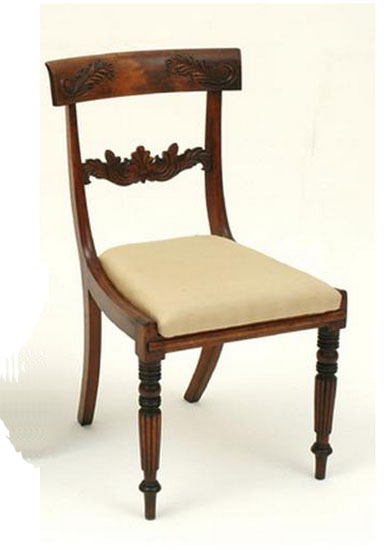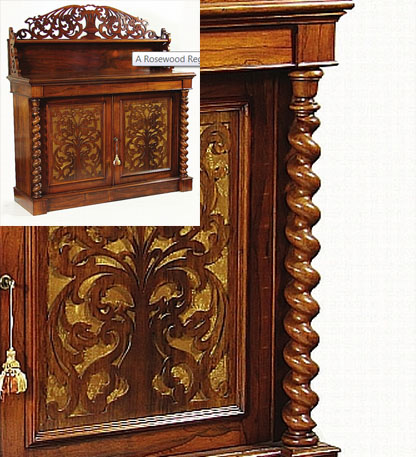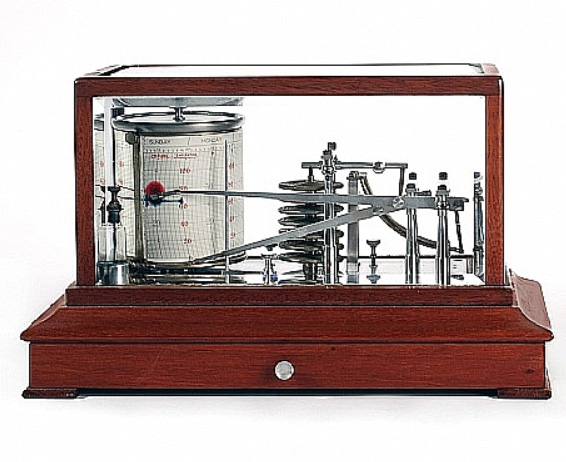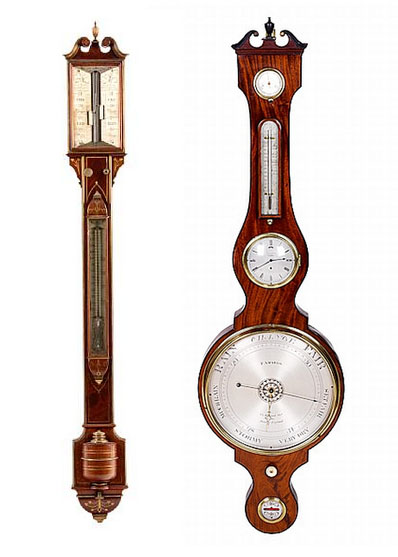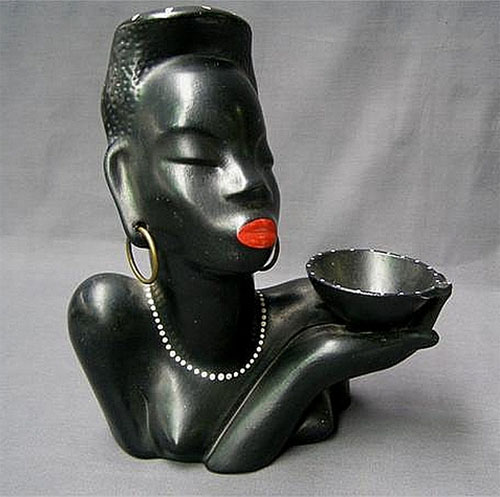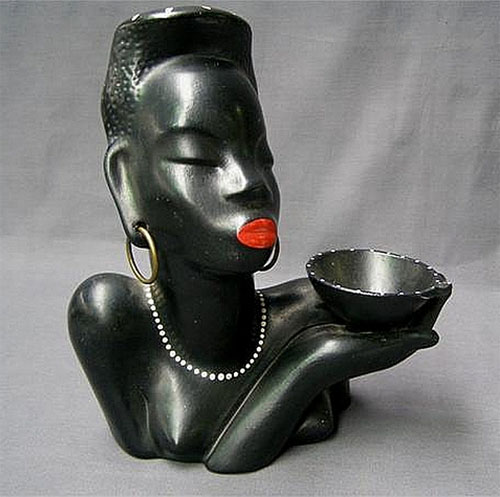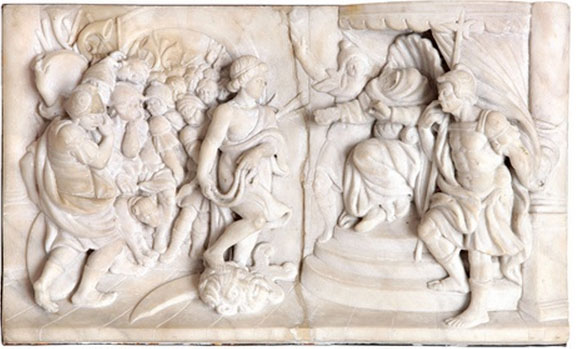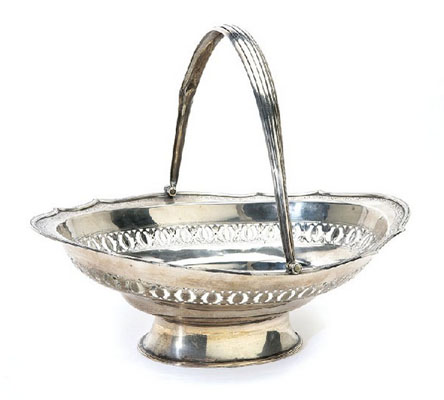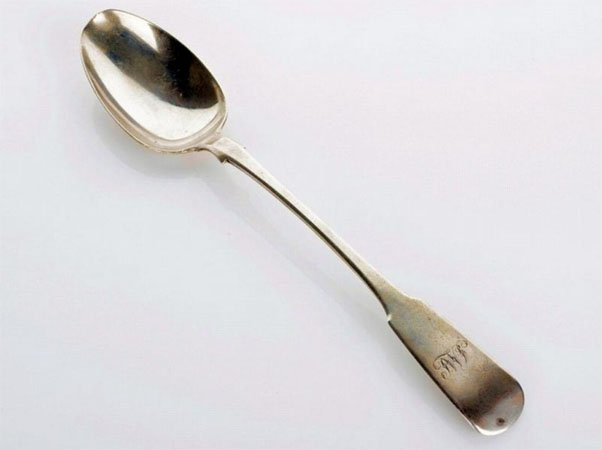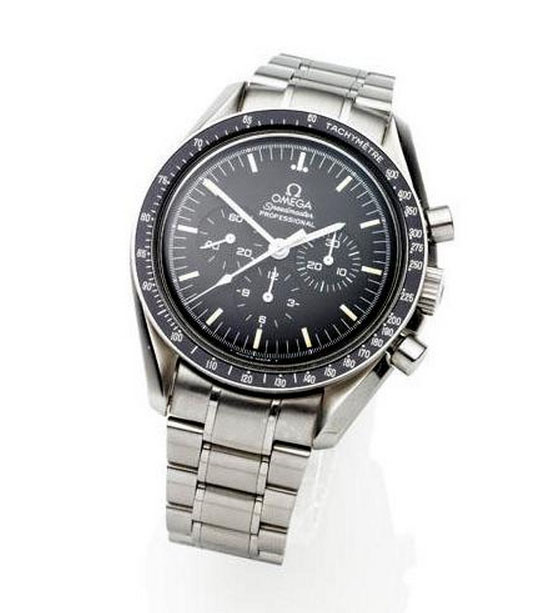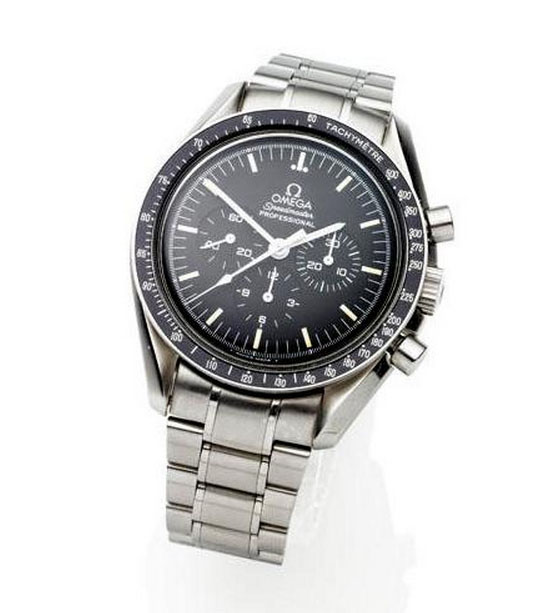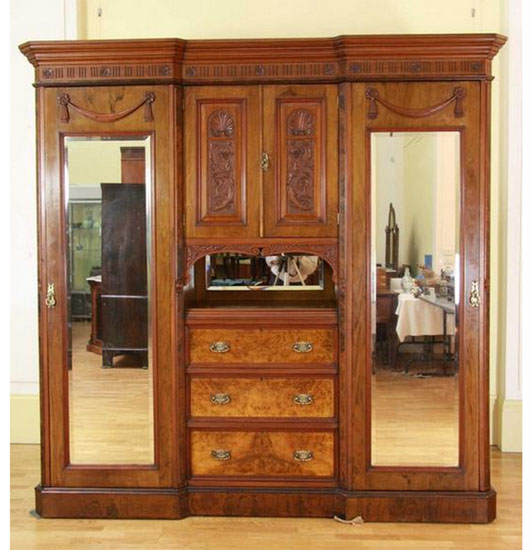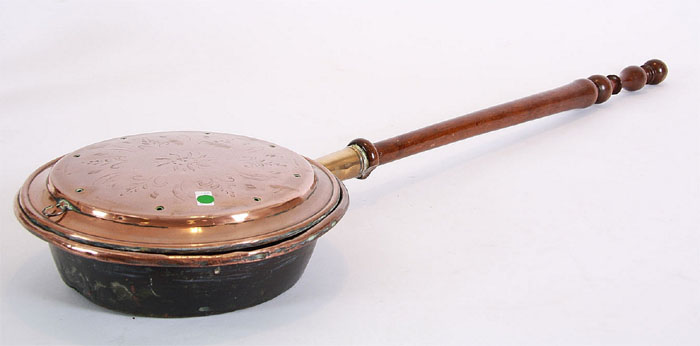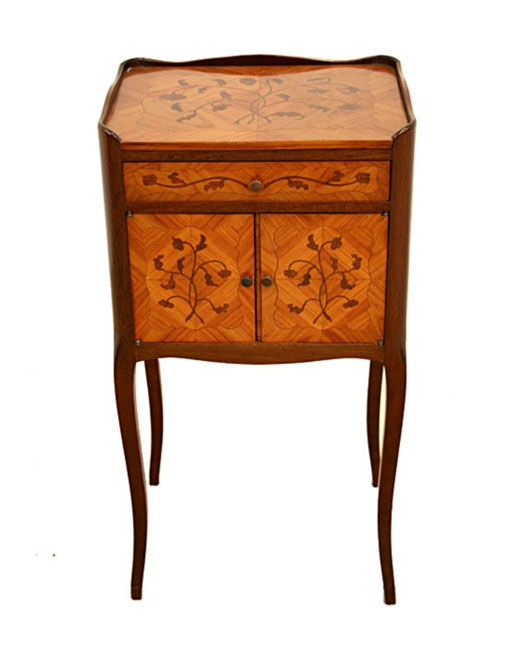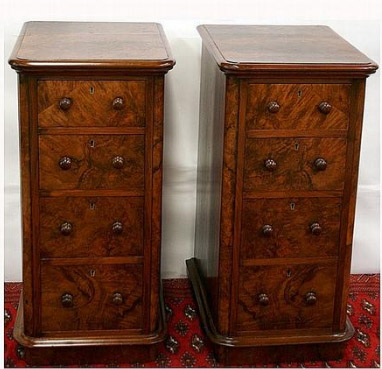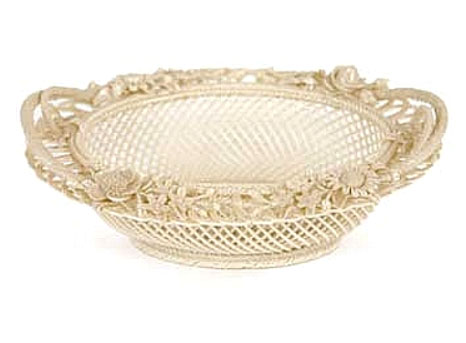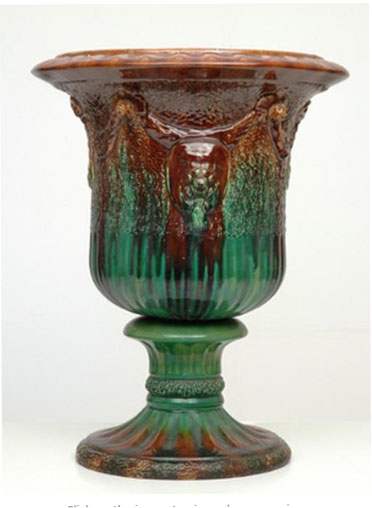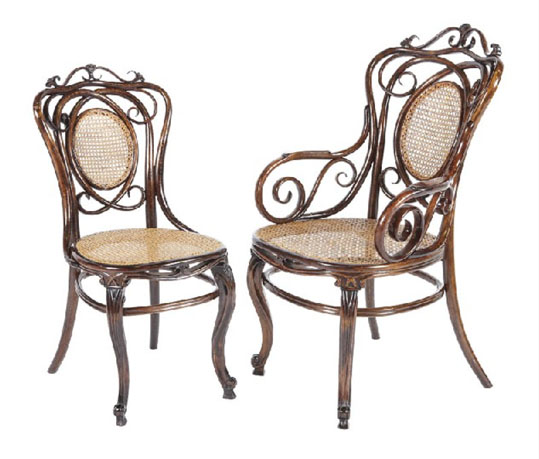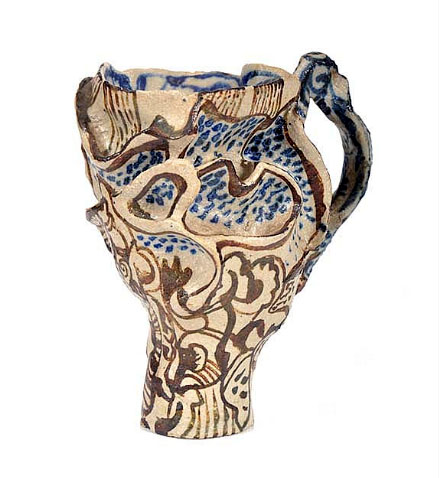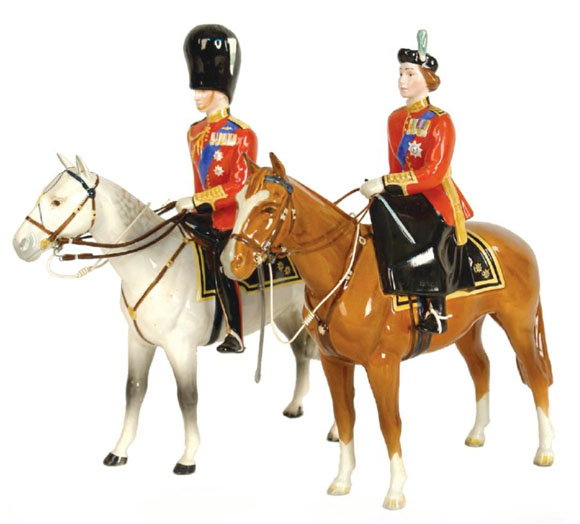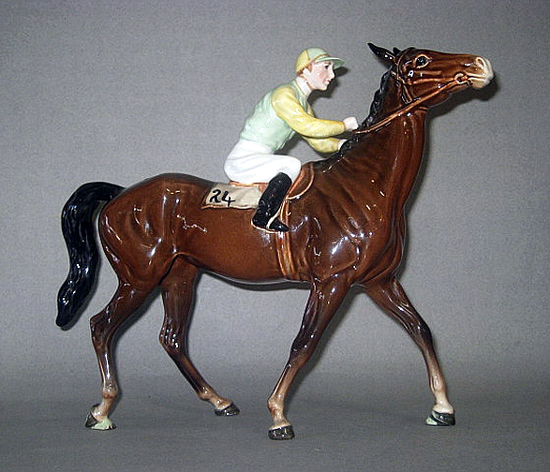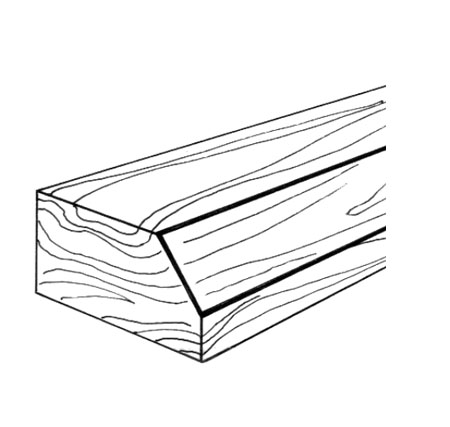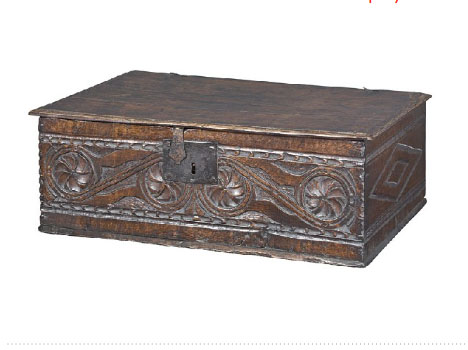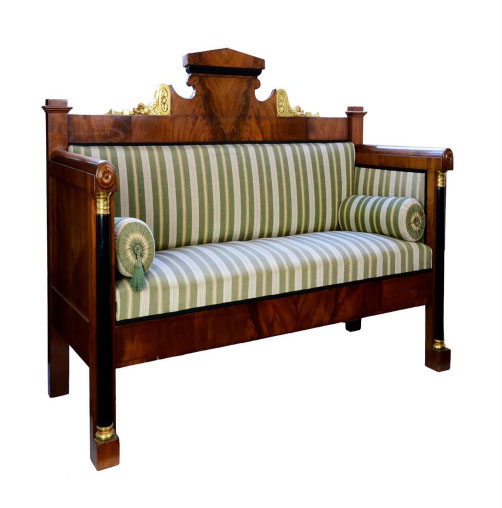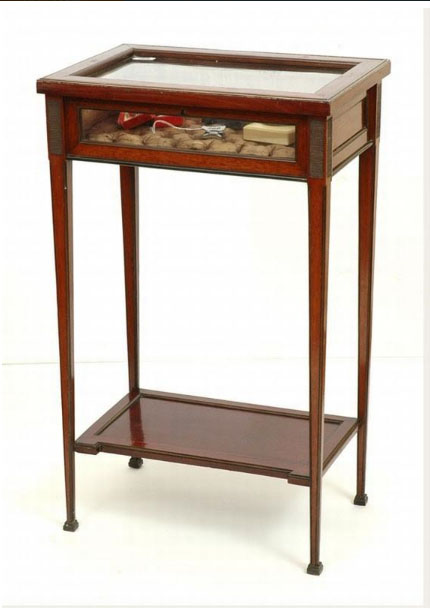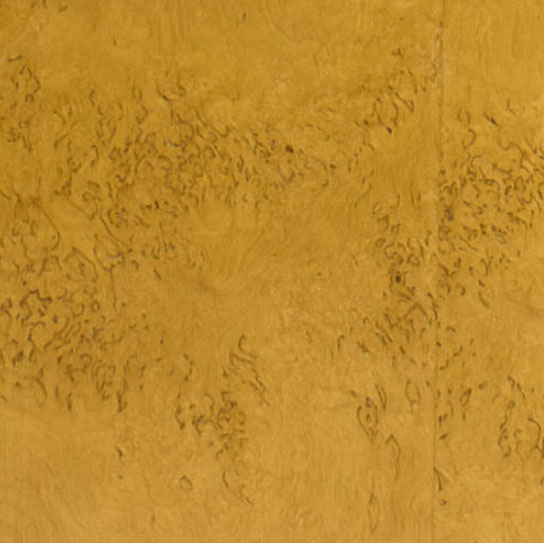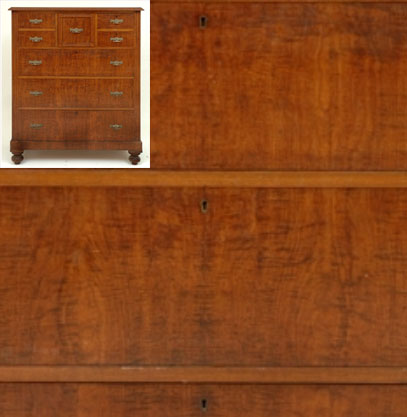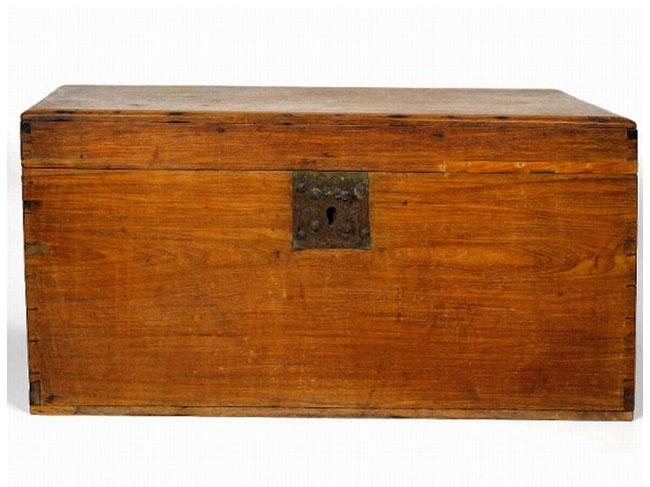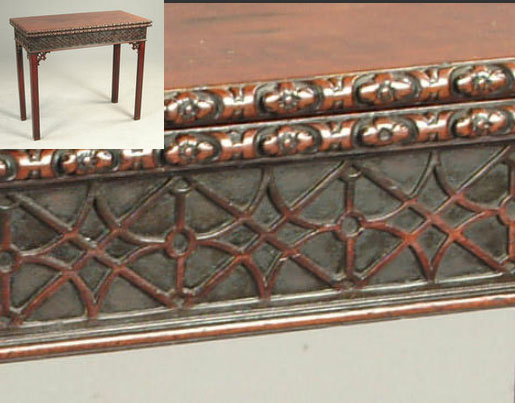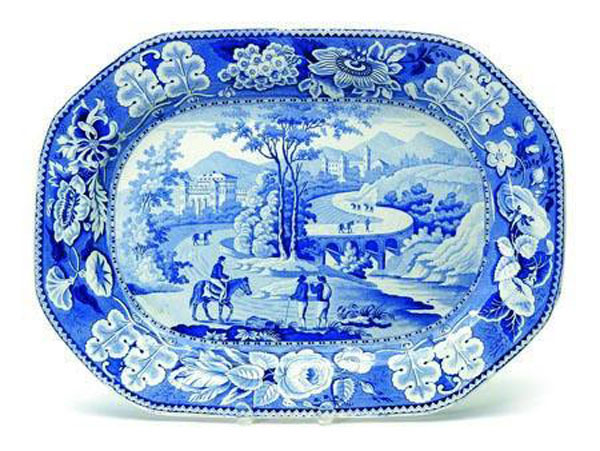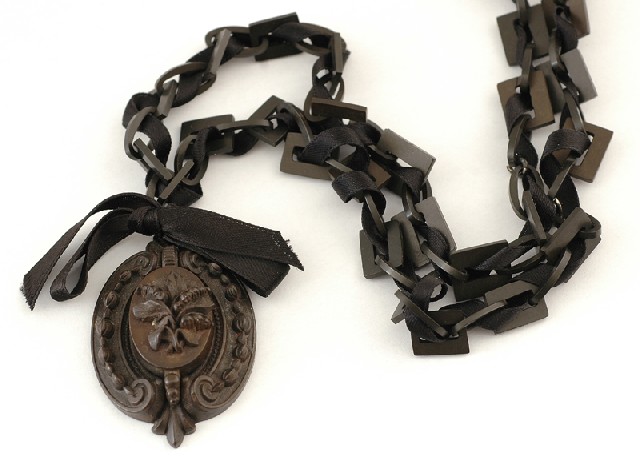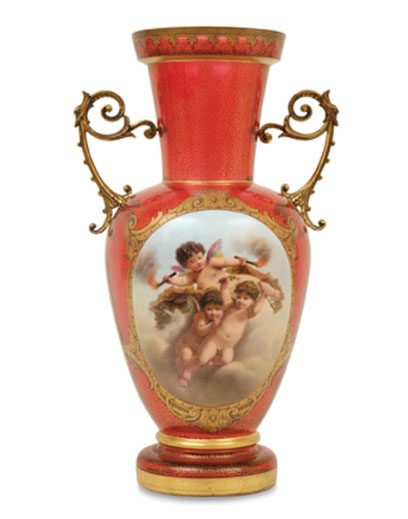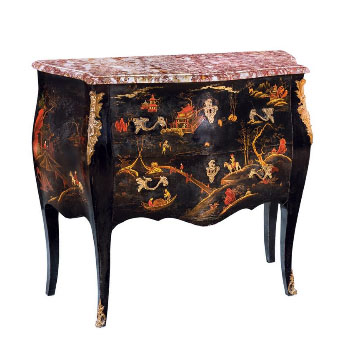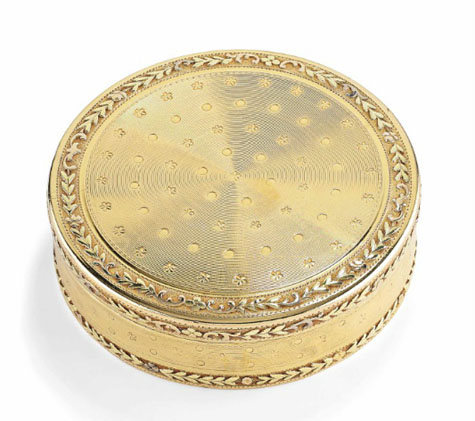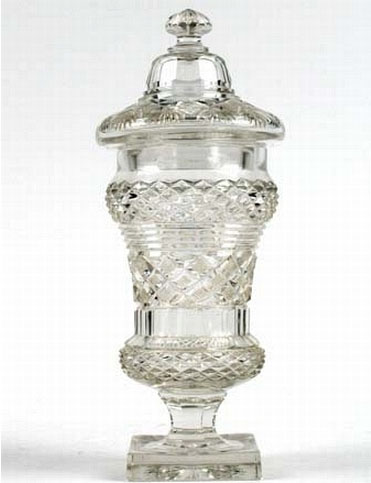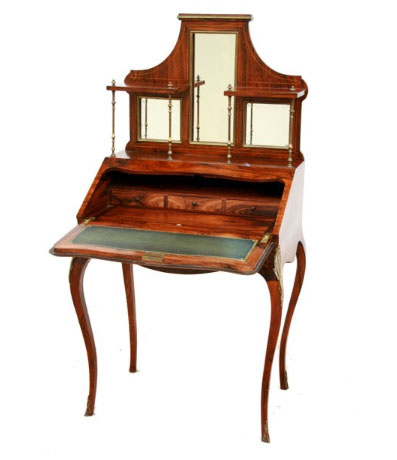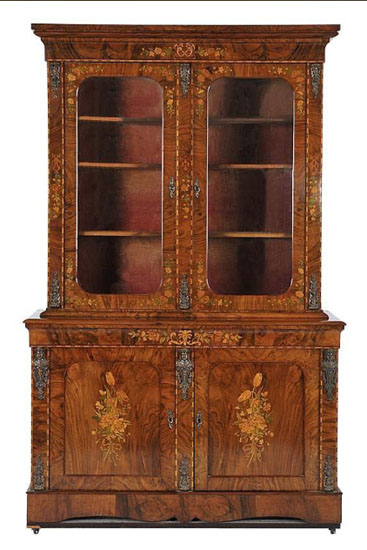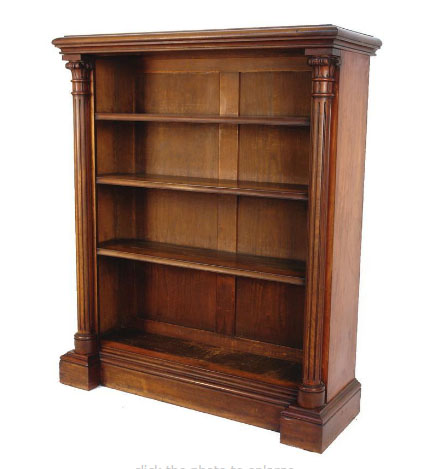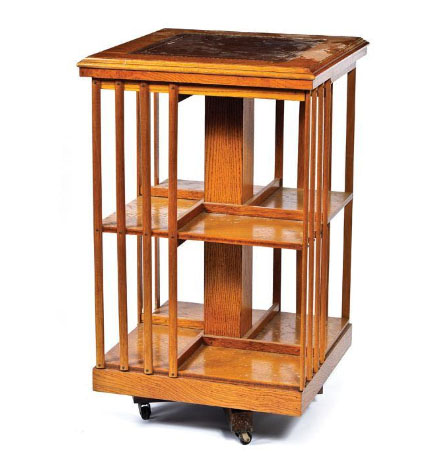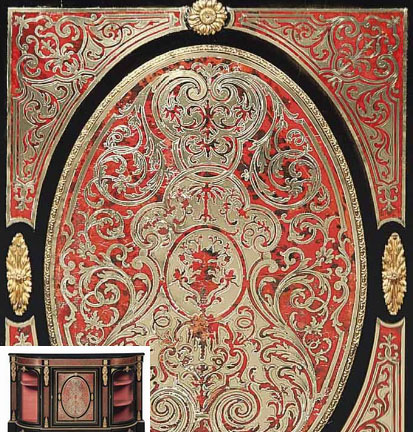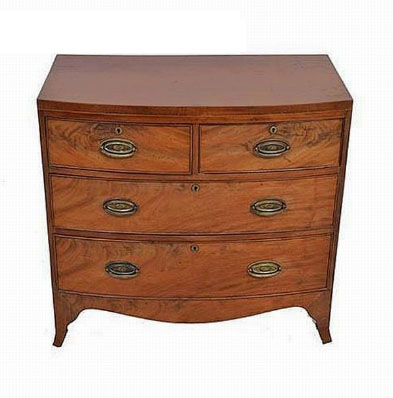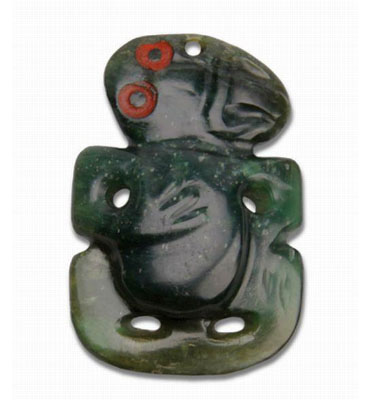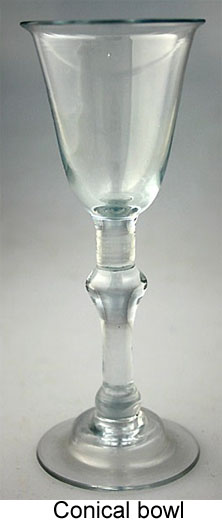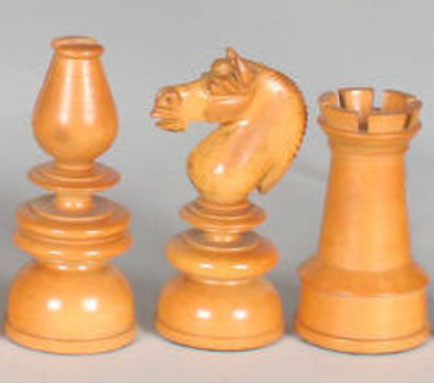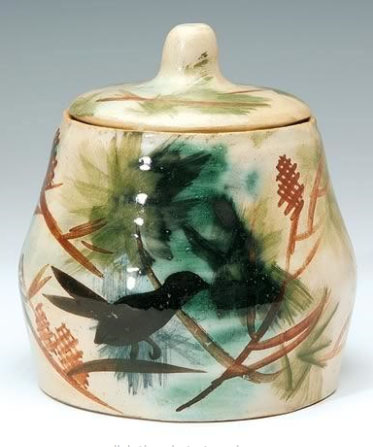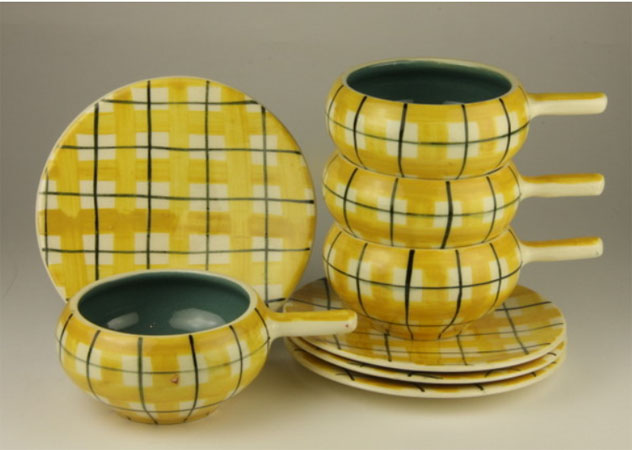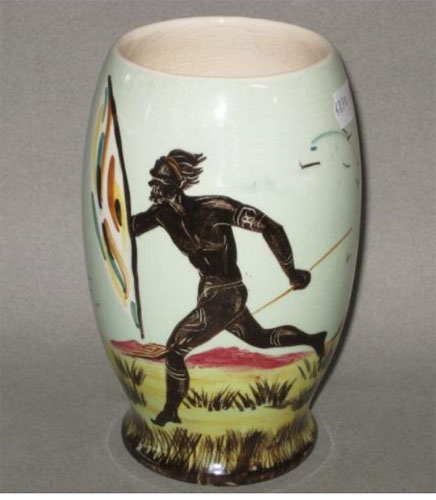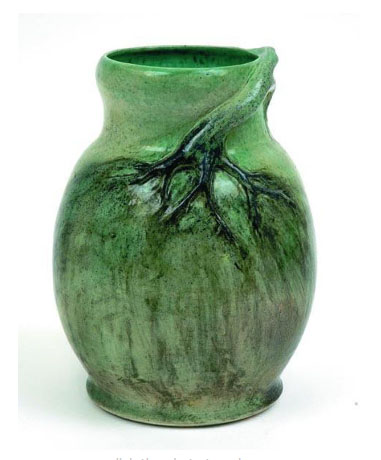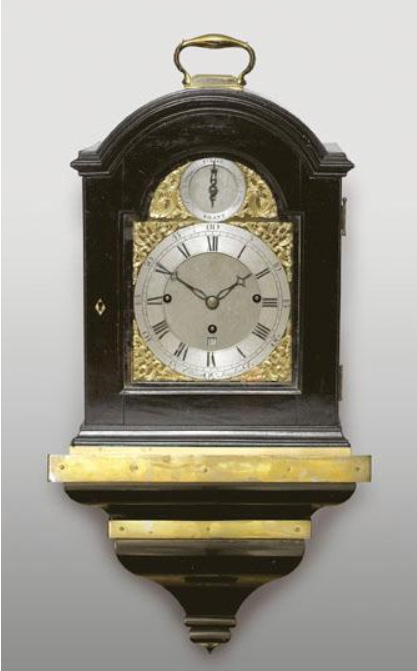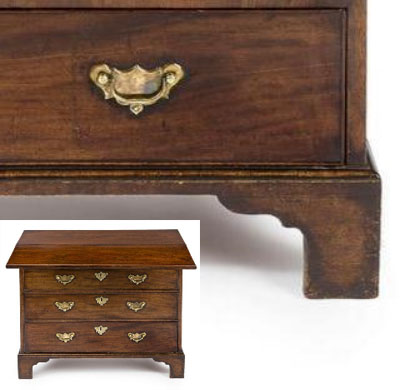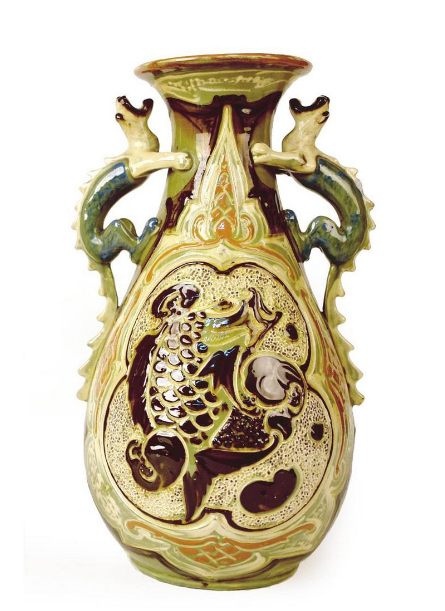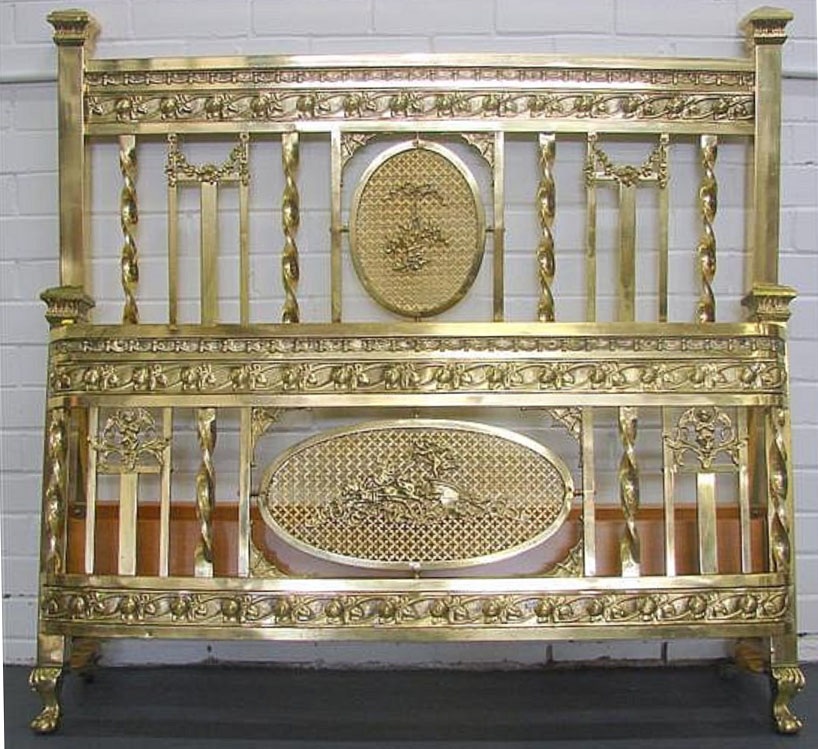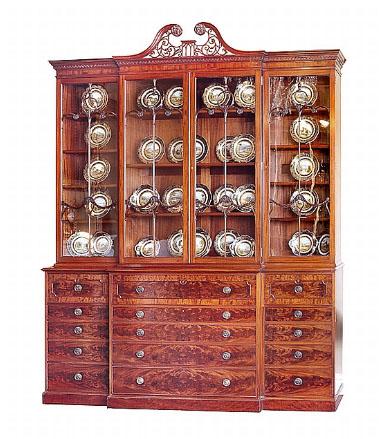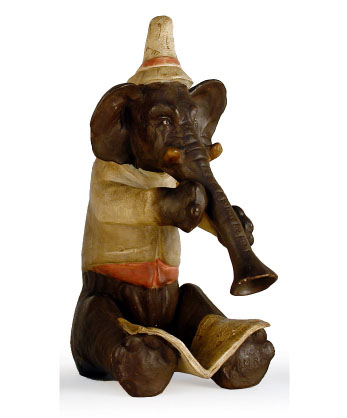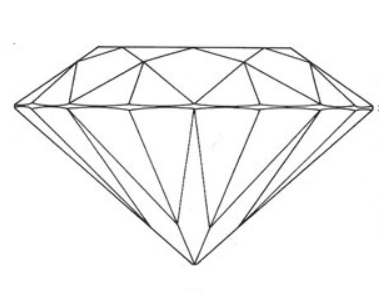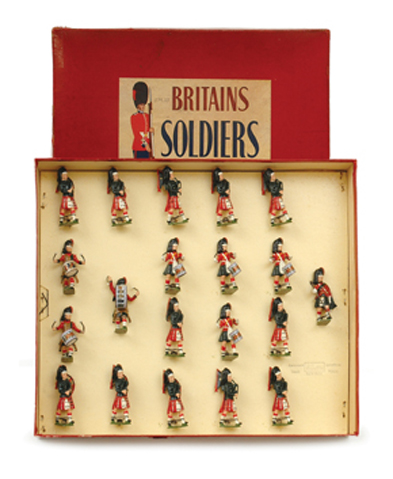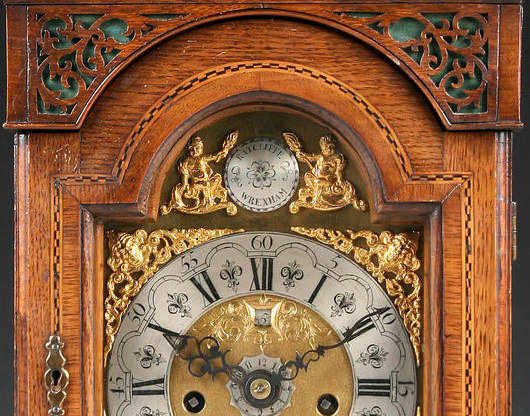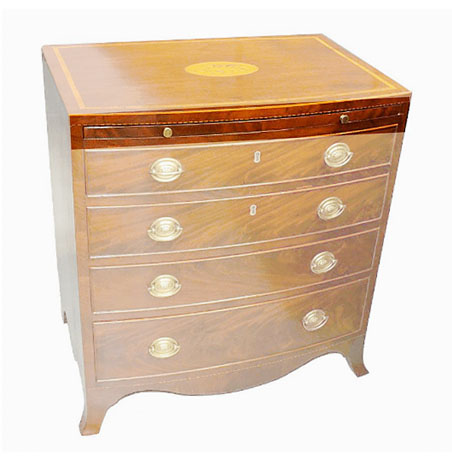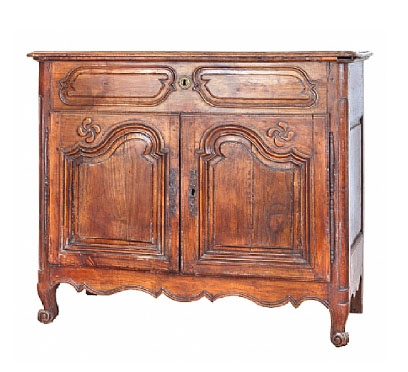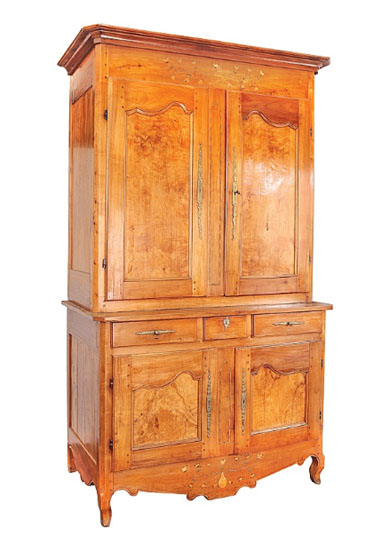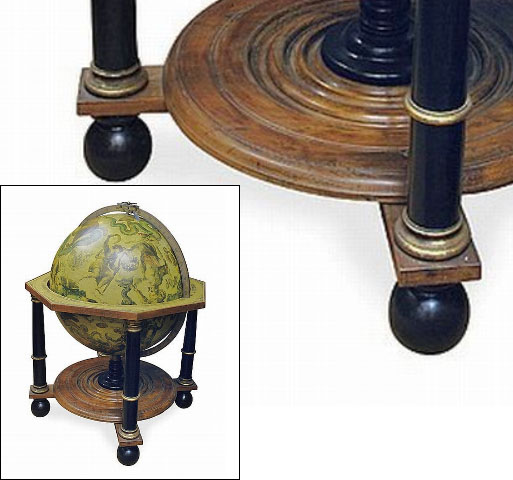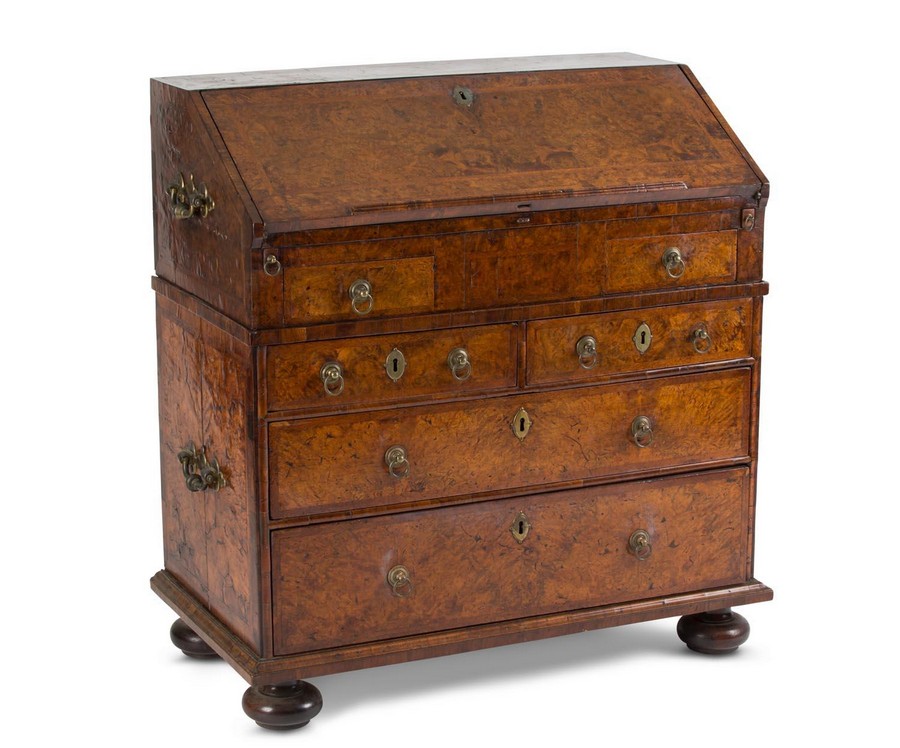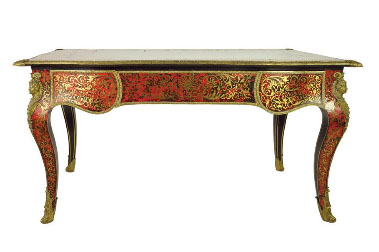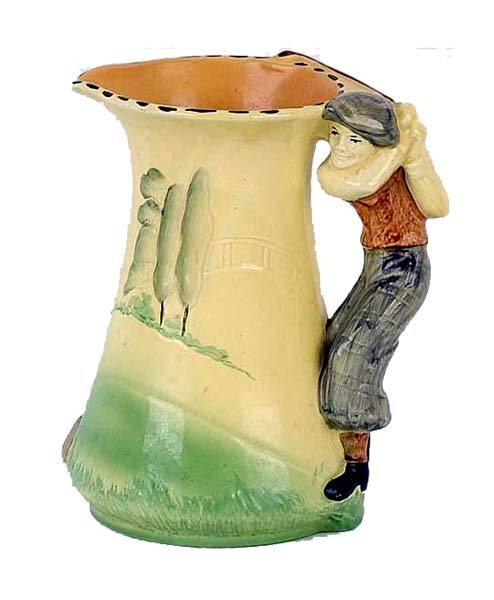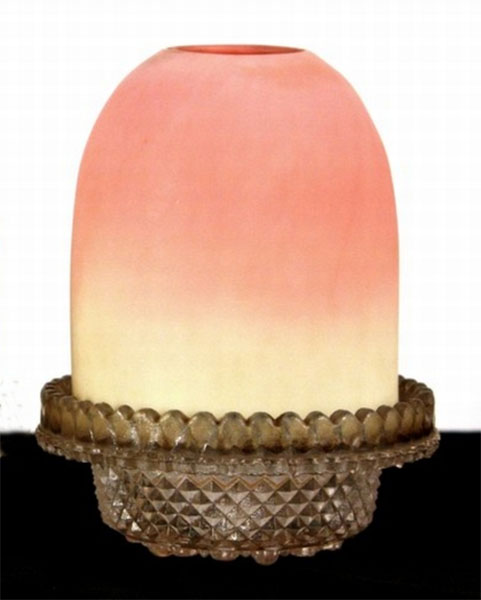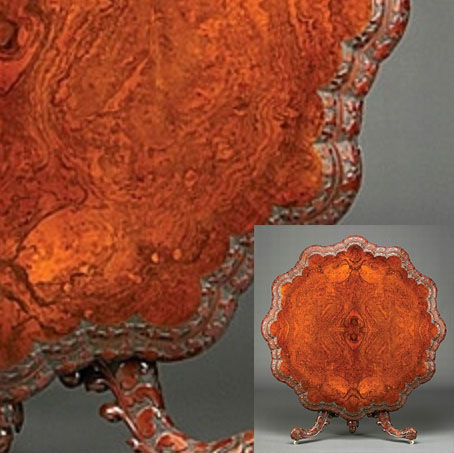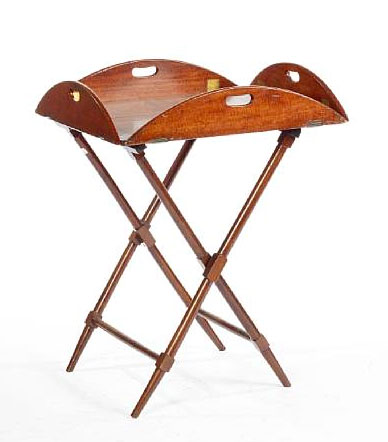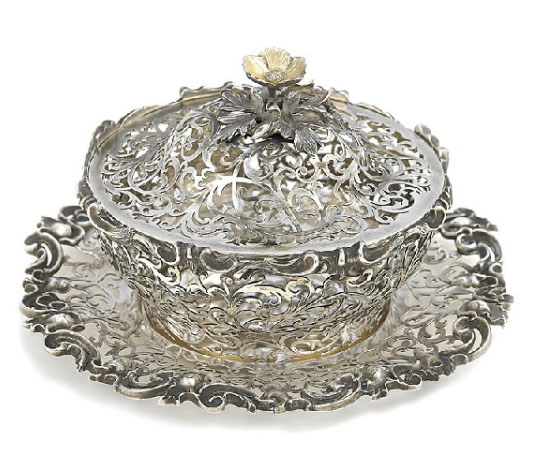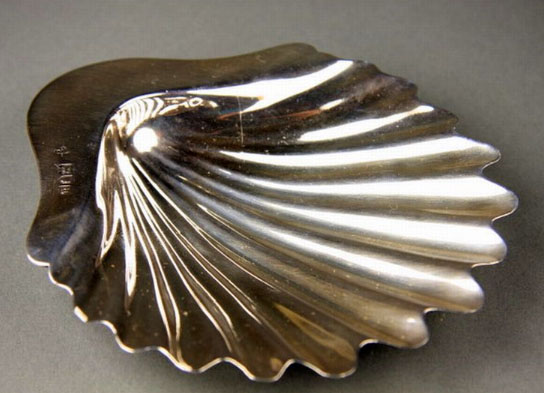Learn about antiques and collectables...
Click on a category below to show all the entries for that category.
Learn about and understand the items, manufacturers, designers and periods as well as the specialist terms used in describing antiques and collectables. Either click one of the letters below to list the items beginning with that letter, or click on a category on the left side of the screen to list the items under that category.
B&b Italia Spa (italy)
B&B Italia SpA is an Italian furniture manufacturer that has been at the forefront of contemporary design since its founding in 1966 by Piero Ambrogio Busnelli. The company has a rich history of collaborating with prominent designers to create innovative, functional, and stylish furniture.
In the 1960s, Busnelli, who had previously worked in his family's furniture business, saw an opportunity to create a new brand that focused on contemporary design. He founded B&B Italia and began working with designers such as Gaetano Pesce and Mario Bellini to create furniture that was both innovative and functional.
Throughout the 1970s, B&B Italia continued to expand its product line and collaborate with prominent designers. In 1972, the company launched the Up Series, designed by Gaetano Pesce, which featured a unique shape and modular design. Other notable designs from this decade included the Camaleonda sofa by Mario Bellini and the Sisamo chair by Kazuhide Takahama.
In the 1980s, B&B Italia expanded its reach internationally, opening showrooms in major cities such as Paris, New York, and Tokyo. The company also continued to innovate, introducing new materials and technologies in its products. In 1987, B&B Italia launched the Le Bambole sofa by Mario Bellini, which featured a soft, curvy shape and was widely successful.
The 1990s saw B&B Italia continuing to collaborate with top designers, including Antonio Citterio, who designed the Charles sofa in 1997. The company also acquired other furniture brands, such as Arclinea, a high-end kitchen manufacturer, and Maxalto, a brand that specializes in classic, elegant furniture.
In the 2000s, B&B Italia continued to expand globally, opening new showrooms in cities such as Beijing, Shanghai, and Dubai. The company also introduced new products, such as the Tufty-Time sofa by Patricia Urquiola, which featured a tufted design and modular components.
B&B Italia continues to work with prominent designers to create innovative products. The company has won numerous awards for its designs and has established itself as a leader in the furniture industry.
Baby Rattles
As well as the rattle itself which may be in the form of one or more bells, Georgian and Victorian rattles may include a teething ring, made of ivory or coral, and a whistle for blowing. Coral was believed to have medicinal properties, but on many rattles where previously present, it has been broken off and is missing.
Often made of thin silver, Victorian rattles easily sustain damage such as tearing or denting, or have pieces missing.
Baccarat
Baccarat is a French luxury brand that is known for its high-quality crystal glassware and other decorative items. The company was founded in 1764 by King Louis XV of France, who granted a royal charter to create a glassworks in the town of Baccarat, located in the Lorraine region of eastern France. The company has a long history of producing fine crystal glassware and has gained a reputation for creating some of the most beautiful and elegant pieces in the world. From the 19th century Baccarat was a leading producer of high class cut glass tableware. The company has also produced a wide range of other products over the years, including jewellery, lamps, and other decorative items. Today, Baccarat is still a leading producer of luxury glassware and is known for its commitment to craftsmanship and quality. It currently trades as Compagnie des Cristalleries de Baccarat.
Bacchus Motif
The Bacchus motif is a design that features the Roman god Bacchus, who is the god of wine, parties, and celebration. Bacchus is often depicted as a young man with long hair and a beard, holding a bunch of grapes or a wine cup. The Bacchus motif is often used in art and design as a symbol of abundance, revellery, and enjoyment. It can be found on a variety of decorative items, including glassware, ceramics, and other home decor items. The Bacchus motif represents the joy and celebration that can be found in social gatherings and the pleasures of good food and drink.
Bachelor's Chest
A small narrow chest of drawers with a folding top. When opened, the top rests on a pair of lopers or slides. Bachelor's chests date from the early 18th century and usually have either three long and two half drawers, or four long drawers. Being narrow they are rarely more than 25cm deep they are popular in today's smaller houses and a great many have been converted from standard chests of drawers. An item of furniture that rarely appears on the Australian market.
Back Boards
As the name implies, the boards that back a piece of cabinet furniture such as a chest of drawers. The backing timber is usually of cheaper material like pine (often called 'deal' by the British trade), though in early Australian colonial days, red cedar was also used to back a piece. As cedar became scarcer during the later 19th century, craftsmen turned to kauri pine.
On early furniture, made before the first half of the 19th century, the backboards were often chamfered at the edges and the wide boards slotted into grooves in a supporting central frame. In later furniture, the backboards were generally nailed or screwed into rebates cut directly into the carcase and the boards became much thinner and narrower.
From about the first world war plywood was frequently used for cheaper pieces.
Backboards are one important way of judging the age of a piece of furniture.
Back Plate
On many types of clocks, the movement operates between two plates, usually made of brass, one at the back, and the other at the front, which forms a mount for the dial.
On English bracket, mantle and table clocks the backplate was often visible through a glass door or panel from the late 17th century, and could be profusely engraved with scrolling decorations, flowers, foliage, birds, and figures. The engraving could also include the maker’s name.
The amount of engraving reduced and became simpler as the 18th century progressed, and by 1800, had been reduced to a border, often with the maker's name in the centre. By the early 1800s all decoration had ceased, and only the maker's name was added, and by the Victorian era, most bracket, mantle and table clocks had no engraving.
Back Splat
The vertical or horizontal piece that joins the back to the seat, or between the two sides of the chair. The back splat stabilises and adds additional strength to the back.
Backboard
Backboard, as the name indicates, a backboard is a panel that is attached to the back of a piece of furniture, such as a bookcase, cabinet or desk. The backboard serves to support the structure of the piece and can also provide a surface for attaching other features, such as shelves or drawers. In some cases, the backboard may also be visible from the front or sides of the piece, in which case it may be decorated or finished in a specific way to enhance the overall appearance of the piece. For vintage and antique items of furniture, backboards are typically made of wood.
Bactrian
The Bactrian civilization was an ancient Iranian civilization that flourished in Central Asia from the 6th century BC to the 4th century AD. The Bactrians were an Indo-Iranian people who spoke the Bactrian language, a member of the Eastern Iranian language family.
The Bactrian civilization was located in the region of Bactria, which is now part of Afghanistan, Uzbekistan, and Tajikistan. The region was a crossroads of cultures, and the Bactrians were influenced by both the Greek and Indian civilizations.
The Bactrians were a wealthy and sophisticated people. They were skilled craftsmen and produced beautiful works of art, including coins, sculptures, jewellery, and pottery. They were also known for their military prowess, and they played a major role in the Silk Road trade.
The Bactrian civilization declined in the 4th century AD, and it was eventually absorbed by the Kushan Empire. However, the Bactrians left a lasting legacy, and their culture can still be seen in the region today.
Bailey, Lorna
Lorna Bailey was born on 10th February 1978 and was brought up in Newcastle-under-Lyme, Staffordshire.
She has lived throughout her life in and around the Newcastle-under-Lyme area, and it is this area from which the majority of the names for her designs are taken.
She attended Stoke-on-Trent College leaving with a Blec National Diploma in Design (Ceramics). Stoke-on-Trent College is the successor to the Burslem School of Art where Clarice Cliff, Susie Cooper, Charlotte Rhead and Fredrick Rhead and Mabel Leigh amongst others, all studied.
Her designs are manufactured by L. J. B. Ceramics, where she worked while still studying at college. Lorna Bailey's bold, striking designs are often compared with those of Clarice Cliff
Baize
Baize is a type of fabric that is made from wool or a wool blend. It is a dense, closely-woven fabric that is smooth to the touch and has a matte finish. Baize is often used for covering surfaces, such as table tops or the playing surface of card, pool and billiard tables, and for lining drawers and boxes, because it is durable and resistant to wear. This fabric is often associated with gambling and is often used on casino gaming tables and other gaming equipment.
Bakelite
Bakelite was the first completely synthetic man-made substance. Bakelite was invented in 1909 by an independent New York chemist Leo H. Baekeland. It was called the "material of a thousand uses" and used to make everything from car parts to jewellery.
Although nearly all plastic from this period is known as ‘Bakelite', it is important to remember that this is an umbrella term that covers many different early plastics such as Lucite and cellulose acetate, and includes Bakelite.
We often think of the colour of Bakelite items as dark brown, but it was manufactured in various colours including yellow, butterscotch, red, green and brown.
Bakelite could also be transparent, or marbleised by mixing two colours. Plastics were cheap to produce and could be moulded or carved in a huge variety of ways.
Bakelite is most commonly associated with radio cases of the 1930s, telephones and kitchen utensils, but it was also used extensively in jewellery manufacture.
Early designs from the 1920s were plainer and simpler than later examples. Geometric and floral patterns typical of Art Deco styling were popular.
During its heyday in the 1930s, Bakelite jewellery was stocked by the most prestigious stores, such as Saks, Harrods and Macy’s, who dedicated a shop window display to it in 1935.
Coco Chanel featured Bakelite items in her accessories collection and the material was praised frequently in Vogue magazine.
Manufacture of some consumer Items were suspended in 1942 in order to concentrate manufacturing on the war effort.
Small items made of Bakelite are now valuable collectables. Andy Warhol was an avid collector, and when he died in 1987, his pieces sold for record prices at Sotheby's.
Bakewell Brothers Ltd.
BBakewell Brothers Ltd was a pottery company based in the Sydney suburb of Erskinville and was active from the late 19th century until the mid-20th century. The company was founded by Thomas, William, and John Bakewell in 1884, and initially focused on producing bricks and tiles.
However, in the 1890s Bakewell Brothers had shifted their focus to producing ceramic wares, including decorative pieces and household items.
One of the key factors behind Bakewell Brothers' success was their use of innovative technology and techniques in their production process. They were one of the first pottery companies in Australia to use a continuous kiln for firing their ceramics, which allowed them to produce large quantities of high-quality wares at a lower cost.
Bakewell Brothers produced a wide range of pottery items, including vases, jugs, bowls, plates, and other household items. Many of their pieces were decorated with intricate designs and patterns, and some featured scenes of Australian flora and fauna.
They also produced wares under other marks including ‘Beulah Ware’, ‘Newtone Art Ware’ and ‘Trent Art Ware’, as well as unmarked wares..
After the World War II, the company continued to produce high-quality pottery, but faced increased competition from cheaper imported ceramics and closed in 1955.
Baleen
Baleen is the filter feeder system in a baleen whale, and these whales have several hundred plates of baleen with a hairy fringe on their upper jaw.
Baleen refers to the solid plate, and it is historically important as it was sought by whalers as a by-product of the whaling industry, who called it whalebone, though it is not made of bone at all, and used it for scrimshaw.
The earliest artefacts were made of baleen produced from Arctic whaling in the 17th century.
In the 19th century baleen was an important raw material, comparable to present-day plastics. Its thermoplastic nature and strength meant it could be used to make a wide variety of functional and decorative objects.
Sailors used baleen to make sewing boxes and other small containers and another common use was brush bristles; it was even used as runners on toboggans.
Baleen basketry was developed into a craft, with examples of simple baskets to complex woven ones, which could take months to complete.
Other shore-based uses included in corsets, buggy whips, umbrella ribs, canes, skirt hoops and especially as a cheaper substitute for ivory in carving.
Ball and Claw Feet
Are in the shape of a rounded ball, attached to the underside of the carcase by a wooden shank. Introduced during the late 17th century and found on furniture in the William and Mary and Queen Anne style, are commonly found on cabriole legs in the manner of Thomas Chippendale, and furniture imitating the mid-18th century Rococo style. The leg terminates in a ball held by a carved lion's or bird's claw.
Balloon Back Chairs
A Victorian dining or drawing room chair, the quintessential symbol of the Victorian era. The back upright is waisted just above the seat, widening to a rounded curve at the top rail, forming a balloon shape.
The chairs were popular from the 1830s until the end of the 19th century. British balloon back chairs were usually made from mahogany or walnut, while the Australian version was made in cedar or sometimes Huon pine.
They were made in a multitude of variations, as anyone who has tried to find a matching chair to a set, can attest.
Bally
Bally is a Swiss luxury fashion house established in 1851 by Carl Franz Bally and his brother Fritz. Historically known for its shoes, the brand also produces bags, accessories, and ready-to-wear. Carl Franz Bally was born in 1821 in Schönenwerd, Switzerland. He joined the family business, a silk ribbon manufacturer, when he was 17. In 1851, he decided to go into shoe manufacturing after a stay in Paris. He opened his first shoemaking workshop in the basement of his family home.
Bally quickly became known for its high-quality shoes. The company used the latest technology and materials, and its shoes were made by skilled craftsmen. Bally also pioneered the use of new marketing techniques, such as advertising and celebrity endorsements.
In the late 19th and 20th century, Bally began to expand its operations. The company opened new factories in Switzerland and other countries, and it began to sell its shoes in department stores and other retail outlets around the world. Bally also began to produce other leather goods, such as bags and belts. Bally also became a major sponsor of sporting events, such as the Olympic Games.
Bally is now a leading luxury fashion brand and has continued to invest in its brand and its products. The company has opened new stores in China and other emerging markets, and it has partnered with celebrities and designers to create new collections. Bally is committed to creating high-quality, stylish products that reflect its Swiss heritage. Bally products are sold in over 100 countries around the world.
Baluster (furniture)
An architectural term for a column in a balustrade or staircase, often defined as a "vase shape". The shape is extensively used in furniture and decorative arts.
In furniture, it is used to describe a chair or table leg turned in that form, or more usually as an inverted baluster, with the bulbous section to the top. Less commonly used to describe a chair back that has the outline of a baluster. A baluster may also be split and applied to the front of a cupboard for ornamentation.
For ceramics and silver items it is often used to describe the shape of the whole item, rather than a part.
In Georgian glassware, the shape is commonly seen in the stem of glasses.
Baluster (glass)
An architectural term for a column in a balustrade or staircase.
When used to describe glass, it can either refer to the shape of the stem of a wine glass, being slender above and pear shaped below, or the shape of the whole vessel, usually a vase. In fact the baluster shape is often described as being vase-like.
The description of a vase as being of baluster shape covers a wide variety of shapes that often bear no resemblance to the original architectural form.
Bamboo Furniture
Towards the end of the nineteenth century, there was a revival of the taste for bamboo furniture featuring pseudo oriental styles. Bamboo furniture had been popular in Regency days, but the difference was that, while in Regency days the 'bamboo' legs and other members were generally simulated, that is, the wood was turned and notched, and then painted to look like bamboo, the later pieces were actually made of bamboo.
Bamboo frames often enclosed wickerwork covered wood panels. Numerous articles were produced, including hatstands, shelves, small tables, chests of drawers, (often surmounted by a mirror and a complex of small drawers), and overmantels liberally supplied with mirrors.
Bamboo furniture was mass-produced by several London firms. In a way, it was symbolic of the British Empire. Middle-class people felt comforted using furniture which they believed came from some oriental outpost coloured pink on the map. Some may even have been smug enough to imagine they were doing the natives a favour by patronizing their craft industries.
In recent years there has been a resurgence in the demand for bamboo furniture. Repairs can present a problem, for there are not many restorers either expert or interested in such work.
Bandai Co. Ltd.
Bandai is a Japanese toy and hobby company that was founded by World War II veteran Naoharu Yamashina as Bandai-Yain 1950. The company is known for producing a wide range of products, including action figures, model kits, and collectibles based on popular franchises such as "Dragon Ball," "Gundam," and "Power Rangers." Bandai is also known for its line of Tamagotchi virtual pets, which were extremely popular in the 1990s. In addition to its toy and hobby products, Bandai also produces a variety of other products, including clothing, accessories, and home goods. The company is headquartered in Tait?, Tokyo, Japan and has operations around the world.
Bar Back Chairs
Also known as rail back, Regency, Trafalgar and spade back chairs. A chair in which a straight or slightly curved top rail extends horizontally between or across the rear uprights. The design is attributed to Sheraton. In the early versions the top rail was often supported by vertical splats, sometimes plain or reeded, sometimes carved with various motifs.
The legs were either square or more generally tapered, sometimes reeded. The simple, square form of the late 18th century chairs evolved into the more rounded shape common through much of the 19th century, sometimes known as spade back chairs, many of which were made in Australia from red cedar.
The top rail is curved, extending beyond the uprights, and generally shaped and rounded at the ends. The construction is strengthened by a horizontal curved splat and the legs are almost always turned. The heavier the turning, the later the chair.
Barbie Doll
"Barbie" was introduced at the American Toy Fair in New York City in 1959 by Ruth and Elliot Handler, who were co-founders of Mattel Toys in 1945. She was inspired by a ‘Lilli’ doll bought by Ruth Handler in Switzerland.
The first Barbie sold for $3.00 and received mixed reviews on release, as she was so unlike any other dolls produced before. However, the public grew to love her and, from 1960s, her popularity became assured.
Looking at the features of a doll help to date it. For example, if she has ‘bubble cut’ hair, she dates from 1961 – 1967. Barbies with ‘pony tail’ hairstyles were produced between 1959 and 1964 and are highly sought after with around six different types available.
Barbie is marked on her buttocks, with the marks helping to date and identify her. The date shown is not the date she was made, but the patent date, meaning she was made sometime after the date shown.
As many Barbies were sold, condition and completeness are vitally important aspects. Dolls that have not been played with, complete examples with boxes and accessories will all be worth more. Most collectors look for examples that show very light signs of wear from play, but are complete – if the condition is better, the value usually rises.
Barbies produced after 1972 are considered ‘modern’ and are of limited interest to most collectors. Those produced before 1972 are deemed ‘vintage’ and are more desirable.
Ruth Handler died in 2002 and her husband Elliot Handler died in 2011.
Barcelona Chair
One of the most enduring forms from the Art Deco period, the Barcelona chair consists essentially of two leather cushions slung on a curving tubular steel frame. Originally designed in 1929 by the architect Mies Van Der Rohe, for the German pavilion for the International Exposition of 1929, which was hosted by the city of Barcelona, Spain. The chairs are still being manufactured by Knoll Inc. but there are numerous unauthorized copies also available.
Bark Paintings
Australian Aboriginal bark paintings are a form of traditional Indigenous art that originated in the northern regions of Australia. The paintings are created using natural pigments on sheets of tree bark, which are harvested from eucalyptus or paperbark trees.
This art form has been practiced for thousands of years by Indigenous communities, and the paintings typically depict stories from the Dreamtime, which is the mythology and spiritual beliefs of the Aboriginal people. The Dreamtime stories are often passed down from generation to generation through oral traditions, and the paintings serve as a visual representation of these stories.
Bark paintings can vary in size, with some being quite small and others being several meters long. The designs on the paintings are often complex and intricate, featuring geometric patterns, animals, and other figures from Aboriginal mythology.
Bark paintings are highly valued as works of art and can be found in museums and private collections around the world. Many contemporary Indigenous artists continue to create bark paintings using traditional techniques, while others have adapted the style to incorporate modern materials and techniques.
Barley Twist
The leg, and frequently other uprights such as columns, chair frames, spindles and stretchers, are turned in fairly wide and deep spirals, usually slightly rounded. Also known as the 'Jacobean twist' and common on the dark stained Jacobean Revival furniture of the 1930s and 40s.
As a rule, the twists on opposite uprights should move in a contrary direction. Thus, if the spiral on a right side is clockwise, that on the left side should move in a counter-clockwise direction.
This is also true of rope-twist or cable-twist turning, a nautical term that came into fashion after Nelson's victories over the French fleet. The essential difference is that with rope twists, the spirals are more finely turned on the lathe and placed closer together, than they are with barley-sugar turnings.
Barograph
The barograph, popular from the late Victorian period to the 1930s, is a variation of the aneroid barometer, and it records a graph of the atmospheric pressure over time using a pen or needle on graph paper, both of which are attached to a drum moved by clockwork. Due to the delicate nature of the mechanism they are usually housed in a five panel glass case, the base often fitted with drawers for storage of of new and used charts.
Barometer
The barometer is an instrument for measuring atmospheric pressure. The pressure indicated can aid in predicting short term weather.
There are two main types of barometer in use, the mercury barometer, which can either be in the form of a "stick" or a "wheel", and the aneroid barometer, a later invention and most commonly available.
Italian Evangelista Torricelli, an associate of Galileo, is generally credited with inventing the mercury barometer in 1643. Galileo suggested to Evangelista Torricelli that he use mercury in his vacuum experiments.
A mercury barometer has a glass tube with a height of at least 84 cm, closed at one end, with an open mercury-filled reservoir at the base. The weight of the mercury creates a vacuum in the top of the tube. Mercury in the tube adjusts until the weight of the mercury column balances the atmospheric force exerted on the reservoir.
At the time of its invention, Torricelli was not experimenting with air pressure but with the creation of vacuums, and whether or not the air had weight, and it was not until much later that it was realised the changes in air pressure measured by the barometer could be used for short term weather forecasts.
High atmospheric pressure places more force on the reservoir, forcing mercury higher in the column. Low pressure allows the mercury to drop to a lower level in the column by lowering the force placed on the reservoir.
The long tube used by Torricelli meant that the barometer was in the form of a long stick, and gave rise to the expression of atmospheric pressure in inches or millimeters or feet.
In 1665, Englishman Robert Hooke created the wheel barometer which added a circular scale and dial assembly to the mercury barometer.
In 1843, the French scientist Lucien Vidie invented the aneroid barometer, which uses a small, flexible metal box called an aneroid cell to measure changes in atmospheric pressure. Small changes in external air pressure cause the cell to expand or contract. This expansion and contraction drives a mechanism so that the tiny movements of the capsule are amplified and displayed on the face of the aneroid barometer.
The empty box is prevented from collapsing by a strong spring. Aneroid means fluidless, no liquids are used, the metal cell is usually made of phosphor bronze or beryllium copper.
Today's barometers use electronic sensors instead of mercury and metal aneroid cells.
Mercury barometers are no longer manufactured due to the recognition of the harmful effects of mercury, although old mercury barometers an still be refilled. Use of mercury in manufacturing was banned in most western countries in the 1990s or early 2000s. However mercury barometers emit zero or negligible amounts of mercury vapour, and owning one is no threat to your health. In 2006 the European Union excluded barometers from a ban on the use of mercury in manufacture or repair.
The mercury barometer makers were at their peak from about 1830 to 1890. England, due to it's robust economy and lust for science, was the home to most of these makers, though many were also found in France, Germany, Holland, Ireland, Scotland, Belgium, Portugal, and here in America.
There were a number of famous makers based in London, such as Negretti & Zambra, Troughton & Simms, Comitti and Son, and Dolland & Co. and some barometers were made and stamped with the name of the upmarket retailer through whose premises they were sold. Nicholas Goodison in his book English Barometers 1680 - 1860 Antique Collectors Club, 1977, lists almost 2000 makers and retailers of barometers during this period.
Mercury barometers were precision scientific instruments and would have only been owned by the very wealthy. This is reflected by the use of exotic timbers such as rosewood, mahogany and walnut, and the craftsmanship entailed in their manufacture.
The Admiral Fitzroy Barometer is a style of mercury barometer based on work by Admiral Fitzroy in the late 1850's.
Admiral Robert Fitzroy achieved lasting fame as the captain of HMS Beagle during Charles Darwin's famous voyage, and in his position as Meteorological Statist to the Board of Trade in 1854, as a pioneering meteorologist who made accurate weather forecasting a reality.
The Admiral Fitzroy Barometer usually consists of a mercurial barometer (open tube type), thermometer, printed instructions and a storm glass or storm bottle, the latter contains a mixture of chemicals which change their appearance depending on the type of approaching weather.
Aneroid barometers measure the air pressure by means of a vacuum chamber with flexible side. Any change in the air pressure alters the thickness of the chamber, and the movement is measured and linked to an indicator needle through levers and pulleys. They were popular in the mid to late Victorian and Edwardian period, and saw the barometer move from an instrument that could only be owned by the very wealthy to become an affordable aspiration by the rising middle classes.
Baroque Furniture
Baroque furniture is a style of furniture that was popular in Europe during the Baroque period, which spanned from the late 16th to the early 18th century. Baroque furniture is characterized by its ornate, decorative design, which often features elaborate carvings, gilding, and other embellishments.
Baroque furniture was popular in many European countries, including Italy, France, and Germany, and it was often used in the homes of the wealthy and in royal palaces. The Baroque style is also associated with the Church, and many churches and cathedrals from this period feature Baroque-style furniture and decorations.
The Baroque style of furniture is characterized by ornate and extravagant design elements that originated in Italy in the 17th century and spread to other parts of Europe, where it was particularly popular in the courts of royalty and the wealthy aristocracy. Baroque furniture is often made of rich materials such as gold, silver, and precious woods, and it is decorated with intricate carvings, inlaid designs, and gilded or painted finishes.
Baroque Pearls
A Baroque pearl is a mis-shaped pearl. Instead of being spherical it may be uneven, lumpy, curved or ovoid. The name dervies from their use in the late 16th century, principally be German craftsmen who set them in pendants to form part of the body of creatures such as birds, dragons, sea monsters and so on. Nowadays baroque pearls are found with minimal settings in necklaces, earrings and pendants.
Barovier & Toso
The Barovier family of Venetian glassmakers can trace their history back to the 13th century, and in 1884, Giovanni (1839 - 1908) together with nephews Benedetto (1857-1930), Giuseppe (1863-1942) and Benvenuto (1855-1932), all members of the Barovier family founded the Murano glassworks that became Artisti Barovier in 1890.
In 1919 Benvenuto's sons, Ercole (1889-1974) and Nicolo, and Giuseppe's son, Napoleone, joined the firm, creating the Vetreria Artistica Barovier, that was remarkable for its blown glass animals and murrine vases.
In 1919 Benvenuto's sons, Ercole (1889-1974) and Nicolo, and Giuseppe's son, Napoleone, joined the firm, creating the Vetreria Artistica Barovier, that became known its blown glass animals, murrine vases and, by 1929, the Primavera series of art deco style elegant vases in white glass with black handles.
Ercole Barovier took over as the artistic director of the company after World War I and the company was renamed Vetreria Artistica Barovier & C. he was able to innovate and create new chemical formulae, new colours and improved methods to manufacture glass.
The company merged with Ferro, Seguso and Toso in 1936 and in 1939 was renamed Barovier & Toso, remaining under the control of Ercole Barovier.
He remained the mainstay of firm until his death in 1972 when his son Angelo (1927 - 2008) took over. The company is still in operation under the control of Angelo.
Barrel (in a Clock)
In a clock or watch, the barrel is a cylindrical component that stores the energy from the mainspring. As the mainspring is wound, it stores energy in the barrel. As the clock or watch runs, the energy is gradually released from the barrel, turning the clock's gears and keeping the time.
The barrel is typically located near the centre of the movement (the mechanism that powers the clock) and is connected to the center wheel, which drives the rest of the gears. The barrel typically has teeth on its outer surface that mesh with the gears in the movement, allowing it to transmit energy to the rest of the clock. Some barrels are designed to be wound by hand, while others are automatically wound by the motion of the wearer's arm.
Barry Brickell
Barry Brickell was a well-known New Zealand artist, potter, and conservationist who is best known for his unique and distinctive ceramic works. Born in Auckland in 1935, Brickell attended the Elam School of Fine Arts at the University of Auckland and later trained in pottery in England and Japan.
Brickell returned to New Zealand in the late 1960s and established his own pottery workshop on the Coromandel Peninsula, where he spent most of his life. He quickly gained a reputation for his hand-built, wood-fired pottery that was inspired by the natural environment around him, including the native flora and fauna of the area.
One of Brickell's signature styles was his use of unglazed clay, which he would fire at high temperatures to create a distinctively textured surface. He also experimented with glazes and slip decoration, producing works that were both functional and sculptural in nature.
In addition to his pottery, Brickell was a passionate conservationist and environmentalist. He founded the Driving Creek Railway and Potteries, a heritage railway and ecological restoration project on his property in Coromandel. The project became a popular tourist attraction and allowed Brickell to combine his love of pottery, the environment, and sustainable living.
Throughout his career, Brickell received numerous awards and accolades for his contributions to New Zealand art and culture. He was made a Member of the New Zealand Order of Merit in 2004 for services to pottery and conservation.
Barry Brickell passed away in 2016.
Barsony
Barsony Ceramics, synonymous with the production of matt black coloured ceramics from the 1950s and 1960s, was an Australian ceramics manufacturing company operated by George Barsony (1917-2010) and Jean Barsony from the early 1950s to the early 1970s.
George Barsony, a sculptor from Hungary had arrived in Australia as a refugee in 1949 and shortly after, met his future wife Jean who had come to Australia from England and worked in a Sydney pottery.
Together they set up Barsony Ceramics, and the company's operations were conducted from a factory Guernsey Street, Guildford in Western Sydney from the 1950s to 1970s.
As well as manufacturing under the Barsony name, Barsony Ceramics also produced items under the Silver Cloud and Venice labels, but items under these labels very rarely come onto the market.
Decorative items produce by Barsony included candlesticks, figurines, lamp bases, ashtrays, wall hangings, bookends, figure vases, bowls etc.
Most Barsony products were marked, although there are some that have no markings. As well there are copies of Barsony products that are unmarked, and a range of similar items were made by Kalmar.
Genuine Barsony can be identified by the numbering system on the base of the item: 'H' indicated head, 'V' indicated vase', and 'L' indicated 'lamp'. Thus 'FL' indicated a figural lamp and 'HL' indicated a head lamp. These letters are followed by the model or mould number. Many of the lamps and figures are named models, such as 'Drumbeat of Trinidad' (FL-41), 'Beauty of the Beach' (F-19) and 'Sitting Black Lady' (FL39). Kalmar items had a similar marking system and it is often difficult to distinguish between the two manufacturers.
The most recognisable Barsony product are the "black lady" lamps, featuring a scantily dressed figure with red and white highlights, and collectors are able to distinguish between original shades that came with the lamp, and later replacements. The price of a lamp will be boosted if it has the original shade which, often were of plastic ribbon and raffia trimmed with thin velvet ribbon. Some of the lamp bases even had built in ash trays but the inclusion of the ashtray was a monetary not a design consideration. At that time a high sales tax was levied on ornamental items, while utilitarian items such as cups, plates and ashtrays attracted a reduced sales tax.
Barsony
Barsony Ceramics, synonymous with the production of matt black coloured ceramics from the 1950s and 1960s, was an Australian ceramics manufacturing company operated by George Barsony (1917-2010) and Jean Barsony from the early 1950s to the early 1970s.
George Barsony, a sculptor from Hungary had arrived in Australia as a refugee in 1949 and shortly after, met his future wife Jean who had come to Australia from England and worked in a Sydney pottery.
Together they set up Barsony Ceramics, and the company's operations were conducted from a factory Guernsey Street, Guildford in Western Sydney from the 1950s to 1970s.
As well as manufacturing under the Barsony name, Barsony Ceramics also produced items under the Silver Cloud and Venice labels, but items under these labels very rarely come onto the market.
Decorative items produce by Barsony included candlesticks, figurines, lamp bases, ashtrays, wall hangings, bookends, figure vases, bowls etc.
Most Barsony products were marked, although there are some that have no markings. As well there are copies of Barsony products that are unmarked, and a range of similar items were made by Kalmar.
Genuine Barsony can be identified by the numbering system on the base of the item: 'H' indicated head, 'V' indicated vase', and 'L' indicated 'lamp'. Thus 'FL' indicated a figural lamp and 'HL' indicated a head lamp. These letters are followed by the model or mould number. Many of the lamps and figures are named models, such as 'Drumbeat of Trinidad' (FL-41), 'Beauty of the Beach' (F-19) and 'Sitting Black Lady' (FL39). Kalmar items had a similar marking system and it is often difficult to distinguish between the two manufacturers.
The most recognisable Barsony product are the "black lady" lamps, featuring a scantily dressed figure with red and white highlights, and collectors are able to distinguish between original shades that came with the lamp, and later replacements. The price of a lamp will be boosted if it has the original shade which, often were of plastic ribbon and raffia trimmed with thin velvet ribbon. Some of the lamp bases even had built in ash trays but the inclusion of the ashtray was a monetary not a design consideration. At that time a high sales tax was levied on ornamental items, while utilitarian items such as cups, plates and ashtrays attracted a reduced sales tax.
Barye, Antoine Louis and Alfred
Antoine Louis Barye (1796-1875) and his son, Alfred Barye (1839-1882) were French sculptors, most famous for his depiction of animals,
Antoine Louis Barye was born in Paris and took up sculpture in 1817, working in the studios of Bosio & Gros.
In 1819 he took part in the competition of the Ecole des Beaux Arts where he was runner up. Barye exhibited at the Paris Salon from 1827 onwards.
In a career spanning half a century his output was prodigious; his bronzes are imbued with realism and there is meticulous attention to anatomical detail.
Alfred Barye learnt the art of sculpture and casting from his father, but he is always considered subordinate in skills to his father. He is known to have produced numerous casts of famous racehorses of the day, and exhibited a racehorse at the Paris Salon in each of the years from 1864 to 1866.
There is often confusion between the works of the two, as both father and son sometimes used the same signature. A review of the objects on this page will show some signed 'Barye' or 'A. Barye' which could be either the father or son.
Bas Relief
Bas relief, or low relief, is a carved surface in which the figures project from the background, but only to a limited extent. When a relief is cut in from a flat surface of stone or wood, the background or field is lowered, leaving the unsculpted parts seemingly raised. There are other degrees of relief carving, including high relief and mid relief.
Basalt
Basalt is a hard, dense volcanic rock formed from the rapid cooling of basaltic lava, and makes up most of the earth's oceanic crust.
However it is also the name given by Josiah Wedgwood in 1768 to a fine black unglazed porcelain which he called Wedgwood Black Basalt.
Using this fine-grained stoneware he was able to produce copies of the newly excavated Etruscan pottery from Italy, with a lustrous and smooth, surface, and this new innovation proved to be a huge commercial success.
Basket Weave / Basketweave
Basket weave is a decorative pattern that is often used in textiles, ceramics, furniture and other decorative arts. It is created by actual or simulated interweaving of horizontal and vertical threads or strips to create a pattern that resembles a woven basket.
In textiles, basket weave can be created using various materials such as fabric, yarn, or ribbon. It is often used to create decorative details on clothing, upholstery, and other household items. Simulated basket weave can also be created using ceramic clay, timber or other materials, and it is often used to decorate pottery, tiles, furniture, silver and other decorative objects.
Basket weave patterns can vary in complexity, from simple, straightforward designs to more intricate, elaborate patterns. The size and spacing of the interwoven threads or strips can also be varied to create different effects. Basket weave is often used to create a natural, rustic look and is often associated with traditional crafts and folk art.
Baskets - Silver
Although we have separate categories for various types of silver baskets according to their catalogue description - bon-bon, bread, cake, fruit, sugar and other unspecified - these baskets were variable in their uses.
They were made in a variety of shapes including circular, oval, and rectangular, mostly with a swing handle and sides pierced with geometric or scrolling shapes. Some have four feet while others stand on a rim.
Basse Taille
Basse-taille is a technique used in enameling, which is the process of applying a layer of vitreous coloured enamel to the surface of metal. Basse-taille is a French term that means "low cut". The enamel is applied to a recessed area of the metal surface, rather than being applied on top of the surface.
To create a basse-taille design, the metal surface is first carved or etched with a design. The recessed areas are then filled with enamel, which is fused to the metal at high temperatures. The enamel is then ground and polished to a smooth finish, creating a design that is set into the metal surface.
Basse-taille enamel work is known for its delicate, detailed designs and the high level of skill required to create them. It is often used to create jewellery and other decorative objects, and it is especially popular in the Art Nouveau and Art Deco styles.
Bassett-Lowke Model Trains
Bassett-Lowke was a British company that was known for producing high-quality model trains and other scale models. The company was founded by Wenman Joseph Bassett-Lowke in 1898 and was active until 1971.
The company was one of the first companies to produce mass-market model trains, and it was known for its attention to detail and its use of high-quality materials. The company produced a wide range of model trains, including steam locomotives, diesel engines, and electric trains. It also produced other scale models, including ships, airplanes, and automobiles.
Bassett-Lowke was a major competitor of the German toy company Gebruder Bing. Both companies were known for producing high-quality model trains and other scale models. However, Gebrüder Bing was significantly larger than Bassett-Lowke, and it had a wider range of products.
In addition to its model trains, Bassett-Lowke was also known for its work in architectural modelling. The company created detailed scale models of buildings and other structures for a variety of clients, including architects, developers, and government agencies.
Bassett-Lowke's model trains were popular in the United Kingdom and were also exported to other countries. The company's products are now highly sought after by collectors.
Basting Spoons
A long handled spoon, usually 30 to 35 cm long, for scooping up the meat juices in the bottom of the roasting vessel, and pouring them over the meat, to ensure the meat browned as it cooked.
Basting spoons date from the 17th century, and the early examples had a tubular tapering handle (to facilitate cooling of the handle) and a spherical end cap. However few early examples survive, as the handles easily dented or fractured and were difficult to repair.
Later examples from about 1770 to 1860 had a conventional flat handle as seen on other types of spoons of this period.
Batik
Batik is a traditional dyeing technique used to create patterns on textiles. It originated in Indonesia, but it is now practiced in many other countries around the world. The process of creating batik involves coating a fabric with wax and then dyeing it. The wax resists the dye, so the areas of the fabric that are coated with wax remain the original colour. The fabric is then coated with wax again, and a different colour dye is applied. This process is repeated until the desired pattern is achieved. The wax is then removed, either by boiling the fabric or by using solvents, to reveal the final design. Batik is used to create a wide range of products, including clothing, home furnishings, and decorative items.
Baton Hands
A narrow hand on a watch, sometimes also called a stick hand.
Baton Numerals
A watch that instead of displaying numerals on the face, displays a marker in the form of a baton, or lower case letter "L". Since the baton-like marks are not numerals, the feature is also called baton markers, baton indexes and baton indicators.
Bauhaus
Bauhaus refers to design concepts that originated at the German art school of the same name that was founded in 1919 by architect Walter Gropius. The school was based on the principles of modernist design, and sought to bridge the gap between art and industry by teaching students how to create functional and aesthetically pleasing designs for mass production.
Bauhaus had a significant impact on modern design and architecture, and is widely considered to be one of the most influential art schools of the 20th century. The school's approach to design emphasized simplicity, functionality, and the use of new materials and technologies. Bauhaus designers sought to create clean, uncluttered designs that were free from unnecessary ornamentation.
Bauhaus had a strong influence on a wide range of artistic fields, including architecture, furniture design, typography, and graphic design. Some of the most iconic examples of Bauhaus design include the Barcelona Chair by Mies van der Rohe, the Bauhaus Building in Dessau by Walter Gropius, and the typography of Herbert Bayer.
Bauhaus was active from 1919 until 1933, when it was forced to close by the Nazi government. However, the school's ideas and principles continue to be influential in design and art to this day.
Baxter Prints (george Baxter)
George Baxter (1804-1867) developed the Baxter colour printing process, which gained international renown. After serving as an apprentice to a wood-engraver, he dedicated eight years to perfecting his technique. In 1829, Baxter produced his first colour print titled "Butterflies."
Baxter's process involved combining an engraved metal plate with up to twenty engraved wooden blocks. Each block was printed separately in a distinct colour, using a combination of intaglio and relief techniques. The resulting prints were of excellent quality yet affordable, leading to their widespread production. Baxter prints found their way into various applications, such as notepaper, pocket-books, decorated music sheets, needle cases, and book illustrations.
In recognition of his innovative process, Baxter was granted a royal patent in 1835 (Patent No. 6916 - Improvements in Producing Coloured Steel Plate, Copper Plate and other Impressions). The patent remained in effect from 1835 to 1854. In the final years of this period, Baxter licensed his method to different printers who continued using it until the 1870s. After the expiry of Baxter's patent in 1854, his process was gradually replaced by other colour printing methods like chromolithography.
Baxter prints can be distinguished by specific characteristics unique to each technique employed in the process, such as the aquatint grain, the darker lines of the intaglio plate, and the flattened edges of the relief blocks.
Despite producing an estimated 20 million prints throughout his career, Baxter faced financial challenges and died just two years after being declared bankrupt. Factors contributing to his difficulties included competition from rival companies, the increasing popularity of photography, and Baxter's own pursuit of perfection in a time-consuming process.
Bayonets
The military bayonet has a long history dating back to the 17th century. It was originally developed as a weapon for soldiers to use when they ran out of ammunition, and it has evolved over time to meet the changing needs of the military.
The first bayonets were simple blades that were attached to the end of a musket, and they were used as a stabbing weapon in close combat. In the 18th and 19th centuries, bayonets became more specialized and were designed for use with specific types of firearms.
During World War I and World War II, bayonets were an important weapon for infantry soldiers, and they were used in hand-to-hand combat. In the post-World War II era, the role of the bayonet has changed, and it is now primarily used as a training weapon and for ceremonial purposes. However, some militaries still issue bayonets to their soldiers as a backup weapon.
Bce
BCE following a number, is the abbreviation for Before the Common/Current/Christian Era and is the equivilent of "BC", so that 2013 BCE is the same as 2013 BC. The "BCE" designation has been adopted by writers wishing to be sensitive to non-Christians.
Beaconsfield Wardrobe
A type of wardrobe, usually of three sections, in which the two outer sections contain hanging space, while the centre section has a cupboard in the top section for hats, then a mirror, and then drawers below.
Beadwork / Bead Work (in Embroidery and Needlework
Beadwork in embroidery is a type of embroidery that involves adding beads to fabric to create decorative designs. The beads can be sewn onto the fabric using a needle and thread, or they can be attached using a variety of other techniques, such as beading wire or bead crochet. Beadwork is often used in conjunction with other embroidery techniques, such as cross-stitch and appliqué.
Beadwork has been used for decorative purposes for thousands of years, and it has been fashionable in many different cultures and time periods. In Western fashion, beadwork was popular in the 19th century, during the Art Nouveau movement of the late 19th and early 20th centuries, and continued to be fashionable through the 1920s and 1930s. In the 1960s and 1970s, beadwork experienced a resurgence in popularity.
View further examples of Beadwork / Bead Work (in Embroidery and Needlework
Beard Watson & Co.
Beard Watson & Co. were Sydney based furniture manufacturers and retailers in the early 20th century, as part of their general furnishing and homewards business.
The company commenced business in 1889 when an existing retail business was taken over and renamed by William Beard, James Watson and James Kebblewhite, and expanded into furniture manufacture when the company acquired a furniture manufacturing business in 1901.
The company established a reputation for well designed furniture of good quality, as illustrated by the items listed in this price guide.
Furniture manufacturing and retailing continued until the 1960s, and as well as the existing Sydney city store, branch stores were opened in a number of Sydney suburbs in an effort to counter declining sales in its city store.
Beard Watson was taken over Nock & Kirby in 1959 but continued to trade in its own name.
However sales continued to decline and the city store closed for good in 1973
Bears Signature ....
A cataloguing term where the item has a signature which in the opinion of the cataloguer are not the signature of the artist and have been added by another hand.
Bebe Dolls
A Bebe doll is a type of fashion doll that was popular in the late 19th and early 20th centuries. Bebe dolls were designed to be as close to life-size as possible, and they were made with articulated joints so that they could be posed in a variety of positions. Bebe dolls were typically made with bisque or china heads and cloth bodies, and they were often dressed in fashionable clothing and accessories. The name "Bebe" is French for "baby," and these dolls were meant to be fashionable playthings for young girls. Bebe dolls were made by a number of different manufacturers, and they are now highly sought after by collectors.
There were many different manufacturers of Bebe dolls, and many of them were located in Europe. Some of the best known manufacturers include Jumeau, a French company that was known for its high-quality dolls. Jumeau dolls were made with bisque heads and had distinctive features such as elongated bodies, large eyes, and small noses. Bru was another French company, whose Bebe dolls that were known for their realistic facial features and expressive eyes. Other manufacturers include Gebrüder Heubach, Kestner and Simon & Halbig.
Bed Warmers / Warming Pans
In the cold European winters, bed warmers were a welcome comfort. The pan itself was made of brass or copper, and filled with hot coals, had a long wooden handle so it could be pushed under the covers of the bed into the position of the feet. If the bed was dry, the pan had to be constantly moved so it would not scorch the sheets, but this was not always a problem as sometimes the bedding was damp. The pan assisted in drying out the bed clothes.
Some warming pans had patterns marked out in piercing to the lids, which also allowed the heat to escape.
Although metal and ceramic hot bottles haad been in use since the 16th century, it was the invention and subsequent widepread popularity of the rubber hot water bottle in 1903 that led to the demise of the bed warmer.
Bedside Cabinets
Small cupboards, usually square or rectangular though sometimes round, designed to stand one on either side of a bed. They have been made since the 18th century, but true pairs are very difficult to find. In a genuine pair, the doors should be hinged on different sides, so that the cupboard opened away from the bedside. Small chests of drawers were also made as bedside pieces. Pairs of French bedside cupboards are much more common than English or Australian pairs, which even when part of a bedroom suite, were only made as singles. Most Victorian or Edwardian pairs of bedside cupboards that come on to the market, have been made up from the pedestals of pedestal dressing tables of the period, but due to demand the fact that they are not original does not diminish their value.
Bee Motif
The bee is a popular motif in jewellery design, often used to symbolize industry, hard work, and the natural world. They can be depicted in a variety of styles, from realistic to stylized, and are often used as a decorative element on rings, pendants, earrings, and other types of jewellery. In many cultures, bees are also seen as a symbol of prosperity and good luck, making them a popular choice for talismanic jewellery. Some people also choose to wear bee-themed jewellery as a way to show support for the conservation of bees, which are important pollinators that play a vital role in the health of ecosystems around the world.
Beech
Beech, a pale coloured timber, is native to temperate Europe, Asia and North America and classified as a hardwood, although comparitively "soft" when compared with oak or ash. It has long been popular with with country craftsmen, particulary chair makers, as unlike ash it is suitable for turning.
Bellarmine
A Bellarmine is a type of stoneware jug that was produced in the German-speaking regions of Europe, particularly in the areas of Germany, Austria, and the Czech Republic, from the 16th to the 18th centuries. The jugs are named after Cardinal Robert Bellarmine, who was a prominent Catholic theologian and cardinal during the Counter-Reformation. German bellarmines are distinctive for their bearded man's face, which was modelled on a portrait of Bellarmine, often depicted with a wide brimmed hat and the pottery is heavily potted and has a long neck, a broad belly, and a narrow base. The face is typically depicted with a long beard and a serious expression and is often decorated with a hat or other head covering. These jugs were primarily used for the storage and serving of wine, beer and other beverages. They are also highly collectible and considered as pieces of decorative art.
Belle Epoque
The Belle Époque, also known as the "Beautiful Era," was a period in European history that lasted from the late 19th century to the outbreak of World War I in 1914. The term is most commonly associated with France, but is also used to refer to the same period in other countries, particularly in Western Europe and Latin America.
During the Belle Époque, Europe experienced a time of great prosperity and cultural, artistic, and scientific advancements. It was an era of peace and optimism, characterized by industrial growth, urbanization, and new technologies such as electricity, automobiles, and the telephone. The period is also associated with a flourishing of art and culture, particularly in the fields of literature, music, and the visual arts.
Belleek
The Belleek porcelain factory was founded in County Fermanagh in Northern Ireland about 1849, after landowner John Caldwell Bloomfield inherited his father's estate, and undertaking a geological survey, discovered the area was rich in minerals.
Bloomfield went into partnership with a London architect and a Dublin merchant and set up a pottery business to provide work for the tenant farmers whose lives had been decimated by the Irish potato famine.
The construction of the pottery commenced in 1858, and it included a railway line to the works, so coal could be delivered for the kilns.
The company commenced producing domestic wares, but it wasn't until 1863 that small quantities of the translucent ivory-looking porcelain for which Belleek is famous, were produced.
Belleek was popular with Queen Victoria and was displayed at the great 19th century exhibitions, and enjoyed a large export market.
Typical Belleek items include figures, vases, dishes, eggshell-thin tea services, and baskets, often with delicate open lattice-work. Marine motifs were commonly used including Neptune, shells, seaweed, mermaids, dolphins and coral and wares.
The history of the factory's output can be identified by the type and colour of the marks. A black mark was in use from 1863 to 1946 and this was superseded by a green mark. The green mark continued in use until 1980, and this was followed by a series of colours used for only short periods: gold from 1980 to 1992; dark blue from 1993 to 1996; light blue from 1997 to 1999; black again in 2000; green from 2001 to 2006; black in 2007 and then brown from 2008 onwards.
The company has changed ownership a number of times since 1884, by which time the three original owners had died, and is currently owned by Irish born American entrepreneur, Dr George G. Moore. Belleek has rebranded from the ornamental porcelain with shamrocks for which it is famous to more commercial everyday pottery through its Belleek Living range.
When buying, condition should always be checked, as Belleek objects are easily damaged due to the delicacy of the designs.
Ben Edols
Ben (Benjamin) Edols is an Australian glass artist who is known for his collaborative work with Kathy Elliott. They have been working together since 1993 and their work has been exhibited in Australia, Japan, the United States, Germany, England, and Italy.
Edols was born in Sydney, Australia in 1967. He studied glassblowing at the Sydney College of the Arts and the Canberra School of Art. After graduating, he traveled to the United States to work at Pilchuck Glass School and the Studio of the Corning Museum of Glass.
In 1993, Edols met Kathy Elliott at the Toyama Institute of Glass Art in Japan. They began collaborating shortly thereafter and have been working together ever since. Their work is characterized by its use of color, form, and light. They often use botanical forms and patterns found in nature as inspiration for their work.
Edols and Elliott have received numerous awards for their work, including the Australia Council for the Arts Visual Arts Fellowship (2001) and the Doug Moran National Portrait Prize (2009). Their work is in the collections of the National Gallery of Australia, the Museum of Fine Arts, Boston, and the Corning Museum of Glass.
In addition to their collaborative work, Edols and Elliott also work individually. Edols is known for his large-scale sculptures, while Elliott is known for her more intimate works. They both continue to push the boundaries of glass art and their work is highly respected by their peers.
Benares Brass
Benares brass is a type of brassware that originates from the city of Varanasi, also known as Benares or Kashi, in the Indian state of Uttar Pradesh. The city has a long history of metalworking, dating back to at least the 12th century, and is known for producing a wide variety of brass items, including religious statues, household items, and decorative objects.
The brass used to make Benares brassware is typically of a high quality and is often made from a mixture of copper and zinc. The brass is first melted and poured into molds, after which it is shaped and engraved by hand using traditional techniques passed down through generations of craftsmen. The finished products are then polished to a high shine, giving them their distinctive golden colour.
Bench Seats
A long, narrow wooden form, used for sitting at table or as a verandah seat.
Until the late 17th century, most people sat on benches, chairs being the preserve of the rich or the elderly, and they continued to be used in farmhouses and schoolrooms until comparatively recent times.
Benches may be either simple timber slabs through which holes have been bored for the stick legs or take increasingly elaborate and professionally constructed shapes. The church pew, in fact, is only a highly developed type of bench with the addition of a back.
Bendigo Pottery
George Guthrie, a former Glasgow potter founded the Bendigo Pottery at Epsom near Sandhurst (as Bendigo was then called) in 1858.
It was not surprising that an important pottery was established at the gold?clds, particularly as the Victorian miners had discovered good clay-fields in the course of their search for gold. Guthrie had arrived from Scotland to try his luck on the goldfields, and as a potter by trade recognised the potential of clay discoveries. .
At the 1866 Melbourne Exhibition, Guthrie was a medal winner for his collection of stonewares, particularly brown ginger-beer bottles.
Domestic and table wares were added to the range of pots and bottles. Brown ‘Rockingham' teapots, cups and saucers, decorated cream-ware jugs and basins, white parian ware ornaments, majolica vases and artistic water filters were amongst the products.
In the early 1880s Guthrie sold the pottery and returned to Scotland . He returned after a year or so, later, became managing director and then with a partner re-purchased the pottery.
He remained the driving force behind the pottery until his death in 1910.
Many of the early Bendigo wares are unmarked, one reason for this being that the public preferred to purchase imported goods.
The pottery at Epsom is still in production today, and there is a museum at the pottery that displays a selection of the early wares
Bennetts Magill Pottery
Bennetts Magill Pottery is a ceramics company based in Adelaide, South Australia, that was founded in the late 1880s by Charles Bennett. In the early years, Bennetts Magill Pottery produced a range of domestic items such as teapots, jugs, and vases, using both local and imported clay. Their pieces were known for their simple, functional design and high quality.
During World War II, Bennetts Magill Pottery shifted its focus to producing utility wares for the armed forces. This included items such as mess tins, water bottles, and lamp bases, which were used by Australian troops in the Pacific theater.
After the war, Bennetts Magill Pottery returned to producing domestic wares, and began to experiment with new forms and glazes. They developed a range of innovative designs, including the popular "Bennett's Blue" range, which featured a distinctive blue and white glaze.
The company is still in operation and is currently in its fifth generation of family ownership,
Bentwood
The Austrian bentwood furniture designed by Michael Thonet (1796-1871) was among the 19th century's most original contributions to furniture development. Thonet used the techniques of steam-bending and the pliable nature of beech wood to make chairs, tables, hallstands, cots and so on. The furniture was simple in form, light in weight, elegant and capable of being mass produced, so that bentwood furniture was exported to many parts of the world, including Australia, following its success at the 1851 Great Exhibition. Thonet chairs, and those made by his competitor Kohn, often have paper trade labels pasted on the inside seat rail. Thonet was not the first to apply the techniques of steam bending to furniture. It was used, for example, during the 18th century by the Windsor chair makers to construct bow back or hoop back chairs, and the arched crinoline stretchers but he was the first to exploit it on such a vast commercial scale.
Benwell, Stephen
Stephen Benwell was born in 1953 in Melbourne.
He studied at the Victorian College of the Arts and Melbourne State College.
in the mid 1970's he travelled and studied in the USA and Mexico and 1984-5 he was resident in Paris at the Cite lnternationale des Arts.
His first solo exhibition was at The Craft Centre, South Yarra in 1975 and since then has participated in many solo and group exhibitions.
He is represented in the Art Gallery of South Australia, Art Gallery of Western Australia, Australian National Gallery, Canberra Museum of Applied Arts and Sciences, Sydney National Gallery of Victoria, Newcastle City Art Gallery, NSW Queensland Art Gallery, Shepparton Art Gallery, and the Tasmanian Museum and Art Gallery, Hobart.
Bergere Chair
A fairly wide, deep, upholstered armchair used in the drawing room, often accompanying a settee, in the French, a canape. The form was developed in France during the mid-18th century, though it was quickly adopted by English designers such as Chippendale and Sheraton.
The seat frame is over-upholstered, but the rest of the wooden framing is exposed. It is generally carved, and of walnut if the timber is exposed. if made of an inferior timber such as beech or fruitwood, it may have a painted or gilded finish.
Berlin Wool Work
Berlin wool work is a style of needlepoint, using wool yarn on canvas. Coloured patterns on squared paper were copied onto the canvas. By using many colours and hues of wool yarn, made possible by the great progresses made in dyeing in the 1830s, embroiderers were able to produce intricate three-dimensional scenes, through careful use of shading. Popular subjects included floral designs, Victorian paintings, biblical or allegorical motifs
Berlin work was used for covering chair-backs, seats and footstools in the Victorian era.
Berlin Woolwork
Berlin woolwork is a type of needlepoint embroidery that was popular in the 19th century, particularly in Germany. The technique involves using a needle and yarn to stitch designs onto a piece of canvas. The designs for Berlin woolwork were usually printed onto the canvas in the form of a graph, with different colours or shades indicated by different symbols. The stitcher would then use yarn of the appropriate colour to fill in each section of the graph.
The craft was most popular among women and was considered a respectable and refined pastime. The designs for Berlin woolwork were typically quite elaborate and included flowers, animals, and scenes from nature, as well as geometric patterns. Many of the designs were copied from popular paintings or engravings of the time.
Kits for Berlin woolwork which included the printed canvas and yarn, were widely available and could be purchased from shops or by mail order. Many women would work on their Berlin woolwork pieces in the evenings or during their leisure time, and the finished works were often displayed in the home.
The popularity of Berlin woolwork declined in the early 20th century, as new forms of needlework, such as cross-stitching, became popular. However, Berlin woolwork has seen a resurgence in recent years, as a growing number of people have become interested in traditional crafts and historical needlework techniques.
Bernard Hesling
Born in Yorkshire, England in 1905, Bernard Hesling arrived in Australia in 1928. Originally a house painter and marbler, Hesling first started painting after meeting Leger, Vlaminck, Laurencin and other French painters in Paris. He modelled his work after Rousseau before moving on to abstracts and cartoons. He migrated to Sydney in 1928 and exhibited his abstract paintings the following year. Cartoons and writing by him appeared in the 'Sydney Morning Herald' as well as many overseas newspapers. Hesling painted numerous murals from 1950 to 1955 in NSW, Victoria, SA and North Queensland and pioneered the use of vitreous enamels in Australia. Hesling wrote art criticism for the Sydney 'Observer' and was an author of 5 books. Hesling was awarded an OAM in June 1985 for his service to the arts. <p>He died in June 1987, aged 82.
Examples of his work are held in the Art Gallery of WA, Hamilton Art Gallery, Mitchell Library in Sydney, National Gallery of Australia and State Gallery of SA.
Bernard Moore
Bernard Moore (1850–1935) was an English pottery manufacturer and ceramic chemist known for the innovative production of art pottery, especially his flambé glazes and pottery with reduced lustre pigments.
Moore was born in 1850 in Normacot, Staffordshire. In 1865 he began working for his father Samuel whose business was renamed Samuel Moore & Son. On his father´s death two years later, he took over the running of the firm. He was later joined by his younger brother Samuel Vincent Moore. From 1873 to 1905 they traded as Moore Bros.
Moore's knowledge of ceramic chemistry was considerable and he was widely consulted by the ceramics industry on technical matters. Throughout the 1880s and 1890s it is likely that he was experimenting with and perfecting the specialist and difficult glazes with which his name is now principally associated. In 1902 he was elected president of the British Ceramic Society.
After forty years running his family's pottery business, he sold the business in 1905 and set up his own pottery studio in Stoke-on-Trent in 1905 where he made art pottery with the help of a few assistants. After closing the studio in 1915, he worked as a ceramic consultant.
Bernard Villemot
Bernard Villemot was a French graphic artist known primarily for his iconic advertising images for Orangina, Bally Shoe, Perrier, and Air France. He was was born in Trouville-sur-Mer, France, in 1911. He began his studies at the Académie Julian in Paris, but later transferred to the Paul Colin school, where he was influenced by Colin's Art Deco style.
Villemot's first poster was commissioned by the General Commission for Education in 1933. In the post-war years, Villemot produced many posters for the Red Cross and the French Resistance. He also began to design commercial posters, and by the late 1940s, he was one of the most sought-after poster artists in France.
His most famous works include his posters for Orangina, Bally Shoe, Perrier, and Air France. His Orangina posters feature a stylized image of a woman holding a glass of the soft drink. The Bally Shoe posters feature elegant women wearing Bally shoes. The Perrier posters feature a playful image of a bottle of Perrier with water bubbles shooting out of it. And the Air France posters feature whimsical images of people traveling to exotic destinations.
Villemot's work has been praised for its sophistication, its elegance, and its ability to communicate a message quickly and effectively. He is considered to be one of the most important poster artists of the 20th century. In addition to his work as a poster artist, Villemot also designed book covers, magazine illustrations, and theater sets. He was also a professor at the École supérieure des arts décoratifs in Paris.
Villemot died in 1989 at the age of 77. His work continues to be popular today, and his posters are keenly sought after by collectors.
Bernhard Hammerman
Bernhard Hammerman (1913-1983) was a furrier, arts patron, and cultural figure in Sydney. He was born on April 6, 1913, in Berlin, Germany, Hammerman grew up in a Jewish family. He initially worked as an apprentice furrier before pursuing his passion for the arts and film-making.
In 1933, due to the rise of Nazi power and discrimination against Jews, Hammerman left Germany and settled in London. He later arrived in Sydney in 1937 and worked as a furrier for David Jones Ltd. before establishing his own fur business, Bernhard Hammerman Pty Ltd, in 1939. His company expanded to have nine retail outlets across Australia, and he became the president of the Fur Traders' Association of New South Wales.
Beyond his business pursuits, Hammerman was deeply involved in the cultural scene of Sydney. He engaged with artists, intellectuals, writers, and painters, participating in amateur theatre and contributing to the Australian Jewish community's magazine, The Bridge. Hammerman was also a co-founder of the All Nations Club, an organization aimed at bridging the gap between old and new Australians and fostering cultural connections.
Hammerman's commitment to the arts and his contributions to Sydney's cultural life were recognized when he was appointed as an inaugural governor of the John Power Foundation for Fine Arts in 1972. He received the Order of Australia Medal (OAM) in 1982.
Bernhard Hammerman passed away on April 21, 1983, in The Hague, Netherlands, while attending the Frankfurt Fur Fair
Berryman Furniture
Berryman Furniture was founded by Eric Berryman in Sydney, NSW. Eric Berryman was a skilled furniture maker who began his career as an apprentice in a furniture factory in the 1930s. After gaining experience and expertise, he established his own furniture manufacturing company.
Some of the key characteristics of Berryman Furniture's mid-century modern designs include clean lines, organic shapes, and the use of natural materials such as wood and leather. Many of their pieces were also designed to be functional and practical, while still being stylish and aesthetically pleasing.
• Model 19 armchair: The Model 19 armchair is one of Berryman Furniture's most iconic designs, featuring a simple yet elegant shape with a curved back and tapered legs. The chair is often upholstered in leather or fabric and is known for its comfort and style.
• Model 24 dining chair: The Model 24 dining chair is another popular Berryman Furniture design, with its classic mid-century modern shape and comfortable upholstered seat. The chair is often made with a solid wood frame and can be found in a variety of finishes and upholstery options.
• Model 63 sofa: The Model 63 sofa is a stylish and comfortable mid-century modern design, featuring a low profile with clean lines and tapered legs. The sofa is often upholstered in leather or fabric and can be found in a range of sizes to suit different spaces.
• Model 500 sideboard: The Model 500 sideboard is a functional and stylish storage solution, featuring a solid wood frame with sliding doors and adjustable shelves. The sideboard is often finished in teak or another natural wood and is known for its durability and versatility.
• Model 502 coffee table: The Model 502 coffee table is a simple and elegant mid-century modern design, featuring a round or oval top with tapered legs. The table is often made with a solid wood frame and can be found in a range of finishes to suit different decor styles.
Berryman Furniture's mid-century modern designs are highly sought after by collectors and enthusiasts of modernist furniture, and their pieces continue to be appreciated for their timeless elegance and quality craftsmanship.
Beswick
From the establishment of the Beswick factory in Longton, Stoke on Trent in 1894, animal figures of a very high quality and at an affordable price to the collector with a modest budget. have been represented in Beswick sales catalogues and advertising material. The production of Beswick figures can be divided into two periods.
From the 1890's to the mid 1930's the Beswick factory produced, in the Staffordshire traditional form, a combination of table ware, decorative porcelain, majolica and a range of figures and animals such as generals, milkmaids, mantle dogs, cattle and horses. Critics of the time described their models to be of a higher quality than those of their precursors. Unfortunately for collectors, Beswick followed the early Staffordshire tradition of not marking their figures and as a consequence, it is very difficult to identify the names of the modellers, designers and artists from that period until the 1930's.
In 1934 after the death of his father, John (Ewart) took over as managing director and moved the company away from the production of tableware to placing a greater emphasis on figurines. And most importantly for collectors, introduced a 'shape book' and a systematic numbering catalogue recording the impressed mark and backstamp on the full range of Beswick products.
They also appointed Arthur Gredington as the company's first full time modeller in 1939. The combination of these two events created the golden age of Beswick which continued until the factory closed in 2002.
Beswick was a tight knit family firm which was renowned for its ability to produce high quality traditional Staffordshire figures and table ware from its formation in 1894. By the time John (Ewart) Beswick took over as Managing Director in 1934 the firm had prospered under three generations of Beswick management.
John, along with his Uncle Gilbert who worked alongside with him as Sales Director, worked to change the direction of the company from producing tableware to the production of figurines. This required the recruitment of a modelling team. In 1939 Arthur Gredington was appointed as the company's first full time modeller.
This was an inspired choice as the team of Ewart, Gilbert and Arthur Gredington created the Beswick golden age, which lasted to the 1990's, long after all three had left the Company Arthur Gredington's influence at Beswick was enormous. He had a great talent for modelling with his accurate and realistic creation of animals of all kinds such as horses, dogs, cats, birds, wild animals, farm animals, fish and more all of the highest quality.
He also displayed versatility and humour with his design of the wide range of Beswick story book figurines where he gave human characteristics to the story book animals. Gredington designed and modelled the first Beatrix Potter figurines in 1947 and from this base, Beswick produced a vast array of cartoon figures, character animals, Brambly Hedge and other story book figures.
Arthur Gredington retired in 1968. Ewart and Gilbert Beswick, with no successors to take over the business, sold to Royal Doulton in 1969. However, such was his skill and talent, that many of Gredington's models remained in production to ensure that the Beswick factory continued to produce the highest quality figurines until the factory closed in 2002.
Beswick Figurines
From the establishment of the Beswick factory in Longton, Stoke on Trent in 1894, animal figures of a very high quality and at an affordable price to the collector with a modest budget have been represented in Beswick sales catalogues and advertising material.
The production of Beswick figures can be divided into two periods.
From the 1890's to the mid 1930's the Beswick factory produced, in the Staffordshire traditional form, a combination of tableware, decorative porcelain, majolica and a range of figures and animals such as generals, milkmaids, mantle dogs, cattle and horses.
Critics of the time described their models to be of a higher quality than those of their precursors.
Unfortunately for collectors, Beswick followed the early Staffordshire tradition of not marking their figures and as a consequence, it is very difficult to identify the names of the modellers, designers and artists from that period until the 1930's.
In 1934 after the death of his father, John Ewart took over as managing director and moved the company away from the production of tableware to placing a greater emphasis on figurines, and most importantly for collectors, introduced a 'shape book' and a systematic numbering catalogue recording the impressed mark and backstamp on the full range of Beswick products.
They also appointed Arthur Gredington as the company's first full time modeller in 1939. The combination of these two events created the golden age of Beswick which continued until the factory closed in 2002.
Bevan Funnell Ltd Reprodux Furniture
Bevan Funnell Ltd is a British furniture company founded in 1945 by Barry and Pamela Funnell. The company is known for its high-quality reproduction furniture, inspired by 18th and 19th century Georgian styles.
Barry Funnell was working as a buyer at a retail-furnishing store in Hove, England, and with his wife decided to start their own business making reproduction furniture. In October 1945, 'Bevan Funnell' was formed as a Limited Company. In 1946, Bevan Funnell began exporting furniture to Holland, followed by some low volume exports to Belgium and South Africa. In 1947, the firm moved to new premises on a factory estate in Newhaven. They started making their own range of oak and mahogany furniture, setting up a mill, machine shop, cabinet shop and polishing department.
Bevan Funnell quickly established itself as a leading manufacturer of high-quality reproduction furniture. The company's pieces are known for their elegant design, fine craftsmanship and attention to detail. They have been used in prestigious projects all over the world, including the Royal Yacht Britannia and the Houses of Parliament. In 1976, Bevan Funnell was awarded the Queen's Award for Export Achievement. The company was also awarded the Queen's Award for Enterprise: International Trade in 2011.
Bevan Funnell is still owned and managed by the Funnell family. The company continues to produce a wide range of high-quality reproduction furniture, as well as a collection of contemporary pieces. Bevan Funnell products are sold all over the world, and the company has a reputation for excellence.
View further examples of Bevan Funnell Ltd Reprodux Furniture
Bevel / Chamfer
In furniture making, a chamfered corner refers to a technique used to create a smooth, angled edge on the corner of a piece of furniture. This is typically done by cutting away a small portion of the corner at an angle, typically 45 degrees, creating a diagonal edge, rather than a sharp 90-degree angle. This technique can be used on various parts of a piece of furniture such as table legs, drawer fronts, or door frames. Chamfering can add visual interest to a piece and can help to soften the overall look of a piece of furniture. It is often used in conjunction with other techniques, such as rounding edges or using contrasting wood species to create a more elegant, sophisticated look. Chamfering is a simple way to add a touch of elegance to a piece of furniture and it is a common technique used by furniture makers.
Bezel
On a clock or watch, the bezel is the metal frame into which the watch or clock glass is fitted. In clocks, the bezel may include a hinge and a flange, in effect a door to the face of the clock. In jewellery the bezel is a band of metal with a projecting lip that holds the gemstone in its setting.
Bi Discs
Bi discs are flat jade discs, with a central opening, and date from pre-historic times. It is believed that the circular form represents heaven, and may have been used in ceremonies honouring the heavens. They were also placed on top of bodies in graves. Early bi discs are undecorated, while disks from later periods have ornate surface carvings.
Biba
Biba, the iconic British fashion brand, was founded in 1964 by Barbara Hulanicki and her husband Stephen Fitz-Simon. The brand quickly became a symbol of the Swinging Sixties and continued to make a significant impact on British fashion throughout the 1970s.
Biba's popularity soared during the 1970s, and their jewellery line embraced the bohemian and eclectic style that was popular during the era. The jewellery designs were heavily influenced by historical and exotic themes, taking inspiration from Victorian, Art Nouveau, Art Deco, and Eastern cultures. Biba's 1970s jewellery often featured oversized pendants, chunky bracelets, large hoop earrings, and intricate metalwork. In the 1970s Biba's designers adapted the Art Deco elements of geometric shapes and clean lines and incorporated them into their jewellery, adding a touch of vintage charm to their pieces.
Biba's popularity soared during the 1970s, and the brand became synonymous with the bohemian and retro fashion trends of the decade. The flagship store, "Big Biba," located on High Street, Kensington, London became a cultural landmark and a must-visit destination for fashion-forward individuals. The store not only sold clothing but also featured a wide array of accessories, including the famous jewellery pieces that complemented Biba's overall style. However, like many fashion trends, the popularity of Biba began to wane towards the end of the 1970s and the original Biba store on High Street closed in 1975, marking the end of an era.
In more recent years, Biba has seen several revivals and collaborations, bringing its distinctive style back into the spotlight for a new generation of fashion enthusiasts. Vintage Biba clothing and jewellery from the 1970s are now sought-after collector's items, cherished for their historical significance and unique design aesthetics.
Bibelot
A bibelot is a small decorative item or ornament, often of high quality and rarity, that is collected as a prized possession. The word comes from the French bibelot, which means "trinket" or "bauble." Bibelots can include items such as figurines, vases, jewellery, and other decorative objects. They are often used to decorate homes or displayed in a collection.
Bibendum
The Michelin Man, also known as Bibendum, was created in 1898 by Marius Rossillon, a French artist who went by the nickname "O'Galop." The inspiration for Bibendum came from a pile of stacked tires that the Michelin brothers, André and Édouard, had displayed at the 1894 Lyon Exhibition. Rossillon was struck by the resemblance of the tires to a human figure, and he created a drawing of a man made of tires with a cheerful expression and a goblet in his hand.
The name "Bibendum" was taken from the Latin phrase "Nunc est bibendum," which means "Now is the time to drink." This phrase was a reference to the goblet that Bibendum was holding in his hand, which was filled with nails and broken glass. The implication was that Michelin tires were so tough that they could even withstand being pierced by nails or broken glass.
Bibendum's appearance has evolved over the years. In his early days, he was depicted as a more rotund and comical figure. He was also often seen drinking alcohol or smoking cigars, which was seen as a way to appeal to the wealthy upper-class motorists of the time. However in the 1920s, Bibendum's image was cleaned up and he became more family-friendly. He also began to appear in more active poses, such as running and playing sports.
Bibendum is still one of the most recognizable mascots in the world. He is used extensively in Michelin's advertising campaigns, and he also appears on a variety of merchandise, such as toys, clothing, and home goods. Bibendum is a symbol of Michelin's commitment to quality and safety, and he continues to be a popular figure with people of all ages.
In addition to his advertising work, Bibendum has also appeared in a number of films and television shows. He was featured in the 1969 film "The Italian Job," and he also made a cameo appearance in the 2002 film "Austin Powers in Goldmember." Bibendum is a cultural icon, and he is sure to continue to be a popular figure for many years to come.
Bible Box
As indicated by the name a bible box is a box to store and transport a bible and important family documents. They were used in Britain from the late 16th century and the 17th century and were typically made from oak. Many varieties had a slanted or angled top with a lower lip, meant to hold the Bible for reading when the box was placed on a table, thus serving as a portable lectern. Other boxes were mounted on a stand. Over the years the typical Bible box was also used to contain writing implements such as a quill, ink pot, blotting paper and writing paper. The level or slanted surface of the box then served as a desktop for writing as well as reading.
Bible Box
A lidded box, often made of oak or walnut with incised carving, designed to hold the family bible with its record of births, deaths and marriages. They were sometimes set on a stand and were popular in the 17th and 18th century, although there are also 19th century examples.
Bidri Ware
Bidri ware is a type of metalware that was traditionally made in the town of Bidar, located in the state of Karnatakain, India from the 14th century, but is now made throughout Northern India. It is made by combining a alloy of zinc and copper with a core of blackened alloy. The metal is then worked into intricate designs using a variety of techniques, including engraving, inlay, and repoussé. The designs often feature a combination of geometric patterns and figurative elements, and the metal is often inlaid with small pieces of silver or gold. Bidri ware is considered to be a form of folk art, and it is known for its rich black colour and intricate designs.
Biedermeier
Biedermeier, Empire and Art Deco have shared roots.
Often misunderstood, Biedermeier is a period 1815-1848 , that squarely sits between war and revolutions. It is a period that is not named after a royal personage, nor a fabulously talented designer or a gifted individual furniture maker. The name was coined AFTER that period passed. The name is made up of two words joined together: Bieder- ( meaning simple)and Meier ( a common German name) . It was first coined in a publication of a cartoon like character "Papa Biedermeier" illustrated in "The Flying Pages" a german periodical newspaper. He was a simple character and was quite oblivious to the world around him , a very decent chap with introspective tendencies, who didn't want to trouble anyone else.
Occupation and Empire
Under the French Imperial occupation by Napoleon's troops in Austria and the, as yet to be united, Germanic states in early 1800's , the French Empire style exerted much influence on architecture and design. However the Empire formality did not sit easy amongst the middles classes nor the farmers or workers . It reminded them of the foreign powers controlling their homelands. Various characteristics of the Empire style were however enduring and were adopted by the royalty and the nobility. However it was the growing middle class that really developed and grew the Biedermeier style from its Empire origins. With the defeat of Napoleon in 1815 the liberated germanic peoples sought a simple less grand style on a more human scale. The ancient Roman architectural influences of the Empire style was not lost but flourished in a reinterpretation and triumphed with Berlin's most gifted architect of the time Karl Friedrich Schinkel. His many designs can still be seen today and one of the best examples is the princely conversion of a farm house in Potsdam to an elegant pleasure palace Charlottenhof . The neoclassicism world was definitely still the main source for inspiration.
Biedermeier Begins 1815
With Napoleon no longer in control, the rulers and their minions of the liberated germanic states, such as Metternich in Austria, tightened the reigns of the freedoms that were part of the "Code Napoleon" the legacy of the French Emperor. This suppression led to the growing middle classes wanting more elegant neoclassical interiors in which to entertain family and close friends in private. This growing demand of the more affluent middle classes for Biedermeier furniture also increased the appreciation and use of indigenous materials. Expensive imported mahogany from the Americas was taxed as it passed through each state, so that only the truely wealthy could afford this timber in Holland, port of entry, and Vienna and Berlin. Gilt bronze mounts were also imported but reserved only for the most wealthy houses and palaces. For Biedermeier furniture , local timbers such as elm, walnut , cherrywood, ash and pine were in great demand. The pale colours gave rise to an opportunity to contrast with ebonised inlay and details. Ebonising was a way of staining and polishing black in order to imitate expensive ebony wood. The ebonised contrasting details to carvings was a reinterpretation of Empire style's gilt bronze mounts which were used to great effect. It was also less expensive to produce and gave a beautiful original look to Biedermeier furniture. Regency period publications from England were highly sought after as the neoclassical inspiration for design . It also allowed for a non french style to spread within Europe, something that had not happened for many centuries because Paris led the way in all things style until the 19th century. Design elements such as the usual neoclassical paraphernalia consisting of columns, scrolls, lions heads and lions paw feet, sabre and taper legs swags and garlands, diamond or chevrons and inlaid straight lines were all very popular. Handles were rare as it interfered with the minimalistic simplicity of the architectural form of furniture , however lock smiths and key manufacturers were in their element producing the finest works of the age. This is why many Biedermeier pieces are often mistaken for more modern Art Deco. Drawers would be opened and closed with an elegant key allowing for security of the goods locked within. See image above. Despite the gloom of having little personal liberties or freedom of speech during the Biedermeier period, bourgeoisie interiors were very colourful, a reflection of their new found wealth. The MAK in Vienna houses a fabulous collection of period Biedermeier fabrics that are so colourful it would make a bubble gum manufacturer wince ! The germanic pale timber furniture contrasts nicely with all this colour . Its ebonised details and contrasting inlays even influenced the French under Charles X and Louis Philippe to imitate this sober german style. Biedermeier spread north into Russia and especially Scandinavia where it was much embraced by Swedish cabinetmakers using indigenous birch timbers. It became known as Karl Johan, named after the former French Marshal who changed allegiances from Napoleonic France to Sweden. His family stills reigns in Stockholm to this day.
Biedermeier period ends 1848
Sadly as with most period styles , what appealed to one generation, was soon discarded by the next in favour of the new. In 1845 and again in 1848, liberalistic revolutions swept across Europe and the slow blending of rococo influences became full blood with the revival of historicism in design. Victorian furniture styles became adopted throughout Europe and craftsmanship declined due to mass production and lack of quality materials. In general the second half of the 19th century saw a confusion and revival and blending of previous styles. This era produced most of what the Antiques trade terms "brown shipping furniture". Sadly as often happens with older furniture, the Biedermeier pieces were relegated to the attic or to country house until.........
Biedermeier revival and Art Deco early 1900's
With the approaching new century towards the end of the 1800's there was a desire to embrace a new style. In 1898 the Applied Arts Museum in vienna held the first retrospective exhibition of the Biedermeier period. Examples of quality furniture and interiors including costumes and fabrics were dusted off and proudly displayed. This newly re-discovered design period had a fascinating effect on the European world of interiors. For the first time a new generation learnt that this modern clean and human scale furniture was not only comfortable to live with but with its lightness and colours inspired a new way of living. Original period pieces from the Dannhauser furniture factory were once again looked after and on displayed, thanks to the vast collection at the Hofmöbelsammlung in Vienna. This exhibition created a new interest and hence demand for revival period Biedermeier style furniture. Its popularity was short-lived however from 1900-1915. The Great War interrupted many things and from it was born a new machine age style, the Art Deco period. Although coined after the French exhibition : "International Exhibition of Modern Decorative and Industrial Arts" held in Paris in 1925, the Art Deco style owes many influences to Biedermeier designs. The two periods are often confused and that's really nice if you know what to look for ....
Contributed by Oliver von Wilpert, Director The Empire Company Pty Ltd.
info@antiquesdesign.com.au
www.antiquesdesign.com.au
Bijouterie Table (table Vitrine, Display Table)
A bijouterie table is designed to store and display a collection of small valuable items. In French usuage, a bijouterie magasin refers to a jewellery shop. Bijouterie tables are also called table vitrines, and display tables.
View further examples of Bijouterie Table (table Vitrine, Display Table)
Bilston Enamel
Bilston enamel factories were located in the town of Bilston, which is now part of the city of Wolverhampton in Staffordshire, England. The factories produced enamelware, which is metalware (usually made of iron or copper) that is coated with enamel, a type of glass-like material. The Bilston enamel factories were known for their high-quality products and were in operation from the 18th century until the early 20th century. They made a variety of items, including boxes, trinket dishes, and other decorative items. The enamel ware was produced in a wide range of different colours and tones, including bright blues, greens, yellows, and reds. Some of their enamels were decorated with oriental or chinoiserie scenes, landscapes, portraits and plaques featuring small landscapes or hunting scenes. They were also known for the use of polychrome which was the use of many colours to create a detailed and pleasing image. The enamelware produced at Bilston was exported around the world and was highly prized for its intricate designs and bright colours.
Bing & Grondahl
Bing & Grondahl was a Danish porcelain manufacturer, founded in 1853 by the merchants Fredrick Isidor Bing and Ernst Heerfordt Grondahl. They initially started as an import business dealing with English ceramics, but soon decided to set up their own production in Copenhagen.
The company was known for producing high-quality porcelain figurines, plates, and other decorative items. They were particularly known for their figurines, which featured a wide range of different designs, including depictions of animals, children, and people from different cultures. In 1882, The Royal Danish Porcelain Factory was incorporated into Bing & Grondahl, which made it the leading porcelain manufacturer in Denmark and Bing & Grondahl was granted the title of "purveyor to the Royal Danish Court."
During the 20th century, Bing & Grondahl continued to produce high-quality porcelain, and became one of the most respected porcelain manufacturers in the world. They released many series such as : Christmas Plates (since 1895), the Jubilee Plates (since 1908), the porcelain plates with sea motifs and so on.
In 1987 Royal Copenhagen, another Danish porcelain manufacturer, merged with Bing & Grondahl and now operates as Royal Copenhagen A/S. Bing & Grondahl and now operates as Royal Copenhagen A/S. Bing & Grondahl porcelain is still highly sought after by collectors, and the company's pieces are considered to be some of the finest examples of Danish porcelain.
Birch
Birch is a Northern Hemisphere hardwood, closely related to the beech/oak family, and was a timber popular with 18th century craftsmen. Because of the blonde-golden colour of the grain when polished and its close grain, as a veneer it is often used as a substitute for satinwood where cost savings are required. From the late 18th century cabinetmakers in Russia and Eastern Europe used it in the solid for chairs and other furniture.
Karelian birch is birch with a burr grain that resembles marble, from the Karelia region between Finland and Russia. Because only 30% to 40% of seeds result in trees with Karelian birch features, and the fact that it is very slow growing, the timber is very expensive.
Bird Cage Base
In Australia, the term is commonly used to describe the base of a Victorian loo table or games table, where the turned pillars making up the 'birdcage' sometimes extended from the pedestal block at the top, the knees on the legs.
Another more desirable type of birdcage base has four carved supports at the edge of the table, extending to the stem just above the legs.
Bird's Eye Maple
Bird's eye maple is a type of wood that is characterized by its unique, small, round eyes or spots that are scattered throughout the wood. These spots are caused by a genetic defect in the tree, and they give the wood a distinctive, swirling pattern that is highly sought after by woodworkers and furniture makers.
Bird's eye maple is harvested from the hard maple tree, which is native to Northern Europe and North America. The wood is generally pale in colour, with shades of cream, white, or light brown. The bird's eye figure is most seen in hard maple, but it can also be found in other species of maple such as the big leaf maple and silver maple, but hard maple is the most common.
It became fashionable in furniture manufacturing for use as a decorative veneer from the late 18th century to the late 19th century.
As well as furniture making, it is also used in musical instruments such as guitar, drums, and pianos and smaller decorative items such as various type of boxes such as tea caddies and in picture frames.
Biscuit Porcelain
Biscuit porcelain refers to unglazed, white porcelain that has been fired at a high temperature to harden the material and make it suitable for painting or glazing. The term "biscuit" comes from the French word for "unbaked," referring to the fact that the porcelain has not yet been glazed. The porcelain's firing process is done at very high temperatures and requires good quality of kaolin which is one of the material used to make porcelain.
Biscuit Tins
Biscuit tins have a long history that dates back to the early 19th century, when they were first used by companies such as Huntley & Palmer to preserve and transport biscuits, or cookies, which were a popular food item at the time. Biscuit tins were typically made of tinplate, which is a type of steel that has been coated with tin to make it more resistant to corrosion.
The invention of the tin canning process in the early 1810s allowed for the mass production of tinplate and made it possible to create affordable, airtight tins for preserving food. This made it practical for Biscuit makers to package their products in tins for distribution and sale.
Biscuit tins were a popular form of packaging and advertising in the late 19th and early 20th centuries as they were relatively inexpensive to produce and could be made in a wide variety of shapes and sizes. The development of off-set lithography in 1877 enabled biscuit companies to market their products with colourful printed designs and logos.
The use of tinplate for packaging fell out of favour later in the 20th century as other packaging materials became more prevalent, but many old biscuit tins have been preserved and continue to be collected as a form of vintage advertising memorabilia.
Bisque Porcelain
Bisque porcelain, also known as bisque or unglazed porcelain, is a type of porcelain that has been fired once but not glazed. The firing process hardens the porcelain and gives it its characteristic white colour, but the surface is still porous and absorbs liquids. Bisque porcelain can be left unglazed, or it can be painted with pigments or glazes and fired again to create a finished piece.
Bisque porcelain dolls and figurines are a well-known application of the bisque porcelain. They were first introduced in the early 19th century, and quickly became popular for their detailed, realistic features and lifelike expressions. These dolls are characterized by their hollow, unglazed body and smooth surface, bisque dolls are highly collectible.
Bisque porcelain is also often used in the production of decorative items, such as vases, bowls, and figurines, and can also be used to make functional objects, like figurines and small vessels. The porous nature of the material also makes bisque porcelain suitable for use in planters, as it allows for proper drainage and airflow.
Bitossi Italy
Bitossi Ceramiche is an Italian ceramics company founded by Guido Bitossi in Montelupo Fiorentino, Tuscany in 1921. Guido Bitossi had previously worked for the ceramics company of his family, Manifattura Ceramica Cav. V. Bitossi, which was founded in 1871 in Florence. In 1921, Guido Bitossi decided to start his own ceramics business, which he named "Fratelli Bitossi" (Bitossi Brothers) together with his three sons. The company initially produced decorative household items such as vases, jars and bowls.
In the 1950s, Bitossi began to experiment with new techniques and designs, and they became one of the leading companies in the Italian ceramics industry. The company collaborated with some of the most important artists and designers of the period, including Ettore Sottsass, Aldo Londi, and Piero Fornasetti, to create innovative and iconic ceramic pieces. Bitossi was particularly known for its use of bold, bright colors, and its glazes were characterized by their depth and intensity.
In the 1960s, Bitossi began to produce more functional ceramic pieces such as tableware, lamps and tiles, which were designed for everyday use. The company continued to innovate and experiment with new designs and techniques, and it became known for its ability to combine tradition and innovation in its products.
Bitossi Ceramiche is still a family-run business, and it continues to produce high-quality ceramics for both the domestic and international markets.
Bjorn Weckstrom
Bjorn Weckstrom was born on February 8, 1935 in Helsinki, Finland is known as a sculptor and jewellery designer. He is considered one of the most important Finnish jewellery designers of the 20th century. He studied at the Helsinki Goldsmith's School from 1952 to 1956, and after graduation, worked as a freelance designer and sculptor. In 1960, he co-founded the jewellery company Lapponia, where he designed a wide range of jewellery, including necklaces, rings, earrings, and bracelets.
Weckstrom's jewellery is known for its distinctive, organic shapes and its use of natural materials such as gold, silver, and gemstones. His designs are often inspired by the natural world, such as the shapes of plants and animals. He also experimented with new materials, such as acrylic and plastic. His jewellery has been exhibited in galleries and museums around the world. He has also won numerous awards for his work, including the Finnish State Prize for Design in 1965.
In addition to jewellery, Weckstrom has also designed sculptures, glassware, and textiles. He is a member of the Finnish Academy of Fine Arts and the Royal Swedish Academy of Arts. He is still active as a designer and sculptor and lives and works in Espoo, Finland.
Bjorn Wiinblad
Bjorn Wiinblad was a Danish ceramic artist and designer who gained international acclaim for his unique style and artistic creations. He was born on September 20, 1918, in Copenhagen, Denmark, and passed away on June 8, 2006.
Wiinblad attended the Royal Danish Academy of Fine Arts in Copenhagen, where he studied under several prominent artists. After completing his education, he began working as a freelance artist, and in 1945, he was hired as a designer by Nymolle, a Danish ceramics manufacturer. During his tenure at Nymolle, Wiinblad created several innovative designs that showcased his creativity and artistic prowess.
In the 1950s, Wiinblad's designs gained widespread popularity in Denmark and soon became popular in other parts of the world. He created designs for a range of products, including ceramics, glass, textiles, and even wallpaper. His style was characterized by whimsical, playful designs that incorporated bright colors and intricate patterns. He often incorporated elements from different cultures, such as Chinese and Persian art, into his designs, creating a unique fusion of styles.
In 1957, Wiinblad opened his own studio in Copenhagen, where he continued to produce his iconic designs. He gained further recognition in the 1960s when he created designs for the Rosenthal porcelain company in Germany. His work for Rosenthal included a series of figurines, vases, and plates, which were highly sought after by collectors.
Wiinblad's work was exhibited in several museums and galleries around the world, including the Victoria and Albert Museum in London, the Museum of Modern Art in New York, and the Danish Museum of Art and Design in Copenhagen. He received numerous awards for his contributions to design, including the Lunning Prize in 1958 and the 8th International Ceramics Prize in Faenza, Italy, in 1963.
Wiinblad continued to work throughout his life, creating new designs and experimenting with different materials and techniques. His legacy as an artist and designer continues to inspire new generations of designers and ceramic artists. Today, his works are highly collectible, and many of his designs are still in production by companies such as Rosenthal and Nymolle.
Black Forest Furniture and Objects
Carved Black Forest furniture and objects refer to a style of furniture and decorative arts that originated in the Black Forest region of Germany during the 19th century. The Black Forest is a mountainous region located in the southwestern part of Germany, known for its dense forests and traditional crafts.
Carved Black Forest furniture and objects are characterized by their intricate carved designs, which often feature images of animals, birds, and other natural motifs. The style was popularized by local artisans who used native woods such as dark-brown colored, dense, and close-grained wood of the European larch tree, to create furniture and decorative objects that were both functional and beautiful.
Of particular interest are Black Forest clocks, their intricate carved designs, which often feature images of animals, birds, and other natural motifs. The clocks often feature a cuckoo bird that emerges from a door on the clock face to announce the hour.
The popularity of the style was driven by the growing interest in nature and the rustic life in the late 19th century, and it quickly became a sought-after style for furniture, clocks, and other decorative items. The most common items produced were cuckoo clocks, with wooden cases decorated with carved animals, leaves, and other naturalistic elements.
The style reached its peak of popularity in the late 19th century and the early 20th century, but it began to decline in the 1930s as tastes changed and new materials and styles became more popular. Nevertheless, the tradition of carving and crafting in the Black Forest region continues today and many artisans still create furniture and decorative objects in the traditional Black Forest style.
Black Marble Clocks
Black marble clocks were a mass produced clock with case of black marble, faced with black marble. In cheaper versions black slate was used instead of marble. They were popular during the 19th centuries. The clock cases were often highly decorative and ornate, with intricate carvings, gilded accents, and other embellishments.
Black marble clocks were typically large free-standing pieces that were designed to be placed on a mantelpiece or a side table. Many of these clocks had a pendulum and a visible escapement mechanism. Some of the more ornate clocks also featured decorative elements.
In the 20th century, the popularity of black marble antique clocks began to decline as technological advances resulted inmore affordable and mass-produced timepieces that became the norm in households. Despite this, many antique black marble clocks have survived and are highly sought-after by collectors and enthusiasts of antique timepieces.
Blackamoor Figures
A blackamoor is a type of figurine or statue that depicts a person of African descent, typically in a subservient or exoticized manner. The term "blackamoor" is derived from the word "moors," which was used to refer to people from North Africa and the Middle East during the Middle Ages.
In the 19th century, blackamoors became a popular subject in European art and decorative arts, especially in Italy. They were typically sculpted in ornate, exoticized styles, and were often depicted as servants or attendants, such as footmen or page boys. They were also commonly used as figurines in chandeliers, wall sconces and other types of lighting fixtures,
The figures were often depicted with dark skin, thick lips, and other stereotypical African features.
Blackamoor figures in the 19th century were very popular, these figures were considered to be decorative and luxury items that were often found in the homes of wealthy Europeans and were also exported to other countries. They were also used in other decorative arts such as jewellery, small sculptures and other decorative objects,
Blackwood
One of the best known and most widely used Australian timbers, blackwood (acacia melanoxylon), is a member of the Acacia (wattle) family and grows in eastern Australia from about Adelaide in South Australia, as far north as Cairns in Queensland.
The largest, straightest and tallest trees come from the wet forest and swamps of north-west Tasmania where it is grown commercially.
Blackwood timber colours range across a wide spectrum, from a very pale honey colour through to a dark chocolate with streaks of red tinge.
The hardwood timber has been commonly used in the production of furniture, flooring, and musical instruments in Australia from the late 19th century. However, the straight grain timber is not the most prized or valuable, that honour falls to blackwood with a wavy, fiddleback pattern, which is used both in the solid and as a veneer. Fiddleback was only used on the finest examples of furniture.
Blakebrough, Les
Les Blakebrough was born in 1930 in England.
He studied ceramics at East Sydney Technical College.
From 1960 until 1972 he was manager of Sturt Pottery, Mittagong, NSW, later becoming director of Sturt Craft Centre.
In 1963-4 he studied in Kyoto, Japan with Takeichi Kawai.
He was a foundation member of the Crafts Board of the Australia Council.
In 1973 he joined the staff of the Ceramic Department, School of Art, Hobart, and established a private workshop at Mt Nelson. He has conducted workshops in all Australian states, New Zealand and the USA on a regular basis since 1975.
He is represented in all Australian state galleries, the Australian National GaIIery, Canberra, Ballarat and Shepparton Regional Galleries, the Queen Victoria Museum and Art Gallery, Launceston and Tasmanian Museum and Art Gallery, Hobart.
Blanc De Chine
‘Blanc de Chine’ literally translates as "white from China". The pieces are made from a pure, white porcelain with a very smooth glaze and have been made since the 16th century to the present day, at the kilns in Dehua in the Chinese province of Fujian.
Large quantities of Blanc de Chine’ were exported to Europe as Chinese export porcelain in the early 18th century and Blanc de Chine was copied by European potteries including Bing & Grondahl, Herend, Meissen, Royal Copenhagen, Royal Worcester and others. It was also exported to Japan in large quantities.
The most common shapes are devotional objects including small figures of Ho-tai (Buddha) and Guanyin, the Chinese goddess of mercy. Early pieces tend to have a warmer, ivory tinge, whilst later pieces are ‘colder’ white or have a blue tinge.
Blancpain Wristwatches
Blancpain is the oldest surviving watchmaking brand in the world, founded in 1735 by Jehan-Jacques Blancpain in Villeret, Switzerland. The company has a long and rich history of innovation, and is responsible for many world firsts in the watchmaking industry. In 1815, Frederic-Louis Blancpain, the great-grandson of Jehan-Jacques, modernized production methods and transformed the traditional craft workshop into an industrial undertaking capable of serial production. By replacing the crown-wheel mechanism with a cylinder escapement, Frederic-Louis introduced a major innovation into the watchmaking world.
In 1830, Frederic-Emile Blancpain, the son of Frederic-Louis, renamed the company Fabrique d'horlogerie Emile Blancpain and launched the construction of what would become the largest watch manufacturer in Villeret. The company also began to export its watches to other countries, including the United States and Great Britain.
In 1926, Blancpain created the world's first automatic winding wristwatch, the Calibre 11. This was a major breakthrough in the watchmaking industry, and helped to popularize the wristwatch as a fashion accessory. In 1953, Blancpain introduced the Fifty Fathoms diving watch, which is considered to be one of the most iconic dive watches ever made. The Fifty Fathoms was designed for underwater exploration, and featured a number of innovative features, including a rotating bezel and a water-resistant case.
In 1982, Blancpain was acquired by the Swatch Group, a Swiss watchmaking conglomerate. Under the ownership of Swatch, Blancpain has continued to innovate and produce some of the finest watches in the world. Blancpain remains a leading manufacturer of luxury watches, worn by celebrities and dignitaries around the world, and a symbol of luxury and status.
Blanket Chest
A large wooden trunk, also known as a blanket box, in which clothes and blankets were stored. Examples dating from the 16th and 17th centuries may be elaborately carved, though these decorations are often 19th century 'improvements'.
Blanket chests were an essential household item during Australian pioneering days when sophisticated furniture was relatively scarce. The 19th century chests were much plainer than the earlier panelled versions. Many were brought to Australia by immigrants, although many made from red cedar or kauri pine still survive. The chests usually have flat wooden tops (distinguishing them from sea chests which were frequently domed), and in the better versions the side joints are dovetailed. 'Blanket chest' is a fairly broad term, since the trunks were used for storing all kinds of household effects. Carpenters' tool chests, which resemble blanket chests, often have small divisions and partitions with small drawers let into the base of the chest. The trunks today are very often sought after as convenient coffee tables such things being an entirely 20th century innovation.
Blenko Glass Company
Blenko Glass Company is a family-owned glass factory specializing in hand-blown sheet glass, architectural glass, and tableware. It is located in Milton, West Virginia, and has been in operation since 1893. The company was founded by William J. Blenko, who was born in London, England, in 1853. Blenko began working in a glass factory at a young age, and eventually became an expert in the production of stained glass. In 1893, he emigrated to the United States and established the first American factory to produce sheet glass for stained glass windows.
Blenko's business was successful for a time, but he was forced to close his factory in 1903 due to an economic downturn. He tried to start two more glass businesses in the following years, but both failed. In 1921, Blenko made one last attempt at starting a glass business. He moved to Milton, West Virginia, and opened a new factory to produce stained glass windows. However, the demand for stained glass was declining due to the increasing popularity of electric lighting.
In order to keep his business afloat, Blenko began to produce decorative objects and tableware from hand-blown glass. His pieces were quickly recognized for their high quality and innovative designs. By the 1950s and 1960s, Blenko glass was highly sought-after by collectors and designers alike. The company’s glass is known for its vibrant colors, unique shapes, and meticulous craftsmanship. Each piece is hand-blown by skilled glassblowers using traditional methods. The company's designs are constantly evolving, but they always retain a sense of classic elegance. In addition to its traditional product line, Blenko Glass Company also produces a variety of contemporary glass art pieces.
Blenko glass has been featured in major museum exhibitions and is included in public and private collections around the world. It is also used in many prestigious settings, such as the White House and the Smithsonian Institution. Blenko Glass Company is one of the last remaining family-owned glass factories in the United States.
Bleu Celeste
"Bleu céleste" is a French term that translates to "sky blue" in English, and it refers to a specific shade of blue pigment used in the decoration of porcelain. This color is a light, sky-blue shade that was often used in combination with other colors to create intricate designs on porcelain pieces. The use of "bleu céleste" was was first used by the Sèvres porcelain factory in the 18th century, and became popular in the 19th century. The colour is created by adding copper oxide to the glaze. It was valued for its ability to add a touch of lightness and delicacy to porcelain designs. The color was often used to create floral motifs, landscapes, and other decorative elements, and it was prized for its ability to evoke feelings of calmness and serenity.
Bleu De Cie
"Bleu de ciel" is a French term meaning "sky blue" in English. In porcelain decoration, "bleu de ciel" is a shade of light blue color that was popular in the 18th and 19th centuries in French and English porcelain. It was commonly used for painting landscapes, floral patterns, and other decorative motifs on porcelain. The color was achieved by using cobalt oxide mixed with other pigments and then fired at high temperatures in a kiln. The popularity of "bleu de ciel" declined in the 20th century, but it remains a classic color in porcelain decoration.
Bleu De Roi
Bleu de roi is a deep blue colour used in porcelain decoration, specifically in the decoration of French porcelain. It is similar to, but darker than the colour "Bleu Celeste" and it was first used by the Sèvres porcelain factory in the 18th century. The colour is created by adding cobalt oxide to the glaze. The name Bleu de Roi comes from the French for "King's Blue," and it was favored by King Louis XV of France.
It was one of the colours used to decorate the most elaborate and luxurious pieces, and was used to create intricate designs and patterns, including flowers, landscapes, and figural scenes.
Bleu Royale
"Bleu royale" is a type of rich cobalt blue color that was commonly used in porcelain decoration during the 18th and 19th centuries in Europe. It was particularly popular in France, where it was used to decorate the porcelain produced by the Sèvres factory.
Blind Fret
Fretwork that is attached to a solid timber frame or panel, so that the section does not appear to be completely pierced. Often found on 18th century furniture in the Chinese taste and on the canted corners of tallboys or longcase clocks.
Blind Tooling / Blind Tooled
Blind tooling is a technique used in the decoration of leather goods such as book covers, belts, and wallets. It involves the use of specialized tools to impress designs and patterns onto the surface of the leather without the use of added colour.
The process involves the use of a variety of tools, including stamps, embossing tools, and finishing tools, which are used to create various textures and patterns on the leather surface. The tools are heated, and then pressed onto the leather, leaving an impression. The tools can be used to create designs that are simple or complex, with a variety of textures and patterns, including geometric shapes, florals, or scenes. The leather is then burnished to enhance the design and give it a smooth finish.
Blindstamp
A blindstamp, also known as a blind impression or blind embossing, is an indentation or raised design on paper or other materials made without using any ink or foil. It is created by pressing a die, stamp, or engraved plate onto the surface of the material, leaving a mark or relief that is visible when viewed from a certain angle. Blindstamping is often used in printing and bookbinding as a decorative element or to add texture to a surface, and can be combined with other printing techniques such as letterpress or foil stamping for a more elaborate effect.
Block Feet
Block feet are usually found on square or sometimes tapered legs. Although the basic block foot is square on all sides, there are variations including a tapered block foot, moulded block foot and carved block foot.
Blue & White
Blue and white patterns became popular in China in the early 14th century during the Ming Dynasty and were hand painted.
The majority of the blue and white ware found and collected today in Australia is of English and European origin and dates from the late 18th century onwards, when the development of transfer-printing led to a huge expansion in production.
Chinese scenes, floral motifs, scenes incorporating classical architecture and pastoral themes are prevalent.
Blue and white ware was not made by a single maker, but was produced by many factories, with Spode and Wedgwood being the most prolific. Much blue and white ware was made by Staffordshire factories and is unmarked.
Plates are probably the most widely collected form as the surface shows the pattern to its best advantage. Platters and dishes are also popular for the same reason, but are larger and take up more display space.
The pattern depicted will affect value and desirability – a plate with the ‘Willow’ pattern will be worth less than one with a rarer design. Size is also important – large pieces are usually more valuable, but certain shapes are rarer and therefore more desirable.
Blue John
Blue John is a purple to violet blue banded hardstone, found only in Castleton area, a village in the High Peak district of Derbyshire, UK.
The stone is said to have been mined since the Roman times, more likely mining commenced in the mid 1700s. Blue John reached its peak of fashion during the Regency period in the early 1800s, and examples are displayed at Buckingham Palace and Chatsworth House.
Derbyshire Blue John is made into decorative items such as bowls, urns and vases and used in jewellery manufacture, within the town of Castelton, but similar items are available stone from stone mined in China..
In 2015 the BBC reported a new vein of the stone had been discovered in the Castelton area, the first in 150 years.
Blunderbuss
A blunderbuss is a type of firearm that was popular in the late 17th and early 18th centuries. It is a short-barreled, large-bore musket that was primarily used for personal defense and as a weapon for boarding parties on ships.
The name "blunderbuss" is derived from the Dutch word "donderbus," which means "thunder gun." The weapon is characterized by its wide, flared muzzle, which allows for the firing of a variety of shot sizes, including balls, shot, or even nails and other debris. This made the blunderbuss an effective weapon at close range, where it could be used to defend against multiple attackers.
The blunderbuss typically used a flintlock ignition system and was loaded by pouring a measured amount of powder down the barrel, followed by the shot or ball, and then a wadding to hold everything in place. Blunderbusses were commonly used by military, naval forces, and civilians as self-defense weapons, as well as by coachmen and stagecoach guards to fend off highwaymen.
Bob Pendulum
A bob pendulum consists of a brass or steel rod with a disc shaped metal weight at the end. The most common use of a bob pendulum is in a grandfather clock where it oscillates to keep the time. The length of the rod and the weight of the bob are the key parameters for determining the period of oscillation, and the timekeeping of the clock can be accelerated or slowed by altering the height of the bob.
Bobbin Turning
This turning resembles a series of compressed spheres, not unlike a row of beads or bobbins. Commonly associated with Jacobean-style furniture, bobbin turning is also found on a wide variety of small cedar and pine tables and washstands made in Australia during the late 19th century and up to the first world war.
Bocage
The name given to floral and leaf decoration usually surrounding the main subject in ceramic figures and groups, commonly on 18th century porcelain from the Derby, Bow and Minton works.
Boch Freres Keramis
Boch Frères Keramis was a Belgian ceramics manufacturer founded in 1841 by Eugène and Victor Boch and their brother-in-law, Jean-Baptiste Nothomb, in La Louvière, Belgium. The company's name, “Keramis,” was derived from keramos, the ancient Greek word for pottery.
Boch Frères Keramis quickly became one of the leading ceramics manufacturers in Belgium, and its products were exported all over the world. The company's early success was due in part to its use of innovative techniques, such as the use of colored glazes and the application of relief decoration.
In the early 1900s, Boch Frères Keramis hired a number of talented artists and designers, including Charles Catteau, who helped to shape the company's artistic direction. Catteau's designs were influenced by a variety of sources, including Art Nouveau, Cubism, and Art Deco. His work helped to make Boch Frères Keramis one of the most respected ceramics manufacturers in the world.
Boch Frères Keramis continued to produce high-quality ceramics throughout the 20th century. The company's products were popular with both collectors and consumers, and they were exhibited in major museums around the world.
In the 1980s, Boch Frères Keramis was acquired by the French ceramics company, Villeroy & Boch. The company continued to produce ceramics under the Boch Frères Keramis name until 2015, when it was discontinued.
Despite its closure, Boch Frères Keramis is still remembered as one of the most important ceramics manufacturers in Belgium. The company's products are still admired by collectors and design enthusiasts today.
Bog Oak
Bog oak and other bog timbers originate in up to 10 metres deep, that were formed from forests where the natural growth had been overtaken by peat-forming plants from which the bogs were created, and which preserved the trunks and main branches of trees.
The woods became very dark, almost like coal, stained by the tannins dissolved in the acidic water.
Bog wood represents the early stages in the fossilisation of the wood, with further stages ultimately forming lignite and coal over a period of many millions of years.
Bog wood is traditionally associated with Ireland but is also found in England and Scotland.
Bog oak was popular in the 19th century for decorative jewellery and other small items, and a souvenir trade based in Dublin using bog wood was active during that time.
Bohemia
Bohemia is a region in the present-day Czech Republic, and has a long history of glassmaking and jewellery making. In the 19th and 20th centuries, Bohemia was a major centre for the manufacture of these products.
Glassmaking in Bohemia dates back to the 13th century. In the 19th century, Bohemian glassmakers developed new techniques for making coloured glass, including millefiori, which is a type of glass that is made with tiny pieces of coloured glass embedded in it. Bohemian glass was also known for its intricate patterns and designs. In the 20th century, Bohemian glassmakers continued to innovate, and they developed new techniques for making opalescent glass, which is a type of glass that has a milky or iridescent appearance.
Jewellery making in Bohemia also dates back to the Middle Ages. In the 19th century, Bohemian jewellery makers were known for their use of precious metals, such as gold and silver, and their intricate designs. Bohemian jewellery was also known for its use of semi-precious stones, such as garnets, amethysts, and topazes. In the 20th century, Bohemian jewellery makers continued to use traditional techniques, but they also began to experiment with new materials and designs.
Bohemia's glassmaking and jewellery making industries were important contributors to the economy of the region. They also helped to make Bohemia a center of artistic and cultural activity. Bohemian glass and jewellery were exported all over the world, and they were prized for their quality and craftsmanship.
Some of the most important Bohemian glass and jewellery makers from the 19th and 20th centuries include Moser Glassworks. Jablonec Glassworks, Preciosa, Georg Kramer and Franz Josef Urban.
Bohemia Cristal
The history of Bohemian crystal dates back to the 14th century. At that time, glass makers in the region discovered that by using potash instead of soda ash, they could create a clear, colorless glass that was more stable than glass made elsewhere. This new type of glass was soon in high demand, and Bohemian glass makers began to produce a wide variety of items, including tableware, decorative objects, and scientific instruments.
In the 16th century, the term "Bohemian crystal" was first used to distinguish this high-quality glass from other types of glass. At this time, Bohemian crystal makers also began to experiment with new techniques, such as engraving and cutting. These techniques allowed them to create intricate designs and patterns on their glassware, which further increased its popularity.
In the 18th century, Bohemian crystal making reached its peak. At this time, the region was home to dozens of glass works, and Bohemian crystal was exported all over the world. It was used by royalty and the wealthy, and it was even featured in some of the most famous paintings of the era.
The 19th century saw a decline in the popularity of Bohemian crystal. This was due in part to the Industrial Revolution, which led to the development of new types of glass that were cheaper and easier to produce. However, Bohemian crystal making never completely disappeared, and it has experienced a resurgence in popularity in recent years.
Bohemian crystal is still made in the Czech Republic using traditional methods. Some of the most famous brands of Bohemian crystal include Moser, Preciosa, Crystalex and Bohemia Cristal.
Bohemian Glass
Bohemian glass, famous for its beauty and colour, has been in production since the 13th century, aided by the abundant natural resources found in the countryside, including potash which combined with chalk created a clear glass, wood to fire the kilns, as well as limestone and silica.
Bohemia became part of Czechoslovakia from 1918, and from 1993, part of the Czech Republic, although the word 'Bohemia' and variations on it continued in use in labeling glass.
By the mid 18th century Bohemian glass dominated world production and in the 19th century Bohemia became the centre for production of new types of coloured glass, including hyalith, lithyaylin, annagrun and annagelb.
'Mary Gregory' glass, in popular belief originated from a lady by that name either in America that painted scenes of children on ruby, blue or green glass using a white enamel paint mixed with ground glass, actually originated in Bohemia, and was a major export in the mid and latter quarter of the 19th century.
Mary Gregory glass, like many glass items from Bohemia does not carry a permanent manufacturers mark. If there was a paper label attached when it left the factory, the label has been worn or washed off during its many years of use.
As well as the unmarked items that are grouped under the general name of 'Bohemian glass', branded Bohemian based manufacturers and designers included well known names such Loetz and Moser and lesser known factories such as Kralik, Prachen and Rudolfova.
Bokhara Rugs
Bokhara rugs are a type of traditional handmade rug that originate from the city of Bokhara, located in Uzbekistan. They are known for their distinctive geometric patterns and bold colours. Bokhara rugs are typically made from high-quality wool and are known for their durability and longevity.
The design of Bokhara rugs is characterized by their use of repeating geometric patterns, such as the "gul" (flower), which is a hexagonal pattern that is often repeated throughout the rug. The main colours used in Bokhara rugs are typically red, navy blue and beige. The design are always symmetric traditional and consistent.
Bokhara rugs have been highly sought after by collectors and rug enthusiasts for many years, and are often considered to be among the most valuable types of traditional handmade rugs. They were also very popular in European and American interiors for many decades.
Bokhara rugs are also now made in other countries including Pakistan and India, where they are known as 'Bokhara design' or 'Bokhara style' rugs. The original Uzbek Bokhara rugs are rarer and have more value than those made in other countries.
Bombe Design in Jewellery
In the early 18th century, during the reign of Louis XIV, French court jewellers developed a new style of jewellery called "bombé" because of its bulging, curved shape.
The bombe design can be found in various styles of jewellery, from Georgian, Victorian, Art nouveau, to Art Deco and Retro eras, with the materials and techniques reflecting the era the jewellery was made.
The design is used for rings, bracelets, necklaces and earrings, where a curved or rounded shape is emphasized, giving an organic look to the piece, with the piece often made of gold and set with precious stones, such as diamonds, rubies, emeralds, and sapphires. The bombe design was also paired with other design elements such as engraving, enamelling, or gemstones
Bombe Front
More commonly associated with a dome shaped dessert, "bombe" in furniture parlance means "puffed out". In profile the piece is serpentine shaped, narrow at the top, swelling out towards the middle and continuing to the floor, though sometimes it narrowed again at the foot. Drawer fronts are curved in section. Bombe pieces are often highly decorated with marquetry inlay, or veneered and set with brass or ormolu mounts. The most common use of the word, is in the description of the 'bombe commode'.
The bombe design was particularly popular in the 18th century, during the reign of Louis XIV, when it was used to create furniture pieces with a curved, rounded bulging shape. This design was used on furniture in many styles, including Baroque, Louis XIV, Louis XV and Louis XVI. The bombe chest is one of the most iconic furniture piece featuring this design. They were usually made of precious woods like mahogany, rosewood, and walnut, and feature elaborate inlay, gilded ornaments and ormolu. Other items of furniture where the bombe design can be seen include cabinets, commodes, and desks.
Bonacina
Bonacina, Italian mid-century furniture designers and makers, was founded in 1889 by Giovanni Bonacina founded in the village of Lurago d'Erba in Brianza, Italy. Brianza has long been the heartland of Italian furniture and design, and Giovanni was one of the first in the region to start making rattan furniture.
Giovanni was inspired by the rattan furniture he had seen in Milan, and he quickly developed a reputation for high-quality craftsmanship and innovative designs. His early work was largely traditional in style, but he soon began to experiment with more modern designs. In the 1930s, he began collaborating with some of the leading Italian designers of the day, including Gio Ponti, Renzo Mongiardino, and Ico Parisi.
Bonacina's mid-century furniture is known for its elegant curves, simple lines, and use of natural materials. Some of the company's most iconic designs from this period include the Nastro chair by Joe Colombo, the Dondolo armchair by Gio Ponti, and the Giardino sofa by Renzo Mongiardino.
Bonacina's furniture was popular with both Italian and international clientele, and it was featured in many prestigious homes and businesses, including the White House, the Agnelli family estate, and the Rothschilds' palazzo.
Bonacina remains a family-owned business, and is run by the fourth generation of family. The company continues to produce high-quality rattan furniture, and it remains one of the leading Italian furniture brands in the world.
In 2023, Bonacina opened the Museo Galleria Giardino, a museum dedicated to the company's history and design legacy. The museum features a permanent collection of Bonacina furniture from all eras, as well as temporary exhibitions on Italian design and culture.
Bonbon Dish
A bonbon dish is a type of serving dish that is specifically designed to hold small, bite-sized candy or chocolates, which in the 19th century were also known as bonbons. They were often used for special occasions, like parties, weddings and holidays. They are also a common serving piece for after-dinner desserts, such as chocolates.
These dishes are often decorative and can be made from a variety of materials such as silver, glass, crystal, metal, or porcelain. Bonbon dishes come in many different shapes and sizes, but most are relatively small, and have a shallow bowl or dish shape.
Bonbon Dish
A bonbon dish is a type of serving dish that is specifically designed to hold small, bite-sized candy or chocolates, which in the 19th century were also known as bonbons. They were often used for special occasions, like parties, weddings and holidays. They are also a common serving piece for after-dinner desserts, such as chocolates.
These dishes are often decorative and can be made from a variety of materials such as silver, glass, crystal, metal, or porcelain. Bonbon dishes come in many different shapes and sizes, but most are relatively small, and have a shallow bowl or dish shape.
Bonbonniere
A bonbonnière (also spelled bonbonniere, or spelled as "bonbonnieres" in plural) is a small decorative box or container, which have traditionally been used since the 16th century in Europe, particularly in France and Italy, as a way to store and present small candy or chocolates, also known as bonbons. The word "bonbonnière" comes from the French word "bonbon," meaning "sweet."
They were made from a variety of materials, including porcelain, glass, and precious metals such as gold and silver.
During the 18th century, bonbonnières became increasingly popular and ornate, and were often decorated with intricate designs and embellishments. They were also seen as a symbol of wealth and status and given as gifts to mark special occasions such as weddings, birthdays, or other important events.
In the 19th century, the art of creating bonbonnières reached its peak. The French Empire and Louis XVI styles were the most popular ones, with intricate designs and details made from ormolu, gold, silver and precious stones.
Bonbonniere
A small elaborate lidded container for holding sweets (bon bons) used in the 18th century and 19th century. Most commonly they were circular in shape, about 6 to 9 cm in diameter and 2 or 3 cm high. However other shapes such as egg, rectangular and a circular legged bowl are seen.
Generally expensive materials were used in their manufacture including gold and silver, enamel, tortoiseshell, ceramics and minerals such as nephrite, bowenite, rock crystal.
To illustrate the prices at the top end of the market, Christie's London in 2004 sold a Saxon hardstone and gold bonbonniere inlaid with 57 numbered specimens of hardstones including a variety of dendritic and banded agates, By Johann-Christian Neuber, Circa 1785/1790, for £265,250 (US$424,400 at the time). At the other end of the market, less expensive examples sold in London can fetch only £100 or £200.
A simpler variation in the 19th century were those in glass or ceramics, in the form of a footed bowl with a lid.
Very few bonbonnieres appear on the Australian market.
.
Bone China
Bone china, Also called 'English china", is one of the three types of porcelain, the other two being soft paste porcelain and hard paste porcelain.
Porcelain is an ancient ceramic material, first made in China, hence the common name "china", and the introduction of bone china was to counter the imports of Chinese porcelain.
The initial development of bone china is credited to Josiah Spode, who introduced it around 1800 and it was soon after copied by other manufacturers including Minton, Coalport, Davenport, Derby, Worcester, Wedgwood and Rockingham and the Herculaneum factory at Liverpool.
Spode's bone china was made by mixing ash from cattle bones with feldspar and kaolin, which created a material that was stronger, more translucent, and whiter than traditional porcelain. He began to produce this new type of porcelain in 1796 and it quickly became very popular.
At the time, the process and ingredients were kept secret and were only known to a few manufacturers and were protected by patents.
In the 19th century, bone china became increasingly popular and was widely produced by many manufacturers in England. During this time, it was considered a luxury item and was often used to create fine dining sets and other decorative items.
Bone china is still used in the production of fine porcelain wares, such as tea sets, figurines, and other decorative pieces. His basic formula of six parts bone ash, four parts china stone, and three and a half parts china clay remains the standard English body. It is still considered a luxury item due to its strength, translucency, and whiteness, and is often used for high-end and high-quality porcelain. China.
Bonheur, Isidore-Jules
Isidore Jules Bonheur (1827-1901) was born in Bordeaux, the third child of Raymond Bonheur and brother of Rosa Bonheur, also a sculptor. In 1849 he enrolled at the Ecole des Beaux Arts, though he had made his debut at the Paris Salon the previous year.
He was both a painter and a sculptor, but is better known for the latter. He produced numerous small bronzes of animals, mainly sheep and cattle, as well as larger studies of groups of horses.
He exhibited regularly at the Royal Academy in London and won a medal in 1889.
Bonheur-Du-Jour
A lady's small writing table, with an upper, usually glass-fronted cabinet containing drawers, pigeonholes and other storage. Very feminine and elegant, the form was first introduced in France in the mid-18th century, although it was quickly taken up by the English cabinetmakers. The style continued to be made throughout the 19th century, very often ebonised with gilt mounts and porcelain plaque inserts. The term literally means 'happiness of the day', and it was presumably at such a desk that the society matron both read and wrote her morning letters.
Bookcases
The glass-fronted bookcase entered the English cabinetmakers' repertoire about the mid-17th century, and the bookcase in one form or another has been an indispensable part of the civilized person's home ever since.The 17th century bookcase tended to be a glazed cabinet from plinth to pediment, with square glass panes. The later Stuart period saw the introduction of the bureau bookcase or the secretaire bookcase, where the bookshelves were double-heightened above a desk or cupboard base. Early bureau bookcases often had mirror or blind-panelled door fronts, although these have frequently been replaced with clear glass panes. During the Regency period, the fashion arose for small cabinet bookcases, rarely more than three feet in height, which left the walls clear for hanging prints and pictures, known in the trade as a 'dwarf bookcase'. Such bookcases were sometimes open at the front, others had elegant brass-grille doors, backed by pleated silk. A bookcase without doors is known in the trade as an 'open bookcase'. The revolving bookcase was invented during the 18th century. Small enough to stand on the floor beside a chair, it was an ideal companion for the bookworm, and is still being made. A large number of these were made from the 1930s to the 1950s for sale with a complete set of the Encyclopedia Britannica. However in the market place revolving bookcases are scarce.In Australia bookcases tended to follow the fashionable British designs. The finest examples were made in cedar, sometimes veneered with rarer native species. Others, towards the later part of the colonial period, were made of pine, frequently stained or varnished, and featuring the typical Edwardian machine carvings in the pediments and lower door panels.
Boomaroo Toys
Boomaroo toys were a popular brand of toys in Australia during the 1940s to 1960s. They were produced by Boomaroo Toys Pty. Ltd., which was based in Sydney, NSW. The company was founded in 1933 and operated as Boomaroo Products Pty Ltd in Sydney from 1954 to the 1970s. By the mid-1960s they had become associated with Artlay Manufacturing Company Pty Ltd.
The name Boomaroo was derived from a combination of the words 'boomerang' and 'kangaroo' and the company’s trademark depicted a kangaroo above a boomerang, with the words 'Made in Australia' below.
Boomaroo toys were made from a variety of materials, including wood, metal, and plastic. Their most popular products included wooden construction sets, tinplate vehicles, and plastic dolls. There were many Boomaroo toys produced over the years, but some of the best known include:
• Boomaroo Kanga: This wooden toy kangaroo was one of the most popular Boomaroo toys. It featured a spring mechanism that made the kangaroo hop when pulled along by a string.
• Boomaroo Construction Sets: These were wooden building sets that allowed children to create their own structures and machines.
• Boomaroo Tinplate Vehicles: Boomaroo produced a range of tinplate vehicles, including cars, trucks, and buses. These toys were popular with children and collectors alike.
• Boomaroo Plastic Dolls: Boomaroo also produced a range of plastic dolls, including baby dolls and fashion dolls.
• Boomaroo Model Kits: Boomaroo produced a range of plastic model kits that allowed children to build their own planes, boats, and other vehicles.
• Boomaroo Board Games: Boomaroo produced a range of board games, including Snakes and Ladders and Ludo.
Booths Ltd.
Thomas Booth founded Booths in the 1850s in Tunstall, England, to produce earthenware sanitary and dinnerware. The company quickly gained recognition for its high-quality and innovative designs. Booths embraced the popular art nouveau and art deco styles of the early 20th century, incorporating intricate patterns, bold colors, and unique shapes into its products. This approach resonated with customers, and Booths' reputation grew, leading to increased demand for its wares.
In 1906, following the death of William Booth, the company was acquired by the Pillsbury family. Under their ownership, Booths Ltd. continued to thrive and expand its operations. The Pillsbury family invested in modernizing the manufacturing processes and introduced new techniques, including improved kilns and molds.
Booths made its name by producing high-quality earthenware, which they called Silicon China. Silicon China was a thin earthenware that could compete with fine porcelain. During the early 1900s, Booths produced many reproductions of classical blue wares using Silicon China, including traditional oriental patterns. Booths also produced fine bone china.
Booths Ltd. received several prestigious Royal Warrants throughout its history, earning recognition and patronage from members of the British royal family. These warrants signified the company's commitment to excellence and further elevated its reputation.
After the purchase of the business by the Pillsbury family, the ownership of the Booths name passed through various companies, including the Pearson Group, Ridgway, and Royal Doulton. The Booths name continued to be used until the mid-1980s.
Borge Mogensen
Børge Mogensen was a renowned Danish furniture designer, born in 1914 in Aalborg, Denmark. He became a cabinetmaker in 1934 and later studied furniture design at the Danish School of Arts and Crafts in Copenhagen. He also trained as an architect at the Royal Danish Academy of Fine Arts' School of Architecture, graduating in 1942. Mogensen worked at various design studios in Copenhagen before founding his own furniture design studio in 1959.
Along with other designers such as Arne Jacobsen and Hans Wegner, Mogensen played a significant role in making Danish Modern furniture known globally. His designs were simple, functional, and highly sought after for over 50 years. His work has been featured in one-man exhibitions in several cities, including London, New York City, Paris, and Copenhagen, and he received numerous awards for design, including the Eckersberg Medaillen in 1950 and the C.F. Hansen medal in 1972.
One of Mogensen's notable projects was the Boligens Byggeskabe, which he created with Grethe Meyer in 1954. It introduced the concept of incorporating shelving and storage units as part of a room's design. Between 1955 and 1967, he designed the "Øresund" shelving series, which aimed to solve every storage need that could arise in modern homes.
Mogensen designed furniture for various settings, including a seaside cottage, a husband's study, and a traditional oak table and chair set. He also collaborated with weaver Lis Ahlmann on textile designs and succeeded Kaare Klint as the designer to the Danish Museum of Decorative Art.
Mogensen's furniture designs were greatly appreciated by the public and highly representative of his training as a traditional craftsman. Critics lauded his 1949 chair, which used a curved, slightly sloping backrest in an organic dewdrop shape, as a model for future chairs. His 1951 interior for the Cabinetmaker's show combined Danish oak with leather upholstery and slate tiling in a way that created a new grouping of materials.
He died in 1972.
Bosley Ware
Boss
A boss is small round or oval decorative device, used as ornament in Neo-classical style furniture, ceramics, sculpture and other decorative arts. They are usually applied to the surface in the form of stylized rosettes, but in the best pieces they are carved directly into the surface. Also known as paterae (or patera) or rosettes.
Boteh Motif
A boteh motif is a design element commonly found in traditional Persian and Central Asian rugs. It features a teardrop or pear shaped figure with a curved upper end and a pointed lower end, often with a curved stem and tendrils or leaves radiating out from the bottom. The boteh is thought to be a representation of a cypress tree, a symbol of spiritual growth and eternal life in ancient Persian culture, but it's also used as an ornamental motif in various art forms. It is also called Paisley design in Britain after the name of the town in Scotland famous for its weaving industry in the 19th century.
Boucheron
Boucheron is a French luxury jewellery and watchmaker founded in 1858 by Frédéric Boucheron. The Maison is known for its unique style, which combines the art of jewellery making with a sense of innovation.
Frédéric Boucheron was born in 1830 in Jussy, France. He was apprenticed to a jeweller in Paris before opening his own shop in 1858, and it soon became known for its high-quality jewellery and watches.
In 1893, Boucheron moved his shop to Place Vendôme, which is still the home of the Maison today. He was the first of the great contemporary jewellers to open a boutique on Place Vendôme, and this move helped to solidify Boucheron's reputation as a leader in the luxury jewellery industry. Boucheron was a pioneer in the use of new materials and techniques in jewellery making. He was the first jeweller to engrave diamonds with flowers or arabesques, and he also introduced a patented system of interchangeable watch bracelets.
The Maison has a long history of creating iconic jewellery designs. Some of the most famous Boucheron pieces include the Serpent Bohème collection, the Quatre collection, and the Quatre Black collection.
Boucheron has also been a pioneer in the field of luxury perfumes. The Maison's first fragrance, "Boucheron," was launched in 1988. Over 22 men's and women's fragrances have been released since then.
In 2000 Boucheron was acquired by Gucci Group, which in 2004 was acquired by by PPR, now known as now Kering whose other brands include Balenciaga, Bottega Veneta, Alexander McQueen and Yves Saint Laurent.
Boucheron is one of the most prestigious international luxury jewellery and watchmakers and has a network of over 34 boutiques worldwide.
Boudoir Doll
A boudoir doll, also known as a "bed doll," is a
type of small decorative figurine that was popular in the late 19th and early
20th centuries. These dolls were typically made of porcelain or bisque, and
were designed to be displayed on a bed, dresser, or other piece of furniture in
a bedroom or boudoir.
These dolls were often highly detailed and elaborately
dressed, with fashionable clothing and accessories that reflected the style of
the time period. They could also be found with unique embellishments such as
lace, fur, and beading and with different poses and sizes. Some have moving
parts like articulated arms and legs.
Boudoir dolls were often given as gifts, particularly to
young women, and were seen as a way to add a touch of elegance and femininity
to a bedroom.
Bough Pot
A bough pot is a vessel for holding stems of flowers and branches to decorate an interior, especially a fireplace during summer. They are typically ceramic, often semicircular with a flat back and have a body to hold water. The top has a number of small openings to hold the stems. Often the top lifts off.
The term "bough pot" was common in use in Europe during the 18th and 19th centuries. During the European summer when the fireplace was not in use the fireplace was decorated with floral arrangements. These arrangements consisted of vessels and pots, The term "bough pot" was a colloquial term and came to mean the pots that were used for decorating the fireplace.
The tulipiere and flower brick are types of bough pots that allow larger numbers of flowers.
Bouillotte Lamp
The bouillotte lamp is a type of table lamp that was popular in the 18th and 19th centuries. The name "bouillotte" comes from the French word for "boiler," and refers to the fact that the lamp was originally designed to hold a hot water container, or "bouillotte," underneath the shade to provide warmth during cold winter evenings.
The bouillotte lamp was invented by French nobleman Charles-François de la Croix, Marquis de la Touche, in the late 18th century. He created the lamp to provide light and heat to his card playing guests at the same time. The lamp was designed to hold a container of hot coals, usually from a fireplace, which would radiate heat to the surrounding area.
The original design of the bouillotte lamp featured a simple, functional style, with a round shade, a central column, and a simple base. Over time, however, the design of the lamp evolved to become more ornate, with decorative elements such as intricate metalwork, tassels, and fringe added to the shade and base.
Bouillotte style lamps have been popular since the 18th century because of their timeless design. They were manufactured in France, England, and America usually of brass or gilt bronze, and were used in the home, libraries, studies and drawing rooms.
Bouillotte Table
The Bouillotte table originated in France in the 18th century and was named after a card game similar to poker called Bouillotte. The table was designed specifically for playing this card game, with its distinctive features such as a metal gallery encircling the top, adjustable candle holders, a felt or leather top for playing cards, and sometimes small compartments for storing gaming accessories. Bouillotte tables became popular among the French aristocracy and spread to other parts of Europe and eventually to America.
Boulle
Boulle (pronounced "bool") refers to a type of decorative furniture that was popular in France during the 17th and 18th centuries. The term "boulle" is derived from the French cabinetmaker André-Charles Boulle, who perfected the technique and popularized the style in the late 17th century.
Boulle furniture is characterized by its intricate inlay work, which typically features designs made from brass or copper on a black lacquer background. The inlay designs can be quite elaborate and often depict intricate floral or architectural motifs. The technique involves inlaying thin sheets of metal, such as brass, into a wooden substrate such as ebony. Boulle furniture can range from desks, tables, cabinets, commodes and many other types of furniture.
The Boulle technique was used primarily for luxury items and was commissioned by the French Royalty, nobles, and wealthy individuals. Boulle furniture is highly prized for its skillful craftsmanship and intricate designs, and it is still highly sought after today by collectors and enthusiasts of antique furniture.
Boulle work, is not only limited to furniture, it can be found on boxes, mirrors, and clocks, and it also influenced the decorative arts in general. The style had a certain level of prestige and luxury attached to it, and it was considered a symbol of wealth and taste during the time.
Boulle
Boulle work is the name given to tortoiseshell and metal inlay using brass and sometimes silver, found on furniture and smaller wooden objects. It originated in Italy but was developed by Frenchman Andre Charles Boulle (1642 - 1732) under Louis XIV.
Boulle was appointed Royal Cainet Maker to Louis XIV and designed furniture and clockcases for the monarch.
In preparation, the tortoiseshell and metal were cut together following a design, using a fine fret saw.
In the application of the Boulle, the carcase of piece of furniture was covered with the tortoiseshell which in turn was inlaid with the matched designs in metal, which in turn was elaborately engraved.
The use of Boulle work furniture continued mainly in France until the 19th century.
Bow Front
The front is shaped in a gentle curve or bow. Introduced during the 18th century, the bow-front is associated with furniture of the Hepplewhite and Sheraton period, though of course the form continued to be used throughout the 19th century. Bow-fronted pieces are usually veneered, although some were cut from the solid wood. Where veneer is used, the carcase is cut either from pine or deal, or sometimes the front was built up and shaped with small timber 'bricks'. Commonly used on various types of furniture including chairs, settees, chests, side tables, sideboards and display cabinets.
Bow Porcelain
Bow porcelain refers to a type of fine porcelain that was produced by the Bow porcelain factory, which was located in Bow, England, in the 18th century. The factory was established in 1744 by a group of entrepreneurs, led by William Duesbury, who had previously worked at the Chelsea porcelain factory.
Bow porcelain is known for its high quality and intricate designs. The factory produced a wide range of porcelain products, including tableware, figurines, and decorative pieces. The factory was known for its hard paste porcelain, which was made from a mixture of kaolin, feldspar, and ball clay. This mixture was used to produce a fine, white, and translucent porcelain, which was highly sought after by the affluent and upper class of the time.
The factory's early production was heavily influenced by the Chinoiserie style, which was popular in Europe during the 18th century. This style featured intricate designs and motifs, inspired by Chinese and Asian art, which were often hand-painted onto the porcelain. The factory also produced porcelain in the rococo style, which was characterized by its ornate and asymmetrical designs.
Bow porcelain was highly prized for its quality and intricate designs, and it was exported all over the world, particularly to the colonies in America and Asia.
The Bow porcelain factory closed in 1776 due to financial issues and despite its short existence, the factory played an important role in the history of English ceramics.
Bowenite
Bowenite is a semi-precious stone, usually light or dark green, but also found in colors ranging from light yellow, canary yellow, brown, blue and gray. One of the largest deposits is in the South Island of New Zealand, where it was used for tools, weapons and jewellery by the Maori, and known as greenstone and tangiwai. Other deposits are in South Africa and China.
Bowl
With drinking glasses, the bowl is the hollow section of the glass that holds the liquid. Many glasses were mounted on a stem joined to a foot, others were cylindrical, of tumbler shape. The size and shape of the bowl was determined by the type of liquids they were meant to hold. Shapes used included bell shaped, conical (funnel), bucket shaped, trumpet, cup, ogee, funnel, cylindrical and rounded.
Boxwood
Boxwood is a hard, yellow coloured, close grained timber. In the 19th century it was often used for inlays, especially stringing, because of its contrasting colour to the darker timbers of the carcase. Stringing is the inlay of a narrow strip of veneer of a lighter colour, such as boxwood along or close to the edges of an object that has been veneered in a darker timber such as mahogany.
Because of its fine grain and resistnce to splitting or chipping it has also been used for treen, turnings, carvings and other small wooden items, such as chess pieces.
Boyd, Arthur Merric Bloomfield
A member of one of the most distinguished 'art' families of Australia. Born in 1920, he was instructed by his father, William Merric Boyd, in the art of ceramics, and painting in the Heidelberg tradition by his grandfather.
During the 1930's Boyd came into contact with the modern movement and was brought into touch with the Contemporary Art Society by Albert Tucker. One of Australia's most important artists, Boyd died in 1999.
Boyd, David
Born in Victoria in 1924, David Boyd is the son of William Merric Boyd. Following army service, he studied at Melbourne University Conservatorium of Music and at the National Gallery School.
His first distinction was as a potter, briefly with the Martin Boyd pottery, and later with his wife, Hermia. The pair held their first exhibition in Sydney in 1948.
His first serious painting commenced with the Explorer series in 1957. Since then he has held over 40 major exhibitions throughout Australia and in London and France.
David Boyd's paintings are widely represented in public and private collections in Australia, America and England.
David Boyd died in 2011.
Boyd, Guy
Born in Murrumbeena, Victoria in 1923, Guy Martin A'Becket Boyd was known as a potter and sculptor. After extensive training in the family pottery conducted by his father, William Merric Boyd, he moved to Sydney and founded the Martin Boyd pottery.
In 1965 he left the commercial pottery to become a full-time sculptor, holding his first exhibition in Sydney in 1966. He has since had over 20 exhibitions throughout Australia and London. Guy Boyd died in 1988.
Boyd, Merric
Born in Melbourne in 1888, William Merric Boyd, known as Merric Boyd, a sculptor, first studied drawing at the Melbourne National Gallery School.
After successful experiments in pottery he built a pottery at the family home at Murrumbeena, near Melbourne, and soon became recognised as Australia's first art potter. After a period with the Australian Flying Corps during World War I, he spent some time working in the Staffordshire Potteries in England and on his return to Australia consolidated his reputation as Australia's finest potter. He is still regarded as the 'father of Australian pottery'.
Ill-health forced him to give up pottery in later life and he then concentrated on drawing. A book of his later drawings was published in 1975. William Merric Boyd died in 1959.
Bracket Clock
Bracket clocks were clocks that were supplied with an accompanying bracket matching the style of clock, that was fixed to the wall for the clock to stand on. Sometimes the bracket contained a compartment or drawer for key.
Many of these clock have probably been separated from their brackets, and nowadays it is a more general term applied to a clock designed for sitting on a mantle.
Bracket Feet
On bracket feet the corner edge is square and joined by a mitre to its partner on the opposite angle. The inner edge is usually shaped or scalloped. Bracket feet were first introduced in the early 18th century and used until c. 1830 and are found on carcase furniture such as chests, cabinets, bookcases and bureaux.
Ogee bracket feet, a variation on straight bracket feet, have the outside edge forming an "S" shaped curve with the top bulging outward and the bottom turning inward.
On splayed bracket feet, the exterior edge curves outward.
Bradley & Hubbard Novelty Clocks
Bradley & Hubbard Manufacturing Company was a prominent American manufacturer of decorative metalware, including lamps, vases, and clocks. The company was founded in Meriden, Connecticut, in 1852 by Walter Hubbard and Nathaniel Bradley.
During the late 19th century and early 20th century, Bradley & Hubbard produced a wide range of novelty clocks that were popular with consumers. These clocks featured unique and often elaborate designs, including figural clocks with animal or human figures, and clocks in the shape of books, globes, and other objects.
One of Bradley & Hubbard's most popular novelty clocks was the "Big Ben" clock, which was modelled after the famous clock tower in London. The clock featured a brass case with a dome-shaped top and was often used as a mantel or desk clock.
Another popular Bradley & Hubbard clock was the "Pompeian" clock, which was designed to resemble a classical Roman or Greek temple. The clock featured a bronze case with a round dial and was often used as a decorative piece in homes and public spaces.
Figural Bradley & Hubbard clocks included "John Bull", "Sambo" and "The Admiral" some of which featured blinking eyes.
Bradley & Hubbard's novelty clocks were known for their high-quality materials and craftsmanship, and many were made with ornate details and intricate designs. The company's clocks were often exhibited at international expositions, including the 1893 World's Columbian Exposition in Chicago and the 1904 Louisiana Purchase Exposition in St. Louis.
Bradley & Hubbard continued to produce decorative metalware, including clocks, until the early 20th century, when it faced increasing competition from cheaper imported goods. The company closed its doors in 1940, but its clocks and other metalware remain highly valued by collectors and enthusiasts today.
Bramah Locks
Joseph Bramah & Sons was a prominent British company known for its innovative and high-quality locks during the Georgian and Victorian eras. The company was founded by Joseph Bramah in 1784 in London. Joseph Bramah was an inventor and engineer who held numerous patents throughout his lifetime, including several related to lock and security mechanisms.
In 1784, he patented the "Bramah Lock," which was a significant advancement in lock technology. This lock used a cylindrical key with multiple internal configurations, making it extremely difficult to pick or tamper with. The Bramah Lock became famous for its security features and was even endorsed by the government. Bramah's locks were used by many important institutions, including the Bank of England, the Tower of London, and Buckingham Palace.
While Joseph Bramah initially gained recognition for his improvements in door locks and safes, his company later expanded into the production of furniture locks. These locks were used to secure drawers, cabinets, and other pieces of furniture during the Georgian and Victorian eras. Just as with their door locks, Bramah's furniture locks were celebrated for their security features. They were designed to be pick-resistant and tamper-proof, making them highly sought after for protecting valuable possessions in homes and businesses.
Bramah locks earned royal patronage, further solidifying the company's reputation for excellence. Joseph Bramah's innovative locking mechanisms and his company's dedication to security made them trusted suppliers to the British monarchy.
Joseph Bramah died in 1814, but his company continued to operate under the leadership of his son, John. By 1871, Bramah & Sons was in the ownership of J.T Needs & Co of 128 Piccadilly, London. In 1901, J.T Needs was bought out by the Whitfield Safe & Lock Company. Three years later the name was officially changed back to Bramah & Co, which still continues as a locksmith company to this day.
Bramah Locks
A patented high security high quality lock, invented in 1784 by Joseph Bramah, and designed a lock mechanism operated by a tubular key, of such complexity and security, that he put it in his shop window and offered a reward of 200 guineas to anyone who could open it. In 1787 Joseph Bramah’s lock patent was granted with 479,001,600 keys required to open it under all its variations.
Genuine Bramah locks are stamped with the makers name on the top face of the lock, and are easily recognisable because the circular brass barrel of the lock, also forms the escutcheon, and protrudes front the front to which it is fitted.
Bramah locks were used by the best furniture makers of the period, such as Gillows, most commonly from about 1820 onwards, the use of the lock being restricted presumably due to their cost. If an item of furniture is fitted with a Bramah lock, it is generally an indication it is a quality piece.
Bramin Møbler
Bramin Møbler was a Danish furniture manufacturer founded in Bramming, Denmark, in the mid-1950s. The company was originally known as N.A. Jørgensen Møbelfabrik, but rebranded as Bramin Møbler in the late 1950s to reflect its focus on modern design.
Bramin Møbler quickly became one of the leading manufacturers of mid-century modern furniture in Denmark. The company collaborated with many renowned Danish designers, including Johannes Andersen, Hans Olsen, Kurt Østervig, and Frank Reenskaug. However, Bramin's most successful partnership was undoubtedly with H. W. Klein, a Norwegian-born designer who moved to Denmark in 1960 to work for the company.
H. W. Klein designed a wide range of furniture for Bramin, including his iconic Ønskestolen (Wish Chair), a padded leather lounge chair on a five-star swivel base. Klein also designed a number of living room suites, dining suites, and storage options for Bramin.
Bramin Møbler furniture was known for its high quality, innovative designs, and use of natural materials such as oak, teak, and rosewood. The company's furniture was exported all over the world, and it remains highly sought-after by collectors and enthusiasts of mid-century modern design today.
Bramin Møbler ceased operations in the early 1980s.
Brandy Warmer
A brandy warmer is a decorative container, traditionally made of silver, used to heat and serve brandy. The container typically has a handle, a spout for pouring, and a removable lid, and it's designed to keep the brandy warm and to enhance the flavours and aromas of the drink.
Brandy warmers were commonly used during the 19th century in Britain and America, especially in upper-class society. Many of these warmers were made of silver, as it was an expensive material that symbolized wealth and luxury. They were often used as a serving piece during formal meals, and were also used for special occasions like Christmas or New Year's celebrations.
The design of these warmers vary. Some were simple and plain and others were more elaborate with intricate engravings or other decorative details. They were made by different silversmiths and manufacturers and can be found in different styles and sizes, varying from the traditional and classical to the more modern and bold designs.
Brannam Pottery
Brannam Pottery was founded by Thomas Brannam in Barnstaple in Devon in 1847 and made household items such as floor tiles, bricks and sewage pipes.
His artistic son Charles began work at the pottery at the age of 12 in 1867, and in 1879 he began to produce more fashionable art potter, which was often known as ‘Royal Barum Ware’.
Brannam's art pottery was decorated with carved and sgraffito patterns that revealed the red body of the objects.
Blue and green were the favourite glazes, and curving marine forms reflected the influence of Art Nouveau.
Charles Brannam inherited the pottery on his father's death, and in turn passed it to his two sons in 1913, who continued to be involved in the pottery until 1979.
The pottery continued oprating under the name of C. H. Brannam & Sons Ltd. Until it closed in 2005.
Brannam Pottery
Brannam Barum was a pottery company based in Barnstaple, North Devon, England. It was founded by William Brannam in 1894 and operated until the 1950s. The company was known for producing high-quality earthenware and stoneware pottery, including vases, jugs, and other decorative items.
The pottery was known for its distinctive glaze, which was often blue or green in colour and had a glossy finish. The company also produced pottery with a range of other glaze colours, including brown, black, and red. Many pieces of Brannam Barum pottery were decorated with hand-painted designs, including floral patterns, landscapes, and abstract patterns.
In addition to its decorative pottery, Brannam Barum also produced a range of practical items such as teapots, mugs, and bowls. The company's pottery was popular in the United Kingdom and was also exported to other countries. Some of Brannam Barum's most famous pieces include its "Sunburst" vases and jugs, which were decorated with a pattern of radiating lines and were produced in the 1930s.
Brass and Iron Beds
As early as 1833, J.C. Loudon in his Encyclopedia was singing the praises of the wrought or cast iron bedstead, partly because they were less likely to 'harbour vermin', and partly because of their cheapness. The iron beds were made in a variety of designs stump beds (with short ends not intended to have curtains), tent beds, half tester and four-poster beds.
The early iron beds were usually fairly plain, except perhaps for the brass knobs at the top of each post. With the advances in manufacturing techniques during ,the 19th century, the beds became more elaborate. Some were made of solid brass, others of iron coated with brass. The cast-iron beds were usually painted black or sometimes white, but assumed more and more decorative features. Brass circles, fitted with glass or mirrors, brass sleeves, brass or painted china spindles (known to the trade as 'porcelains'), mother-of-pearl inlay, brass rods and finials were all used to ornament the bed. Some iron beds had decorative wrought, cast or pierced designs in the end panels. Plain, cheap iron beds of course continued to be made either for servants or for children.
The top and foot of each bed were fitted together with bars (known as 'irons'), having shaped ends that slotted into matching female sections in the cast crosspiece. The great advantage of the brass and iron beds, apart from their cheapness, was that they could be easily dismantled and great quantities were exported to the colonial markets. The illustrated catalogues of the period show that the brass and iron bed was virtually a standard household possession until the late 1920s, and the designs show relatively little change over those made half a century before.
The four-poster or tester bed had curtains draped on all sides of the bed. The half tester or Italian bedstead had high posts at the head but only short posts at the foot, where most of the decorative brass work was lavished. The wire mattress bases on most bedsteads were separate and supported on an iron or wooden frame attached to the bed with bolts. Small upright brackets on the side irons prevented the base from slipping. Early bases were mainly flat, crossed pieces of thin metal. The head posts were sometimes further strengthened with serpentine-shaped brackets fitting into the post and side iron, sometimes known as 'pillow brackets'. They certainly prevent the pillow from falling off the bed.
Bread Basket
Bread baskets were commonly used from the 17th to the 19th centuries in Europe and America as a serving piece at formal meals. In the early 17th century, bread baskets were made of wood, pewter and later silver as it was an expensive and prestigious material and demonstrated off the host’s wealth and status.
These bread baskets were usually oval or circular in shape, and were typically decorated with intricate engravings, embossing, and other decorative details. Some were plain and simple, while others were quite ornate, featuring raised scrollwork, beading, or other decorative motifs. Those made in the early 17th century tend to have two handles but surviving examples are rare. From the mid 1770s they usually have a central swing handle. The handles were typically ornate and often curved or scrolled. The shape and size of these baskets varies; some are large, meant to hold multiple loaves, others are more compact and meant for one loaf. By the 18th century, most bread baskets were made of silver.
Breakfast Table
From the 16th to the 18th century, breakfast and supper were generally eaten in the bedroom or small parlour, so early examples of breakfast tables are small.
As defined by Chippendale in the 'Director', third edition the breakfast table was a small four legged table with two hinged flaps to extend the top, making it easy to unobtrusivly store when not in use, and sometimes with fretwork decoration to the stretchers.
In the late 18th century and early 19th century, breakfast became a more sociable affair, and the breakfast table morphed into a circular table in mahogany, rosewood or highly figured walnut with a tilt-top, on a single pedestal base. The same table could also be called a supper table, but not a loo table, as they are generally oval in shape.
Breakfront
A design generally found in larger pieces of furniture, such as bookcases, wardrobes and some sideboards. The line of the front is interrupted by the middle section standing out from each end. In a reverse breakfront, the centre section is recessed behind each end. Breakfronted pieces are usually made in three sections the middle and the two wings which are held together by the cornice and pediment, and the plinth on which it stands. The sensible buyer should show caution before buying breakfront pieces, especially bookcases, which are highly desirable and expensive. Always check that the timber, colour, patination, backboards, decoration and thickness of the wood are same in each section.
Breguet
Breguet is a Swiss luxury watch and clock manufacturer, founded by Abraham-Louis Breguet in Paris in 1775.
Abraham-Louis Breguet was born in Neuchâtel, Switzerland, in 1747. He studied watchmaking for ten years under Ferdinand Berthoud and Jean-Antoine Lépine before setting up his own watchmaking business in Paris in 1775. Breguet quickly became one of the most respected watchmakers in Europe, and his watches were worn by royalty, celebrities, and other members of the elite.
Breguet was a prolific inventor, and he patented numerous watchmaking innovations during his lifetime. Some of his most notable inventions include:
• The tourbillon (1801): A rotating cage that helps to counteract the effects of gravity on the accuracy of a watch.
• The pare-chute (1790): A shock protection system for watches.
• The Breguet overcoil (1795): A type of hairspring that is more resistant to changes in temperature and humidity.
• The Breguet hands (1783): A distinctive style of hands that are still used in Breguet watches today.
Breguet also produced a wide variety of other watches, including pocket watches, wristwatches, and carriage clocks. His watches were known for their exquisite craftsmanship and their high level of accuracy.
Breguet died in Paris in 1823.
The Breguet company continued to operate after his death, and is one of the oldest surviving watchmaking brands. Its headquarters are in L'Abbaye, Switzerland. Since 1999, Breguet has been a subsidiary of the Swiss Swatch Group.
Brequet
Abraham Louis Breguet (1747-1823) was a French watch and clock-maker who brought new techniques, such as newly invented escapements, to a peak of perfection and was credited with the invention of the self-winding watch. He was famous throughout Europe, even providing watches to Turkey in the Eastern style, and even throughout the Napoleonic Wars continued to supply the English market. His English agents tried in vain to persuade him to settle in England, though Breguet made several visits. In 1802 Breguet received a gold medal at an exhibition of French industrial products for a 'new, constant-force, free escapement'. Breguet also made fine and complicated carriage clocks. He eschewed mass production methods and numbered his creations.
Bretby Art Pottery / Tooth & Co.
The Bretby Art Pottery, also known as Tooth & Co., was established in 1883 at Woodville in South Derbyshire, England, and the following year that the distinctive 'Sunburst' trade mark was registered
The early Bretby output had a close affinity to the Linthorpe pottery, where the founder of the company, Henry Tooth had previously been employed.
In the late 1880s, Bretby began producing a distinctive pottery known as 'Copperette', because it simulated hammered copper, and around 1900 Bretby commenced producing simulated bronze pottery, with imitation cabochon gems applied to the surface.
In the early 1900s, "Clantha ware" was evolved, with its distinctive black matt glaze, decorated in angular patterns.
Production at the Bretby Pottery declined in the early 1900s, and ceased production in 1920.
Brian Gartside
Brian Gartside, born in 1940, is a distinguished studio potter and educator from New Zealand. Currently residing and working in Pukekohe, a town located in the Auckland Region of the North Island, Gartside has made significant contributions to the field of pottery. Originally hailing from Chorley, Lancashire, England, he made the decision to immigrate to New Zealand in 1970 to pursue a teaching position in art at Ardmore and North Shore teachers colleges in Auckland.
By 1974, Gartside had established his own studio and workshop, showcasing his exceptional skills and creativity. As his reputation grew, he became recognized for his vibrant and intensely colored surfaces in his work. This distinctive feature set his pottery apart and attracted attention both locally and internationally.
Gartside's dedication to his craft and artistic pursuits was unwavering. By 1980, his passion and talent allowed him to transition from teaching to becoming a full-time artist. This shift enabled him to focus entirely on his artistic endeavors, dedicating his time to creating exceptional pottery pieces that captured the essence of his unique style.
In addition to his work in New Zealand, Gartside also conducted workshops in Australia during the mid-1990s. These workshops provided an opportunity for him to share his expertise and knowledge with aspiring potters while further expanding his artistic horizons.
Brian Gartside's legacy as a New Zealand potter is characterized by his mastery of color and his ability to create pieces that resonate with viewers. His work continues to inspire and captivate audiences, leaving a lasting impact on the pottery community both at home and abroad.
Brian Hirst
Brian Hirst was born in Gippsland, Victoria, Australia, in 1956. He received a Diploma of Arts from Monash University, Gippsland Campus and also attended Sydney College of Arts and was Senior Lecturer at the Canberra School of Art. He has received international acclaim over the years, including winning the prestigious "World Glass Now 94" prize from the Hokkaido Museum of Modern Art.
He has shown at the Art Gallery of Western Australia, Perth; the National Gallery of Victoria, Melbourne, the Queensland Art Gallery and overseas in Japan, Germany and the Czech Republic;; National Museum of Modern Art, Tokyo; and
The artist's work can be found in the collections of the Art Gallery of Western Australia, Perth; Australian National Gallery, Canberra; The Australian National University, Canberra; National Gallery of Victoria, Melbourne; Queensland Art Gallery, Brisbane, Museum of Applied Arts & Sciences, Sydney; and in public collections in the United States, Denmark; Germany, China, Japan and France.
Briar Gardner
Maria Louisa "Briar" Gardner was a New Zealand potter and speech therapist born in Hobsonville, Auckland in July 1879. Her family had a connection to the pottery industry, and with her guidance, her brothers established the Crown Lynn pottery.
Gardner showed interest in creative arts and studied embroidery, tapestry, and painting in Australia, exhibiting her decorative needlework in Auckland in 1920. She later attended Elam School of Fine Arts, where she learned sculpture and M?ori design. Gardner became interested in pottery when English potter William Speer started working at New Lynn, and her skill and recognition developed in the 1930s.
She regularly exhibited her pottery through the Auckland Society of Arts and exhibited alongside four other women artists at the Waikato Society of Arts in 1937. In the same year, she established a kiln and pottery studio at her family home, and during the war years, her work was sold throughout New Zealand, with some exports to Australia. Gardner was praised for her use of soft colorings, flowing glazes, and Maori and indigenous plant motifs in the mid-1930s.
She had to cease making pottery in 1950 due to arthritis and trained as a speech and drama teacher in 1951. Gardner passed away in Auckland in 1968, and her work is now held in the collections of the Auckland War Memorial Museum and Museum of New Zealand Te Papa Tongarewa.
Bright Cut Decoration
Bright cut decoration is a technique used to decorate silver and other metal objects, such as jewellery and flatware, with intricate and detailed patterns. The technique involves using a small, sharp tool called a graver to carve designs into the surface of the metal. These designs are then polished, creating a bright, reflective surface that contrasts with the surrounding metal. The designs can be simple or complex, and can include geometric shapes, scrolling vines, and other decorative elements. The technique is highly skilled and requires a lot of precision, patience and attention to detail.
Bright cut decoration was widely used in the 18th and 19th centuries, particularly in the silverware and jewellery industries. It was popular in the United States, Great Britain and Europe.
Today, bright cut decoration is still used by some craftsmen and artists, but it is considered a traditional technique and is not as widely used as it was in the past. However, the bright cut decoration on a silver object is still considered a sign of quality and craftsmanship and is highly prized by collectors of antique silver and other metal objects.
Brilliant Cut
In their naturally occuring state diamonds have little life or sparkle and for many centuries were simply cut in half and worn in amulets. Invented at the end of the 17th century by a Venetian diamond cutter, a "brilliant cut" diamond has 58 facets arranged in a regular geometric relationship, with 33 above the crown and 25 below on the pavilion.
The introduction of the brilliant cut increased the popularity of diamonds in jewellery as it was the first cut to reveal the fire of the diamond, with the light being internally reflected from one facet to another, and was superior to the previously used table cut and rose cut.Variants to the brilliant cut have emerged since the end of the 17th century, but the popularity of the original brilliant cut has continued to the present time, where it is still the most commonly found cut.
.
Brise Fan
A brise fan consists of flat ribs that become wider from the rivet to the top, and are held in place by a ribbon threaded through slots at the broad end. They do not have a folding leaf. The earliest brise fans came from China and Japan, and were exported to Europe in large quantities from the 17th century onwards. European-made brise fans, an imitation of the delicate Chinese wooden and ivory fans, were composed of thinly-sliced sticks of bone, horn, tortoiseshell, mother-of-pearl, or ivory that were often elaborately carved, gilded, and painted.
Bristol Glass
Bristol glass is a type of glassware that was produced in Bristol, England in the 18th and 19th centuries. It is known for its high quality, intricate designs, and vibrant colours. Bristol glass is typically made from a type of glass called 'lead glass', which is composed mainly of silica, lime, lead oxide, and other ingredients. This type of glass has a high refractive index, which gives it a bright, sparkling appearance and makes it particularly suitable for intricate engraving and cutting.
Bristol blue glass is a deep, rich shade of blue, which was achieved by adding cobalt oxide to the glass mixture. Bristol green glass is a pale or medium green colour, which was achieved by adding iron oxide or copper oxide to the glass mixture.
The glass was produced by several different manufacturers in Bristol, and the glassware was often exported to other countries, particularly to the American colonies. Bristol glassware was popular for its intricate designs, which often incorporated delicate floral patterns, scrolling vines, and other decorative elements. Some Bristol glassware also featured enamelled or painted decorations.
Bristol glass production declined in the 19th century due to the increased competition from other glass-making centers, like Bohemia and the rising popularity of glassware made from cheaper materials like pressed glass. Today, Bristol glass is considered an important part of the history of glassmaking and is highly valued by collectors of antique glass.
Britains
Britains was established c1860 by William Britain (1826 – 1906) in northeast London and, in the early 1890s, began to specialize in the manufacture of toy soldiers.
Britain’s son William Britain Junior (1860 – 1933) is credited with having invented the hollow casting process which, and in 1893 applied it to the manufacture of toy soldiers, giving the company a competitive edge.
By 1906 virtually all the toy soldiers in the Christmas catalogue of the London toy store Gamages that supplied toys by mail order all over the world were made by Britains. They were marketed as "English-made", giving them a competitive edge over toys made in Europe.
The hollow cast figures, being of a standard size were ideal for war simulations, and Britains were renowned for the accuracy of uniforms and equipment.
The models were sold in high gloss bright red boxes and having the original packaging adds to the value for a collector.
By the 1960s plastic had become the predominant material of manufacture and in 1966, due to safety regulations and the high manufacturing cost, production of hollow cast figures came to an end.
Throughout the 1960s, ’70s and ’80s Britains continued, producing a range of plastic farm animals and complementary diecast vehicles, and in the ’90s introduced a new range of metal toy soldiers in the old traditional uniforms.
In 1997 Britains was purchased by the Ertl Company, Germany, and after another change of ownership, was purchased in 2005 by First Gear, an American company that makes die-cast collectables. The models are still sold under the W. Britain brand.
Britannia Metal / Epbm
Britannia metal items, often marked as "EPBM", are composed of a pewter type alloy of tin animony and copper, First produced in 1769, Britannia metal can be temporarily polished to a silver-like lustre. When electroplate was introduced in the mid 19th century, the Britannia newly manufactured Britannia metal items were oftern silver plated, but the plating wears off relatively quickly leaving an unappealing grey surface.
Britannia metal should not to be confused with Britannia standard silver, which is a higher grade of silver than sterling silver, containing at least 958 parts per thousand of pure silver,
Britannia Standard
A higher grade of silver than sterling silver. Britannia standard silver contains at least 958 parts per thousand of pure silver, while sterling silver contains at least 925 parts per thousand of pure silver.
The Britannia standard was obligatory in Britain between 1697 and 1720 and after that was optional, so there are very few silver items that come onto the market that are Britannia standard.
Not to be confused with silver plated Britannia metal items, often marked as "EPBM", a pewter type alloy, that when unplated can be temporarily polished to a silver-like lustre.
Broadsword
A broadsword is a type of medieval European sword with a wide blade and a cruciform hilt with a grip for two-handed use. These swords were typically used by infantry in battle and were designed for cutting and hacking as well as thrusting. They were popular during the late medieval and early modern period and were used by both cavalry and infantry soldiers. The term "broadsword" is also used to refer to any sword with a wide blade, regardless of the specific time period or culture in which it was used.
Brocade Fabric
Brocade fabric is a decorative fabric that features raised designs, often made of silk or other fine materials. The designs are typically created using a jacquard loom, which allows for intricate patterns to be woven into the fabric. Brocade fabrics are often used for formal wear and home decor, such as curtains and upholstery.
Brocatelle Marble
Brocatelle marble is a type of marble that features a decorative pattern or design on its surface. It is similar to brocade marble, but it is more detailed and ornate. The term "brocatelle" is derived from the Italian word "broccato" which means "embossed" or "raised", referring to the raised design on the surface of the marble. These designs can be geometric patterns, floral motifs, or other intricate designs. Brocatelle marble is used for flooring, countertops, and other architectural features. It is also used in high-end decorative projects such as sculptures, fireplace surrounds, and other luxury goods.
Brocot Escapement
The Brocot escapement was invented by the French clockmaker Achille Brocot in 1828. It is a type of escapement, which is a mechanism in a timepiece that controls the movement of the gears and regulates the timekeeping accuracy.
The Brocot escapement is a variation of the detent escapement and it is used in pendulum and spring-driven clocks. It uses a pair of pallets that engage and lock the escape wheel, allowing the clock's power to be transferred to the balance wheel. The escapement also allows the clock's gears to advance in small, precise increments, which helps to improve the clock's timekeeping accuracy. The Brocot escapement was widely used in 19th century for both domestic and public clocks, also it was widely used in marine chronometers.
The Brocot escapement is known for its high accuracy and stability
Broderie Anglaise
Broderie anglaise was popular in the 19th century and has been used to decorate clothing and home textiles since then. Broderie anglaise, also known as English embroidery, is a decorative needlework technique that involves creating cutwork designs on fabric using a combination of embroidery and lace-making techniques. The designs typically feature small, intricate holes cut into the fabric and then embellished with embroidery stitches.
This type of embroidery is usually made on lightweight fabrics such as cotton, linen or batiste, and is characterized by its delicate and lacy appearance. Broderie anglaise is often used to embellish clothing, linens, and other household items such as tablecloths, napkins, and doilies. The designs can be geometric, floral or figurative and it's mostly used for decorative items such as clothing, home decor and accessories.
Broken Arch
An arch at the top of the clock, usually of half circle shape where the diameter is less than that of the frame from which it rises. The area in the broken arch may contain one or more subsidiary dials, the makers name, strike / silent mechanism, automata, phases of the moon or a painted scene. This design feature is found mainly on bracket clocks and longcase clocks.
Bronwynne Cornish
Bronwynne Cornish was born in Wellington, New Zealand in
1945. She originally studied to be an industrial designer, but later discovered
her true passion lay with earthenware. In 1968, she became an apprentice to
leading New Zealand potter Helen Mason. She has since become one of New
Zealand's best known ceramic artists.
Cornish's work is characterized by its simple, elegant forms
and its use of natural materials. She often uses earthenware, but she has also
worked with stoneware, porcelain, and glass. Her pieces are often inspired by
the natural world, and they often feature organic shapes and textures.
"China Cabinet Curiosities" (1971) was first solo
exhibition, and it featured a series of small, hand-built earthenware vessels.
Since then Cornish has exhibited her work extensively throughout New Zealand
and overseas. She has won numerous awards for her work, including the Frances
Hodgkins Fellowship in 1992. Her work is included in the collections of major
museums and galleries in New Zealand, Australia, and the United States.
Cornish continues to work and live in Waiheke Island, New
Zealand. She is a respected teacher and mentor, and she has taught ceramics at
a number of institutions in New Zealand. She is also a founding member of the
New Zealand Society of Potters.
Bronze
An alloy of copper and tin, traditionally in the proportions of about 9 parts of copper to 1 part of tin.
The discovery of bronze in Western Asia in the 4th century enabled people to create metal objects which were superior to those previoulsy possible because of its strength and hardness, and it has been used throughout the world for weapons, coins, tools, statuary and other decorative items.
It is very fluid in a molten state, and its hardness, strength when set, and non-corrosive properties makes it most suitable for casting sculpture.
Brouer Møbelfabrik
Brouer Møbelfabrik was a small furniture company founded in Åbyhøj, Denmark, in 1956 by Erik Brouer. Erik was a skilled cabinetmaker who had worked for several other Danish furniture companies before starting his own. The company earned a reputation for producing high-quality, well-designed furniture. The company specialized in storage furniture, such as cabinets, dressers, and credenzas. Brouer furniture was known for its clean lines, simple forms, and use of high-quality materials, such as rosewood and teak.
Brouer Møbelfabrik was particularly successful in the 1960s and 1970s, during the heyday of Danish mid-century modern design. The company's furniture was exported all over the world, and it was particularly popular in the United States. In the 1980s and 1990s, Brouer Møbelfabrik began to face increasing competition from other Danish furniture companies, as well as from foreign companies and closed its doors in the early 2000s. Despite its short lifespan, Brouer Møbelfabrik made a significant contribution to Danish mid-century modern design.
Brown Bess Musket
The Brown Bess musket was a type of flintlock musket that was widely used by the British military during the 18th and early 19th centuries. It was so named because of its dark brown barrel. The musket was made with a smooth bore barrel and it was designed to fire a round lead ball.
The Brown Bess was used by British soldiers in many conflicts including the American Revolutionary War, the Napoleonic Wars and the War of 1812. It was a reliable and accurate weapon, and it played a significant role in the British military's success in these conflicts. It was used by the British military for many years, and it was eventually replaced by more advanced weapons in the mid-19th century. The musket was also used by many other countries and colonies, such as the American colonies before the Revolution, and it was also used by the French and Spanish armies.
Bru Jeune Et Cie Dolls
Bru Jeune et Cie was a French doll-making company that was founded in 1866 by Leon Casimir Bru, and was sold 1883 to Henri Chevot. The ownership changed several more times in the late 1800s before being again sold, this time to the French dollmaker S.F.B.J. The company was known for producing high-quality dolls with realistic features and expressive faces. The company's dolls were made of porcelain and had glass eyes and real hair wigs.
Bru Jeune et Cie was one of the most successful and reputable doll-making companies of the 19th century. The dolls produced by the company were highly sought after by collectors and were considered to be some of the finest examples of doll-making artistry of the period.
Bru Jeune et Cie dolls were made in a variety of sizes, from tiny bisque dolls to larger dolls that were over a foot tall. They produced dolls in different styles, such as the character dolls, child dolls and lady dolls. The company was also known for making automata dolls which were very popular during the Victorian era, these dolls had moving parts and were able to perform different actions such as walking, writing, playing musical instruments and more.
Bru Jeune et Cie continued to produce dolls throughout the late 19th and early 20th centuries, but eventually went out of business in the 1950s.
Bruce Bairnsfather
Bruce Bairnsfather (1888-1959) was a British artist and potter who is best known for his cartoons of the First World War. His most famous character is "Old Bill," a weary but resilient British soldier who embodies the spirit of the ordinary man on the front lines. Bairnsfather was born in India in 1888. He studied art at the Slade School of Fine Art in London and then worked as a commercial artist. In 1914, he was commissioned as a second lieutenant in the Royal Engineers and sent to France to fight in the First World War.
Bairnsfather began drawing cartoons for the British humour magazine The Bystander while he was serving in the trenches. His cartoons were immediately popular with the troops, who appreciated his ability to capture the humour and absurdity of war. One of Bairnsfather's most famous cartoons is "If you find a better 'ole, go to it!" This cartoon depicts Old Bill sitting in a shell hole, surrounded by the chaos of war. He is smoking a pipe and looking resigned to his fate. The cartoon is a classic example of Bairnsfather's ability to find humour in the midst of adversity.
Bairnsfather's cartoons were published in newspapers and magazines all over the world. He also wrote and illustrated a number of books, including Fragments from France (1916) and Old Bill's Leave (1917). After the war, Bairnsfather continued to draw cartoons and write books. He also turned his attention to pottery. He opened a pottery studio in Sussex, England, and produced a range of pottery with his cartoons on them. In addition to his work as a cartoonist and potter, Bairnsfather was also a talented painter and illustrator. He exhibited his paintings and illustrations in galleries and museums all over the world.
Bairnsfather died in 1959 at the age of 71. He is remembered as one of the most popular and influential cartoonists of the First World War.
Bruce Talbert
Bruce Talbert (1838-1881) was a British furniture designer and maker who was active during the Victorian era. He was born in Dundee, Scotland, and trained as an architect before turning to furniture design.
He established his furniture making business in Berners Street, London in the late 1860s in the fashionable West End of the city. Talbert's workshop quickly gained a reputation for producing high-quality furniture, and he received many commissions from wealthy clients.
Talbert is best known for his innovative designs, which combined traditional Gothic and Renaissance motifs with contemporary materials and construction techniques. He was particularly noted for his use of carved wood, which he employed to create intricate and highly decorative pieces.
After Talbert's death in 1881, his business was taken over by his son, Walter Talbert. Walter continued to produce furniture in the same style as his father, and the business remained in operation until the early 20th century. However, it eventually closed down due to changing tastes and economic conditions.
Talbert's work was highly influential in the development of the Aesthetic Movement, which sought to incorporate beauty and craftsmanship into everyday objects. His designs were widely admired and were produced by a number of leading furniture makers, including Gillows and William Watt.
Bruno Mathsson
Bruno Mathsson (1907 – 1988) was a Swedish furniture designer and architect. He is considered one of the most important figures in Scandinavian design, and his work is known for its simplicity, comfort, and functionalism.
Mathsson was born in Värnamo, Sweden, in 1907. His father was a cabinetmaker, and Mathsson initially trained as a cabinetmaker in his father's workshop. He studied at the Gothenburg School of Arts and design and the Royal Swedish Academy of Fine Arts in Stockholm.
In the 1930s, Mathsson began experimenting with bentwood furniture and developed a technique using steam to shape and mold wood. This technique allowed him to create organic and flowing forms that were not only visually appealing but also ergonomically designed for comfort.. His early work was influenced by the International Style, but he soon developed his own unique style that emphasized comfort and simplicity. He is best known for his cantilevered chairs, which are designed to allow the sitter to relax and recline.
One of Mathsson's most iconic designs is the "Eva" chair, which he introduced in 1934. The chair featured a bentwood frame and a fabric or leather seat, and it became renowned for its minimalist yet elegant aesthetic. The "Eva" chair epitomized Mathsson's design philosophy of combining form, function, and comfort.
Mathsson also designed a number of houses, many of which were made of wood and glass. His houses were designed to be comfortable and functional, and they often had large window n addition to furniture design, Mathsson also worked as an architect, creating buildings that showcased his design principles and integrated his furniture designs. His architectural projects were known for their harmonious integration of form and function.s that allowed for plenty of natural light.
Mathsson's work has been exhibited all over the world, and he has received numerous awards for his design work. He is considered one of the most important figures in Scandinavian design.
Bruno Zac
Bruno Zac (1906-1985) was an Italian-Australian sculptor who is best known for his works in bronze and stone. He was born in Venice and trained as a sculptor in Italy before emigrating to Australia in the 1930s.
Settling in Tasmania, where he established a studio, Zac began producing sculptures that reflected his interest in the human form and the natural world. He was particularly interested in capturing movement and energy in his works, and his sculptures often featured fluid, organic forms that seemed to be in motion.
His early works were influenced by Italian Renaissance art, and he was particularly inspired by the works of Michelangelo and Donatello. However, he soon developed his own unique style, which combined classical and modernist influences to create sculptures that were both timeless and contemporary.
Zac's sculptures were characterized by their attention to detail and their emphasis on the human figure. He was particularly interested in the female form, and many of his works depicted women in various states of movement and repose. He also produced a number of sculptures of animals, including horses, birds, and fish.
His sculptures were highly regarded during his lifetime, and he won several awards for his work, including the prestigious Wynne Prize in 1952. His works can be found in collections and public spaces throughout Australia, including the National Gallery of Victoria, the Art Gallery of New South Wales, and the Hobart Cenotaph.
Brushing Slide
A brushing slide is a sliding shelf between the top drawer and the top surface of a chest of drawers or desk, or above the middle drawer of a tallboy. It could be pulled out to provide a surface on which clothes could be laid out for brushing prior to wearing, for folding clothes or for writing, though Sheraton also refers to it as a 'writing slide'.. A brushing slide is found mainly on 18th century chests of drawers, and is regarded as a key indication of period.
Brussels / Belgian Lace
Belgium has a rich history of lace-making dating back to the 16th century, and Brussels became an important centre for lace production in the 18th and 19th centuries. The lace was made using fine threads such as linen or silk and was often decorated with intricate designs that incorporated flowers, leaves, and other motifs. The lace was made by hand, and it took many hours to complete a single piece.
The lace is made using a technique called bobbin lace, in which threads are wound onto bobbins and then woven together to create the lace. The lace is made using a pillow or cushion, on which the bobbins are held in place while the lace is being made.
Brussels lace was highly sought after and was used to decorate clothing, linens, and other household items. It was also used to make intricate and delicate decorations for churches and other public buildings.
Bucherer Watches
Bucherer is a Swiss luxury watch and jewelry retailer founded in 1888 by Carl Friedrich Bucherer in Lucerne, Switzerland. Initially, the focus was on selling and repairing timepieces. However, Carl-Friedrich's commitment to quality craftsmanship and exceptional customer service quickly earned him a reputation for excellence.
Under the leadership of Carl-Friedrich's sons, Ernst and Carl Eduard Bucherer, the company expanded its operations and established itself as a prominent retailer of luxury watches in Switzerland. Bucherer became known for its wide selection of timepieces from renowned Swiss watchmakers.
In 1924, Bucherer became a major retail partner of Rolex, a partnership that has lasted for over 90 years. Bucherer is also a retailer of other luxury watch brands, including Patek Philippe, Audemars Piguet, and Vacheron Constantin.
Their collection of watches under the brand name " Bucherer Watches", was revamped in 2001 and renamed "Carl F. Bucherer". They also developed their own movements and achieved recognition for their technical expertise.
Bucherer has a network of over 100 stores in Europe, Asia, and the Middle East. The company's flagship store is located in Zurich, Switzerland.
Buckles
Buckles
Buckles have been used for thousands of years as a way to fasten clothing and shoes, and as a decorative element. In ancient Egypt, buckles were made of metal and were used to fasten sandals. In ancient Rome, buckles were used to fasten belts and sandals, and were often made of bronze or iron.
During the Middle Ages, buckles were used to fasten shoes and belts, and were also used to decorate clothing and in the 14th and 15th centuries, buckles became increasingly popular as a fashion accessory and were used to fasten a wide variety of clothing, including hats, shoes, and belts.
During the 16th and 17th centuries, buckles became even more popular, and were used to fasten a wide variety of clothing, including shoes, belts, and clothing. They were often made of silver or gold and were highly decorative. Buckles were also used in the military, to fasten armour and weapons.
In the 18th and 19th centuries, buckles continued to be used in clothing, shoes, and belts, and were also used to decorate a wide range of other items such as purses, bags, and even furniture. They were often made of metal but were also made of other materials such as bone, wood, and horn.
Budgie Toys
Budgie Toys was a British die-cast toy company founded in 1959 by Morris & Stone Ltd., a company that had been in the toy business since the early 1900s. The company's first models were produced under the brand name Morestone, but they were rebranded as Budgie Toys in 1959.
The name "Budgie" was chosen because the budgerigar was a popular pet in the UK at the time, and the company hoped that the name would appeal to children. Budgie Toys produced a wide range of die-cast vehicles, including cars, trucks, buses, and motorcycles. They also produced some non-vehicle models, such as aircraft and farm animals.
Budgie Toys models were known for their high quality and realistic detail. They were also relatively affordable, which made them popular with collectors and children alike. The company's models were sold in the UK and other European countries, and they were also exported to the United States.
Budgie Toys went out of business in 1966. In the 1980s, a company named Modern Products began producing some of the original Budgie Toys models under the name "Budgie Classics."
Buffet
As an English or Australian made item, it is a term applied to 20th century dining room sideboard or side table, usually with shelves for dishes and plates, enclosed by cupboards. It generally has a mirrored back, cutlery drawers, and stands on turned or cabriole legs. See also court cupboard for the 17th century version.
As a French made item, the term is applied to a simply made cupboard, most commonly made in the 19th century, usually without a back, with two drawers to the upper section and two cupboards below.
See also buffet deux corps.
Buffet a Deux Corps
A buffet deux corps translates as a "two-section buffet". The most common form is of a two-section two door cupboard, with the lower part being deeper than the top part, and often with a recessed area between the top and bottom sections.
Bulgari
Bulgari is an Italian luxury brand that was founded in Rome in 1884 by Sotirios Voulgaris, a Greek silversmith. The brand initially started as a small jewellery shop, but it soon became popular among the wealthy and aristocratic class in Italy.
In the early 20th century, Bulgari expanded its product range beyond jewellery and began producing watches, perfumes, accessories, and leather goods. The brand's unique style, which combines traditional Italian craftsmanship with modern design, quickly gained recognition worldwide.
During the 1950s and 1960s, Bulgari became a favourite among Hollywood celebrities, such as Elizabeth Taylor and Audrey Hepburn, who helped to popularize the brand internationally.
In the 1970s, Bulgari continued to expand its product line with the launch of its first fragrance, "Eau Parfumée au Thé Vert," which is still a popular scent today. The brand also introduced its first line of men's watches during this time.
In the 1980s, Bulgari continued to expand its business globally, opening stores in major cities such as Paris, New York, and Tokyo. The brand also launched its first line of high-end handbags, which quickly became popular among fashion enthusiasts.
In recent years, Bulgari has continued to innovate and expand its product line, introducing new fragrances, accessories, and luxury goods. The brand is also known for its collaborations with prominent artists, designers, and celebrities, including Alexander Wang, Zaha Hadid, and Naomi Campbell.
Bulle Electric Clocks
Bulle electric clocks were developed in France just prior to World War I.
Two Frenchmen, working initially independently came together to create the Bulle clock. They were Professor Marcel Andre-Moulin and Maurice Favre-Bulle. At the end of the war Favre-Bulle joined with Marius Lavet to form La Societe Bulle et Cie, a company to develop prototype electric clocks. In 1920 a patent was taken out by Favre-Bulle for an electric clock. The patentees were Favre Bulle and Madame Veuve Andre-Moulin, the widow of Marcel Andre-Moulin.
In 1920 Compagnee Generale des Appareils Horo-Electrique was established to commence the commercial production of the Bulle clock. During the period 1920 to 1952 production is estimated to have been some 300,000 clocks. All used the system as outlined in the original patent and over 100 different case designs were utilised.
In the following years, the technology remained basically unchanged although new materials such as aluminium, Bakelite and chrome were introduced as they became commercially available. From 1934 production was commenced in Britain utilising the same technology but with differences in the style of the clocks compared to the French product.
Favre-Bulle died in 1954, aged 84 and production ceased as scientific advances made Bulle technology redundant.
Bun Feet
Similar to ball feet, though somewhat compressed or flattened in appearance. Introduced during the late 17th century, but they have been used on furniture up to the present day.
Bunda
Bunda is a high-end jewellery retailer located in Sydney, Australia, that has been in business since the 1980s. The company is known for its exquisite jewellery designs, using high-quality materials such as diamonds, gold, and platinum.
The business was founded in 1983 by the husband and wife team, Robert and Nelly Cera, who had a passion for creating unique and beautiful jewellery pieces. The company quickly gained a reputation for its high-quality craftsmanship and attention to detail, and became a favourite of the Australian elite and international clientele.
Bunda's jewellery collections include a wide range of styles, from classic and timeless designs to contemporary and avant-garde pieces. The company is particularly known for its engagement rings, wedding bands, and bespoke jewellery services, allowing clients to create one-of-a-kind pieces that reflect their personal style and preferences.
Over the years, Bunda has won numerous awards for its designs and craftsmanship, and has been featured in various fashion magazines and publications. The company continues to be a leader in the Australian luxury jewellery market, offering clients exceptional service and quality products that are sure to become cherished family heirlooms.
The business is now in its second generation of ownership, following Ben Bunda joining the family company in 1990.
Burago / Bburago
Bburago is an Italian brand and former manufacturing company of toys and die-cast scale model cars. The company was founded as "Martoys" by the Besana brothers, Ugo, Martino, and Mario, who sold their first well-known brand Mebetoys to Mattel. After only two years, the Besanas renamed the brand "Bburago" (with two 'B's at the beginning of the name). It is said that the change came because of possible confusion with the classic toy maker Marx Toys. It was based in Burago di Molgora, where all products were made from 1974 to 2005. At its most popular, Bburago's main competitors were Politoys and Maisto, the latter of which was to become dominant in the 1:18 market segment around 2000.
Bburago quickly became one of the leading manufacturers of die-cast model cars, because of its high quality and realistic detail. In the 1980s, Bburago expanded its product line to include a wider variety of vehicles, including trucks, buses, and motorcycles. The company also began producing models in larger scales, such as 1:18 and 1:43. Bburago's models were also featured in a number of popular movies and television shows, such as "The Dukes of Hazzard" and "Back to the Future."
Bburago's popularity began to decline in the 1990s, as other manufacturers, such as Maisto, began to produce more realistic and affordable models. In 2006, Bburago was acquired by the May Cheong Group, a Hong Kong-based toy manufacturer. The company's production was moved to China, and the quality of its models began to decline. In 2007, Bburago was acquired by the Spin Master Corporation, a Canadian toy company. Spin Master has since invested in improving the quality of Bburago's models, and the company is now making a comeback. Bburago's models are still popular with collectors and children alike, and the company is once again one of the leading manufacturers of die-cast model cars.
Burberry
Burberry is a British luxury fashion house headquartered in London, England. The company is known for its iconic trench coats, which were originally designed for British soldiers in World War I. Burberry also produces a wide range of other clothing and accessories, including outerwear, leather goods, and fragrances.
The company was founded in 1856 by Thomas Burberry, a draper from Basingstoke, Hampshire. Burberry originally made waterproof fabrics, and his first product was a gabardine fabric that was made from a blend of wool and cotton. This fabric was quickly adopted by the military, and Burberry became a supplier of uniforms to the British Army.
In 1914, Burberry introduced the trench coat, which was designed to be both waterproof and stylish. The trench coat quickly became popular with soldiers and civilians alike, and it remains one of Burberry's most iconic products. In the years following World War I, Burberry continued to grow and expand. The company opened its first retail store in London in 1919, and it began to export its products to other countries in the 1920s. Burberry also began to license its brand to other companies, and its products became available in a wider range of stores.
In the 1970s, Burberry experienced a period of decline. The company's products were seen as outdated and old-fashioned, and sales began to fall. In 1997, Burberry was acquired by GUS, a British retail conglomerate. Under GUS's ownership, Burberry began to make a comeback. The company hired a new creative director, and it introduced a new line of products that were more stylish and contemporary. Burberry also began to invest in marketing and advertising, and its products were featured in fashion magazines and on celebrities.
In recent years, Burberry has continued to grow and expand. The company has opened stores in new markets, and it has launched a number of successful product lines, including Burberry Brit and Burberry Prorsum. Burberry is now one of the most successful luxury fashion houses in the world, and its products are sold in over 150 countries.
Bureau
A desk, with a sloping fall front lid supported, when in use, by lopers or chains. Less commonly. the bureau may have a tambour top or roll top. Bureaux have been made from the late 17th century. The interior of the desk was fitted with small drawers and pigeonholes. The lower part of the cabinet may consist either of drawers or cupboard space.
A bureau may also form part of a bookcase, (bureau bookcase) and is also used to describe A French writing table (bureau plat).
A bureau is distinguished from a secretaire by the method of concealment of the writing surface. A secretaire, which serves much the same purpose, usually has the writing section disguised as a drawer, that may be pulled out and the writing surface let down on brass quadrant slides
Bureau Bookcase
In a bureau bookcase, the upper section is a conventional bookcase with wooden or glazed doors, the centre section includes a bureau with the usual drawers and pigeon-holes and a fall-front writing surface, while below there are cupboards or drawers.
Bureau Plat
A flat-topped writing table originating in France in the late 17th century. The top is usually inset with leather and there are small drawers in the frieze or apron. The form is usually elaborately veneered and inlaid with marquetry and fitted with high quality brass or ormolu mounts. Many versions, often ebonised, were made during the Victorian period in the Rococo style, and continue to be made in the same style, at the present time.
Burleigh Ware
Burleigh was founded in 1851 as Hulme & Booth in Burslem, Stafordshire, named after the founders, and then renamed ‘Burgess & Leigh’, after names of the new owners when the pottery changed hands in 1862.
Until the 1920s, it primarily produced toiletware, but expanded its tableware ranges in the 1920s and 1930s, and these are regarded as the firm's golden years.
The new brightly decorated, hand-painted and enamelled designs were very popular, with most patterns being designed by art director Harold Bennett. Other designers included Charles Wilkes, Ernest Baily and Charlotte Rhead who was employed from 1926 to 1931.
Their range of jugs with sculptural handles in the form of animals, birds and figures are as popular with collectors today as they were with the 1930s public.
The business was sold in 1999 and then again in 2010 when it was acquired by the company producing Denby Pottery.
Burmantofts Pottery
Burmantofts Pottery was a ceramic manufacturer based in Leeds, in Yorkshire, England. The company was established in 1858 by Wilcock & Co. to make architectural ceramics and bricks. In 1889 is was taken over by the Leeds Firebrick Company, whoo extended the range of ceramic products to include vases, jugs, bowls, and figurines. The company became known known for their Art Nouveau and Arts and Crafts style ceramics and "Isnic" wares inspired by William de Morgan.. The company's products were sold both domestically and internationally and were popular among collectors. The company closed in the mid-20th century, and its products are now considered to be collectible items.
Burmese Glass
Burmese glass is an opaque art glass ranging in colour from pale yellow to a rich pink, due to the addition of gold and uranium oxides. The technique was patented by the Mount Washington Glass Company, USA, in 1885 and rapidly became one of the company's most popular lines.
The company granted a licence to Thomas Webb of Stourbridge, England to produce the glass, and such pieces often have an impressed mark on the base "Thos. Webb & Sons, Queen's Burmese Ware, Patented". The popularity of Burmese glass declined rapidly after 1900, but fine examples are now highly prized by collectors. Apart from table wares, small ornamental vases and dressing table accessories, it was a fashionable medium for lamps.
In 1969 the Fenton Art Glass Company of Williamstown West Virginia was able to replicate the process and has been producing Fenton Burmese glass for collectors, but ceased their production of collectable glass items in 2011.
Burr
Burr (or in the USA, burl) is the timber from the knotted roots or deformed branch of the tree, which when cut, displays the small circular knots in various gradations of colour. It is always cut into a decorative veneer, most commonly seen as burr walnut on 19th century furniture.
Burra Nut
The burra nut, also known as betel nut or areca nut, is the seed of the areca palm tree (Areca catechu). The seed is commonly consumed in many parts of Asia and the Pacific, particularly in India, Indonesia, Malaysia, and Papua New Guinea. The hard outer shell of the burra nut can be polished and carved, creating intricate designs and patterns. In some cultures, the burra nut has been used as a traditional material for carving, and is considered a valuable and important part of the local craft industry.
Bursley Ware (h. J. Wood) (england)
From 1910 to 1982, Wood & Sons Ltd operated earthenware manufacturing at the Trent, New Wharf, and Stanley Potteries in Burslem. The company was founded in 1865 by Absalom Wood and his son T.F. Wood, members of one of the prominent pottery dynasties that date back to the origins of the Staffordshire pottery industry. Originally trading as Wood & Son, the business changed its name to Wood & Sons in approximately 1907 and was incorporated as Wood & Sons Ltd in 1910.
In 1921, T.F. Wood's son, Harry F. Wood, succeeded him as chairman, and under his management, Wood & Sons Ltd grew into a large and prosperous earthenware manufacturer. The company had several associated entities, including H.J. Wood Ltd (located at Alexandra Pottery, Burslem), Bursley Ltd (later renamed Susie Cooper Pottery Co. Ltd, located at the Crown Pottery, Burslem), and Ellgreave Pottery Co. Ltd (located on Ellgreave Street in Burslem).
In 1954, Wood & Sons Ltd became a public company, adopting the name Wood & Sons (Holdings) Ltd, although Wood & Sons Ltd remained the primary operating entity. However, in December 1981, the business went into receivership and was sold to members of the Yorke family, some of whom had served as board members of the failed company. The new owners traded under the name Wood & Sons (1982) Ltd until its closure in 1995.
Throughout its history, Wood & Sons Ltd and its subsidiaries produced a diverse range of well-designed, high-quality earthenware aimed at the middle market. Their products primarily included teaware, tableware, fancy earthenware, and hotelware. During the 1930s, the company also produced Ivorine China, a semi-porcelain body, and from the 1940s onwards, their "Beryl Ware" green tableware was particularly popular. Some of the company's well-known trade names include "Wood's Ware," "Bursley Ware," "Woods Ivory Ware," and "Ivorine China."
View further examples of Bursley Ware (h. J. Wood) (england)
Butler's Tray
A deep, detachable tray, often with folding sides usually made of wood, with finger slots, that rests on an X-shaped support. Invented during the 18th century, butler's trays continued to be made until comparatively recent times until, that is, people no longer went 'into service'. Now popular, because they take up only minimal storage space when 'put away'. However when looking at a potential purchase check firstly that the folding support is old, and secondly that it belongs to the tray with which it is presented.
Butt Marker
Butt markers were used in 19th and early 20th century game shoots on English and Scottish estates to allocate the first and subsequent starting positions of each shooter. The most common form was a numbered peg or ball taken by each shooter, from a usually silver box or vesta shaped container .
Byzantine Style in Jewellery
The Byzantine period refers to the time in history when the Byzantine Empire was in existence, which lasted from the 4th century AD to the 15th century AD. The Byzantine Empire was the continuation of the Roman Empire in the eastern Mediterranean, centered around the city of Constantinople (now Istanbul, Turkey). The Byzantine period is characterized by the rise of Christianity and the Eastern Orthodox Church as the dominant religion, as well as the fusion of Greek, Roman, and Eastern cultures.
Byzantine style jewellery is known for its intricate designs, rich colours and the use of precious stones such as pearls, diamonds and emeralds. These jewellery often featuring religious imagery such as crosses and religious figures like Mary and Jesus. Byzantine jewellery was also known for its use of granulation and filigree techniques, which involved creating intricate patterns and designs using small beads or wire. This style was also characterized by the use of enamels, which were applied to metal surfaces to create colourful and durable designs. These jewellery items are considered as the most beautiful and most valuable pieces of jewellery from the ancient world.
